Visit of Prince Charles and Camilla to Canada Prince Charles and Camilla Visit Canada, Confronting Legacy of the Crown
- Share full article

Charles acknowledges a grim chapter in Indigenous history after his visit with the Dene people.
YELLOWKNIFE, Northwest Territories — Prince Charles ended his three-day trip to Canada on Thursday by calling on Canadians to listen to the “the truth of the lived experiences” of Indigenous people who were forced to attend residential schools designed to eradicate their cultures and where abuse, suffering and deaths were common.
“It has been deeply moving to have met survivors of residential schools who, with such courage, have shared their experiences,” Charles said in a speech in Yellowknife, the capital of the Northwest Territories and a city with a large population of Indigenous people.
“On behalf of my wife and myself, I want to acknowledge their suffering and to say how much our hearts go out to them and their families,” Charles added.
His speech came after he had met privately in nearby Dettah, an Indigenous hamlet, with leaders of the Yellowknives Dene First Nation, some of whom attended the now notorious schools.
A year ago, Canadians were shaken when ground-penetrating radar at a property surrounding a former school in British Columbia found evidence that the remains of hundreds of people, mostly children, were buried there. Similar searches at other school sites have since produced similar findings.
Charles urged Canadians to continue to reconcile with Indigenous people, a program that is one of Prime Minister Justin Trudeau’s top priorities.
“We all have a responsibility to listen, understand and act in ways that foster relationships between Indigenous and non-Indigenous peoples in Canada,” he told a crowd gathered in a downtown park, before setting off to unveil a plaque marking the 70th anniversary of Queen Elizabeth II, his mother, as head of state of not just Britain, but also Canada.
As Charles and Camilla, his wife, flew back to Britain on a Royal Canadian Air Force Airbus, it was too early to tell how his words would reverberate among Canadians. Polls have consistently shown that a majority of Canadians do not favor his succession to the throne. But that will happen automatically without an amendment to Canada’s constitution, a process so difficult that it’s seen as unlikely.
Crowds have been modest to respectable throughout the visit, which also included stops in St. John’s, Newfoundland and Ottawa, the capital. But none of Charles’s stops attracted the numbers of Canadians lured by his sons on their official visits to Canada, nor did they come close to the numbers produced when he toured Canada with his first wife, Diana.
The final day of Charles’s tour of Canada was marked by drumming, dancing and Indigenous games.
Charles was greeted with a solemn traditional fire ceremony beneath an open tepee frame when he arrived at an assembly hall of the Yellowknives Dene First Nation.
He entered the hall’s circular community room, where a group of Indigenous men played Dene hand games, in which two teams use ritualistic movements to try to hide a small token from each other while drummers egged on the action.
While at the Dene community, Charles held the private meeting with several Indigenous leaders, which went on for about twice as long as its scheduled 20 minutes. Officials offered no details about the discussion, which occurred as Camilla conducted a private visit to the community’s small elementary school.
After the meeting, Charles joined a large number of residents in a round dance held in a community room, accompanied by eight Indigenous drummers. After one and a half revolutions of the hall, Charles exited, smiling as he waved a small Yellowknives flag he had received from an Indigenous woman.
— Ian Austen
A royal tour confronts Canada’s legacy of discrimination against Indigenous people.
DETTAH, Northwest Territories — Royal visits are usually marked by pomp, carefully scripted ceremonies and lavish evening affairs. And there has certainly been some of that during a three-day visit to Canada by Prince Charles and his wife, Camilla, including a glittery reception in Ottawa at the official residence of Queen Elizabeth’s representative in Canada.
But on Thursday, the last day of the royal tour, the tenor was far more subdued tone as Charles and Camilla visited the Northwest Territories.
The couple headed to a far northern Indigenous community, the Yellowknives Dene First Nation, where the history with the British monarchy has been painful.
There’s a century-old treaty that the community says the Crown has infringed upon. And there’s the grim legacy of Canada’s now defunct compulsory residential school system for Indigenous Children, for which the Dene hold the Crown partly responsible.
The royal couple arrived in Yellowknife, the territorial capital, on Thursday at about 3:30 p.m. Eastern, before traveling to the Dene First Nation community. There, they stepped out onto gravel and headed a meeting with Indigenous leaders, where difficult topics were broached.
Charles joined two Indigenous chiefs at a large round table where they exchanged some small talk, including about previous visits by the royal family to the Northwest Territories, before reporters were escorted out of the meeting.
Later, Charles spoke about having been moved as he listened to Indigenous people speak about their experiences in the residential schools and offered his sympathies over what they had endured.
Charles’s itinerary for his Canadian tour, including the visit to Yellowknives, was set by the government in Ottawa, underlining the extent to which the country’s history of discrimination against Indigenous people has become a major political issue.
In April, Pope Francis issued the first ever direct papal apology to Indigenous people for the Roman Catholic Church’s role in the residential schools. He plans to visit Canada in July to offer the same apology face-to-face.
On Monday, Charles and Camilla attended a reconciliation event in the Province of Newfoundland, where they met with Mary Simon , the first Indigenous person to serve as governor general of Canada, the queen’s official representative in Canada.
In the historic city of St. John’s, Newfoundland, Charles said, “I know that our visit here this week comes at an important moment, with Indigenous and non-Indigenous peoples across Canada committing to reflect honestly and openly on the past and to forge a new relationship for the future.”
Edward Sangris, 68, is one of the Dene chiefs who met Charles and Camilla on Thursday. He was among the thousands of children sent off to the residential schools. His was a Catholic-run institution in Fort Smith, Northwest Territories, until his father defied authorities and kept him home.
He declined in an interview to discuss his experiences there, but said that the schools — which have become a national scandal and which a government commission found to be a form of “ cultural genocide ” — would be a topic of conversation.
“This is one way of reconciliation,” Chief Sangris said. “Even though they’re not directly responsible for the harm and the pain that was caused, they’re indirectly responsible for the actions of the Canadian government.”
Given that Charles is not yet king, Chief Sangris said ahead of their meeting that he did not anticipate an apology from Charles on behalf of the royal family.
Charles and Camilla’s visit to Dettah was scheduled to last one hour. The couple’s agenda included for meetings in the territorial capital of Yellowknife with members of a special miliary reserve unit in remote northern communities, and visit the fast melting remains of an ice road for a discussion about climate change.
Chief Sangris said that he recognized the responsibility and role of the government of Canada in Indigenous affairs, but that he believed the monarchy’s symbolic role in making treaties also made it responsible for subsequent violations.
In addition to grievances over Indigenous schools, the Dene believe that the compensation they receive for allowing mining projects on their traditional lands is less than it should be under the treaty with the Crown.
Ahead of the royal meeting, Chief Sangris said it was unlikely to resolve that dispute or to address other critical Dene issues, including a severe housing shortage. Chief Sangris’s father met with Charles in 1970, when Charles and his mother, Queen Elizabeth, visited Yellowknives. Chief Sangris met them then, too, and said that many issues raised at the time remain unresolved.
Of Thursday’s visit, Chief Sangris said, “I don’t know what it’s going to achieve for us.”
Broadly speaking, this is a time of tension over the role of the monarchy in Britain’s former overseas dominions. Separate tours of the Caribbean this year by Prince Edward, Charles’s brother, and Prince William, the future king’s son, were the target of protests against the monarchy and Britain’s brutal historical involvement with slavery.
In Canada, Charles has not faced such vocal public opposition. But polls show that an ever-declining number of Canadians want to swear allegiance to another British monarch, because the institution appears increasingly irrelevant to their lives.
An earlier version of this article misstated Yellowknife’s official government designation. It is a territorial capital, not a provincial capital.
How we handle corrections
Advertisement
The royal tour resurfaces debate between Canada’s monarchists and republicans.
The royal visit to Canada comes as the country prepares for Victoria Day on Monday, a holiday commemorating the birth of Queen Victoria, who is often called the Mother of Confederation, the historical process that gave birth to Canada.
For most Canadians the federal holiday, punctuated by nighttime fireworks, simply means enjoying an extra day of rest or bracing for congested highways as many race to take advantage of a long weekend.
But for a relatively small though committed group of Canadians trying to burnish the image of the British monarchy, the lack of enthusiasm for the holiday is a sore point.
“This is a great grievance to Canadian royalists, because the government does almost nothing about celebrating the day,” said Arthur Bousfield, the chairman of the Canadian Royal Heritage Trust.
Mr. Bousfield was also disappointed at the lack of ceremony for Prince Charles and Camilla, noting that they are spending just three days in the country, following an equally short visit in 2017. (Other royal visits have been a week or longer.)
“The legitimate criticism that I think one can have of the monarchy in Canada now is that we don’t get our share of it,” he said. “We have now half the population, approximately, of the United Kingdom, so really, we should have half the royal family’s time.”
Still, some of Canada’s monarchists are happy simply to have Charles in their midst, no matter how brief the trip.
For Gail David Stacey, 76, royal watching is a family tradition, passed down from her mother and grandmother.
Outside the National War Memorial in Ottawa on Tuesday, where Charles laid a wreath, Ms. Stacey carried two small Canadian flags as she awaited the royal couple alongside her 17-year-old grandson.
Though she has seen the queen three times, her children aren’t as “intense” in their interest in the royal family, she said.
“But I wouldn’t have missed this for the world,” Ms. Stacey added. “Don’t forget, he’s going to be our future king.”
John Fraser, who has written a book about Canada’s relationship to the Crown, said a small minority of Canadians, perhaps less than one-fifth, are “die-hard” fans of the royal family.
He described them as “romantic monarchists who see that the Crown is like a golden thread woven through our history.”
“To me, it’s a beautiful thing,” said Mr. Fraser, the founder and president of the Institute for the Study of the Crown in Canada, an organization that commissions research on the country’s constitutional monarchy. “A mature country takes its history and carries it forward, and can show how the monarchy system evolved.”
Over the years, many Canadians have grown tired of the monarchy and question why such an archaic institution should play a role in a modern and increasingly diverse society.
But Canadian royalists put a different twist on that point of view.
“One of the reasons they’re disappointed in the monarchy is because they want to see more presence and more activity from the monarch,” said Cian Horrobin, a spokesman for the Monarchist League of Canada. “It’s actually this desire to have it more integrated into the life of Canadians that’s leading to a kind of disillusionment.”
Leila El Shennawy contributed reporting from Ottawa.
— Vjosa Isai
Meet Yellowknife, a small territorial capital that lies at the edge of vast wilderness.
YELLOWKNIFE, Northwest Territories — Prince Charles and Camilla, his wife, are ending their three-day tour of Canada on Thursday in a city that looms large in the minds of many Canadians as a gateway to their country’s vast north — a place few of them will ever see.
Before touching down, the royal couple’s aircraft flew over the still largely frozen waters of Great Slave Lake, a vast body of water in a country dotted with large lakes.
The lake’s ice is in seasonal retreat. Ice roads that cross the lake in winter have closed now, and residents of island homes drag canoes to town in case they need them on their journey back.
The current site of Yellowknife is within a large area of the Dene people, who once followed and hunted caribou. Gold mining turned Yellowknife into a boom town during the 1930s, and after World War II, it became the seat of the regional government and the administrative center for the territory.
Yellowknife remains a popular destination for younger Canadians just starting careers or seeking adventure after finishing their studies.
Even on weeknights, many young newcomers pack bars and restaurants like Bullocks Bistro, which features Arctic char and other northern fish.
“Whenever I talk to graduating students, I tell them that they’re going to have great opportunities here,” said Rebecca Atly, the mayor of Yellowknife.
Much of Yellowknife is dominated by the big box stores and suburban housing familiar to North Americans, even if the buildings sometimes have smaller windows to cope with brutal winters. But the city’s Old Town maintains some of the unplanned charm of its early days.
With a population of 20,000, Yellowknife accounts for nearly half of the Northwest Territories’ population. Its status as the seat of government means that the courthouse, at left below, and the Royal Canadian Mounted Police detachment, at right below, dominate the downtown. Both institutions have a troubled history with the territory’s Indigenous population.
Charles and Camilla are visiting the Dettah Community of the Yellowknives Dene First Nation, which lies about a half an hour’s drive from Yellowknife. On Wednesday, several of its members rehearsed their welcoming ceremony.
The Dene, unlike many Indigenous people in Canada, do not live on reserves and make up a large part of Yellowknife’s population.
The abandoned Giant Mine, which once excavated gold, lies in the distance. In 1992, nine miners died in a deliberately set explosion during a strike. The mine has left a toxic legacy of 237,000 metric tons of arsenic trioxide waste.
In recent decades, diamond mining has come to the territory, with three mines currently operating. Most workers fly in and out from other parts of Canada.
For visitors from around the world, Yellowknife’s big attraction is the spectacular display of the Northern Lights , generally most visible from September to March. For many who live in Yellowknife, Great Slave Lake and access to seemingly infinite wilderness are what keeps them there.
Sometimes, the wild is very immediate. At least five foxes were scampering around Old Town this week, seemingly unbothered by people.
— Ian Austen and Aaron Vincent Elkaim
Rehearsals, wood chopping and road repairs in advance of a royal visit.
DETTAH, Northwest Territories — A month ago, spring thawed an ice road in the Northwest Territories, rendering impassable the shortcut between the territorial capital of Yellowknife and Dettah, an Indigenous hamlet.
Ahead of Thursday’s visit by Prince Charles and Camilla, his wife, workers were busy on Wednesday fishing signs marking the ice road’s seasonal closure out of melted shoreline water and regrading the alternate road that the prince and his entourage will travel between Yellowknife and Dettah.
Dettah, along with the island of N’dilo, make up the Yellowknives Dene First Nation. While both communities have a chief, neither is an Indigenous reserve. The traditionally nomadic Dene, who once followed caribou herds, still travel widely within their vast territory by motorboat, snowmobile and airplane for hunting, fishing and to reach wellness camps, places for spiritual retreat.
Some preparations for the hour long visit by the British aristocrats to the village of about 300 people were underway on Wednesday. Three men were chopping wood for a ceremonial fire to be lit under a tepee frame to greet the visitors. A man in a backhoe was tidying up gravel and debris in front of the Yellowknives Dene First Nation office.
Early in the afternoon, drummers, elders and other community members preparing to greet the couple gathered in the circular meeting hall of the office for the first of two rehearsals. As Canadian government and Royal Household staff members looked on, Jessica Deleary, a coordinator for the visit from the First Nation, repeatedly reminded the crowd that the visit would be timed to the minute.
That, one of the participants jokingly said, meant the group must follow “English time” rather than “Dene time,” adding: “We’ll be on-time with English time.”
A suggested dress code of dark trousers, white shirts and traditional embroidered vests was proposed, with a reminder that the ceremony in the hall would be “broadcast internationally.”
In the back of the room, a remote-controlled television camera brought in for the visit was connected to a bank of servers and other electronic gear, their lights blinking and their fans whirring.
When Ms. Deleary later escorted government officials and royal household representatives through the building, one official reminded her that Charles preferred cool room temperatures. Some discussion led to a decision to switch the building’s furnace off for the night and to bring a fan into the meeting room where Charles would hold some of his meetings.
Outside, the last of the wood for the ceremonial fire was split and ready to burn.
Not so long ago, royal visits brought Canada to a halt.
This week’s visit to Canada by Prince Charles and his wife, Camilla, may not be generating a lot of buzz, but that has not always been the case when royal family members have crossed the Atlantic.
In 2011, thousands of people gathered near the National War Memorial in Ottawa, the capital, to catch a glimpse of Prince William, a son of Prince Charles, and Catherine, the Duchess of Cambridge, on their first overseas tour as a married couple. Enthusiastic crowds roared and chanted “Kate” when the couple laid a wreath at the memorial.
“The geography of Canada is unsurpassed and famous for being matched only by the hospitality of its peoples,” William said, helping generate good will for the young couple.
But few visits matched the extraordinary outpouring of adulation for Diana, the Princess of Wales, during her inaugural visit to Canada as Prince Charles’s young bride in 1983.
She spent 18 days in the country, and everywhere the couple went, enormous throngs of well wishers greeted them. The streets of Ottawa were gridlocked by the crowds. The country seemed to go out of its way to make a good impression — officials in St. John’s, Newfoundland, dispatched street cleaners and repaired sidewalks to whip the city into shape.
Their trip was capped with a “Happy Birthday” chorus sung by about 60,000 people who filled a stadium in Edmonton, Alberta, to help celebrate Princess Diana’s 22nd birthday.
“It is the birthday of my dear wife,” Charles said. “Not only that, but she had the good sense and the excellent taste to be born on Canada’s national day.”
Perhaps the only royal visits to draw comparable crowds have been those of Queen Elizabeth, who last came to Canada for the 22nd time as part of her Diamond Jubilee celebration in 2010.
At one stop in Ottawa on Canada Day, she greeted the crowd while seated in a horse-drawn carriage next to her husband, Prince Philip, complete with a procession of Royal Canadian Mounted Police on horseback, a gun salute and band music as she arrived on Parliament Hill.
“I have watched with enormous admiration how Canada has grown and matured while remaining true to its history, its distinctive character and its values,” the queen said during her visit.
Since then, the Crown’s luster has diminished, though the possibility of being close enough to gawk at royal celebrities did stir up some excitement in 2020, when it appeared that Canada would be the next home to Prince Harry and his wife, Meghan. (The couple lived briefly on Vancouver Island before moving to California.)
Prince William and Catherine, along with two of their young children, made their most recent visit to Canada in 2016, spending just over a week in British Columbia and Yukon, where the duchess’s fashion choices became a main topic of conversation.
Though Charles’s visit this week was a low-key affair, he did draw a relatively warm, if somewhat modest, crowd at a ceremony on Tuesday at the National War Memorial in Ottawa.
Josée O’Leary had traveled to Ottawa from Quebec City — for a local tulip festival, not to see Charles. Still, she decided to take a peek at the royal festivities.
“It may be the only time to see Prince Charles and maybe he will be the king very soon,” she said. “I am surprised there aren’t so many people.”
Many Canadians consider the monarchy a relic of the past.
When rumors swirled about two years ago that Prince Harry and his wife Meghan Markle might move to Canada, there was a giddiness among some Canadians that the young royal couple could inject some glamour into the country.
Tim Hortons, the quintessentially Canadian coffee chain, offered them free coffee for life.
But the initial media frenzy that greeted their move to Canada in 2020 was also accompanied by deep skepticism among many Canadians, especially over the potential security costs for tax payers. In the end, the couple settled for a brief period on Vancouver Island, British Columbia, before decamping to Southern California.
As Prince Harry’s father, Prince Charles, and his wife Camilla visit Canada on a trip imbued with the significance of a king-in-waiting edging ever closer to his destiny, Canadians are experiencing a similar ambivalence about the Crown. Canada is a constitutional monarchy and Charles’s mother, Queen Elizabeth II, is the head of state, her image featured on coins and 20-dollar bills.
But, in many ways, the monarchy, an ancient institution predicated on class, blood and succession, is out of step with Canada, a country that prides itself on being a liberal and multicultural meritocracy.
Support for the monarchy was generally lukewarm in a country where many consider constitutional ties to the crown a historical relic, said Philippe Lagassé, an associate professor and an expert on the British monarchy at Carleton University in Ottawa.
“As Canada has become less of a British nation over the past century and a half, the connection to the royal family has become less obvious,” he said. “Many now see the monarchy as a vestige of the past, and something that causes apathy and bewilderment as to what purpose it serves.”
Royal visits are meant to burnish a national connection to the monarchy, but Prince Charles and Camilla, Mr. Lagassé said, septuagenarian aristocrats, “did not generate much excitement.” Sarah Brown, 33, a civil servant who lives in St. John’s, Newfoundland, the first stop on the royal tour, said the monarchy was “at best irrelevant and at worst, it represents everything that’s wrong with this world.”
“It’s a system built on oppression, colonialism, racism,’’ she added. “We don’t need it. We don’t want it.”
A recent poll by Angus Reid, a leading polling company, showed that about 55 percent of Canadians supported the country remaining a constitutional monarchy under Queen Elizabeth, but that support for the monarchy drops to 34 percent with Charles as king.
Nevertheless, political analysts said a dismantling of the constitutional monarchy in the near future is unlikely given how entrenched it is in the system governing the country. Doing anything about the role of Britain’s queen or king as Canada’s official head of state would involve amending Canada’s Constitution, a process so fraught with disagreement that there is little political appetite to take it on.
The royal visit comes at a delicate moment for the Crown.
The Queen marked 70 years on the throne in February, which was supposed to offer an opportunity to reframe the royal narrative after three years of unrelenting turmoil.
The sense that the royal family was out of touch with contemporary mores was reinforced during an explosive interview last year with Oprah Winfrey in which Meghan, a biracial former actress, raised the issue of racism within the royal family. And a sex abuse scandal involving Prince Andrew has further tarnished the royal family’s image.
Still, the queen herself remains widely admired in Britain and in many Commonwealth countries, including Canada, for her work ethic and long tenure — she has edged out Queen Victoria as the longest-reigning monarch in British history. Charles does not elicit the same level of enthusiasm.
One thing is certain: Prince Charles and Camilla seemed to avoid the lack of diplomacy that marked some previous royal visits.
His father Prince Philip, who died in April 2021, said this about Canada during a trip there in 1976:
“We don’t come here for our health,” he said with characteristic bluntness. “We can think of other ways of enjoying ourselves.”
Vjosa Isai contributed reporting from Toronto.
— Dan Bilefsky
Charles reunites with an Indigenous leader he met during his 1970 tour.
DETTAH, Northwest Territories — In 1970, Edward Sangris joined his father Joseph, who was then the chief of what’s now known as the Yellowknives Dene First Nation, to meet Queen Elizabeth and Prince Charles during their visit to the Northwest Territories.
It was part of the royal family’s tour to celebrate the territory’s centennial.
On Thursday, when Charles returned to the region and visited the Indigenous hamlet of Dettah, Edward Sangris greeted him again, this time as the chief, while Charles remained Canada’s king in waiting. After visiting Newfoundland on Tuesday and Ottawa on Wednesday, Charles and his wife Camilla wound up their three-day tour of Canada in the Northwest Territories with a schedule that emphasized Indigenous people and their issues.
The couple’s presence also served to highlight the unique and strained relationship between Indigenous people and the British Crown.
Outside the first nation’s office in Dettah on Wednesday, Chief Sangris carefully removed an oversized silver medallion from a tin box secured with hair bands.
It has been handed down from chief to chief since 1900, when the community joined a treaty with Queen Victoria and Canadian government commissioners covering 840,000 square kilometers of land.
The medallion bears Queen Victoria’s effigy on one side, and on the other a depiction of an Indigenous man in a feather headdress and a military officer shaking hands in front of a sunburst and a tepee.
“As far as the Dene are concerned, Canada is just an arm of the British monarchy,” Chief Sangris said.
Prince William’s Caribbean tour showed a royal family losing its grip on faraway dominions.
In the Bahamas, one group called for slavery reparations.
In Belize, a visit to a cocoa farm was canceled after residents protested.
And during a military parade in Jamaica in March, Prince William, majestic in a white dress uniform, evoked the colonial era when he rode, with his wife, Catherine, in the same open-top Land Rover that carried the queen and Prince Philip in 1962.
Optics are everything when it comes to Royal tours. As Prince Charles and Camilla traveled to Canada on a trip aimed at burnishing the monarchy, they drew some lessons from the recent public relations gaffes of Prince William and his wife, Catherine, on a recent royal tour of the Caribbean.
The trip, during which the Jamaican prime minister declared that his country was “moving on” from the British monarchy while a poker-faced Prince William looked on, underlined just how rapidly Queen Elizabeth II, now 96, is losing a grip on her distant dominions.
Barbados cast off the queen as head of state last November, and Jamaica seems emboldened to follow suit, though it would require a referendum to amend the island’s constitution. William, second in line to the throne, got a taste of how the mood toward the monarchy has changed in the wake of the Black Lives Matter movement and a renewed call for reparations for Britain’s role in the slave trade.
On many stops of their tour, the couple was greeted warmly, even jubilantly. But even those encounters were marred by off-key images.
In Trench Town, the Kingston neighborhood famous as the home of Bob Marley, the couple tried their hand at reggae and mixed with friendly crowds. But the enduring image of the stop was likely to be them touching the fingers of children stretched through a chain-link fence — the kind of public relations error that afflicts other members of the royal family but has rarely tarnished this couple.
The dissonance is about more than poor stagecraft, according to scholars and royal watchers. Sentiment toward the royal family has shifted perceptibly in the Caribbean since the killings of George Floyd and other Black people by the police in the United States, which inflamed a long-simmering debate in Britain and its former colonies about the legacy of empire. Barbados’s decision to remove the queen was a tipping point.
“Barbados is seen as the conservative of the Caribbean,” said Richard Drayton, a professor of imperial history at King’s College London, who spent his childhood on the island. “So when Barbados takes a step like this, it creates space for other Caribbean countries to move in that direction.”
Elizabeth remains the head of state of 15 countries in the Commonwealth, including Canada. While she is admired in Canada, particularly among the older generation, the younger generation is more skeptical, at a time when their country is grappling with its colonial legacy and its mistreatment of people of color and Indigenous communities.
Philippe Lagassé, an associate professor and an expert on the British monarchy at Carleton University in Ottawa, said that, as in the Caribbean, the prestige and cachet of the monarchy in Canada was waning. But he said that Prince Charles and Camilla would likely have an easier time trying to win over Canadians, since the country did not have a strong and well-organized republican movement, while the system of constitutional monarchy was ingrained.
While the royal couple would have to tread carefully not to expose “fault lines” on sensitive issues such as Quebec nationalism or the colonial legacy of the subjugation of Indigenous peoples, Mr. Lagassé said that he did not foresee widespread anti-royal backlash.
“There isn’t a groundswell of opposition to the monarchy,” he said. “There is also not strong support of an institution that isn’t on top of anyone’s agenda. After all, the royal family is not Canadian.”
— Dan Bilefsky and Mark Landler
Canada’s most British city tries to shrug off its royal past.
VICTORIA, British Columbia — Two of the more high-profile and Instagrammable members of the royal family, Prince Harry and his wife, Meghan, made global headlines when they decided to withdraw from their royal duties, and made their home in a wealthy, celebrity-filled coastal enclave north of Los Angeles.
But before that, the royal couple spent a brief period in a sleepy municipality near Victoria, British Columbia, on the western edge of Canada.
Victoria, on the southern tip of Vancouver Island, has long marketed itself as Canada’s most English city. It is peppered with Tudor Revival architecture, pubs with names like “the Churchill” and specialty shops selling marmalade. Until 1950, its police officers wore bobby-style helmets.
It is also where Ken Lane keeps a wax figure of Harry’s great-great-great-great-grandmother perched at a dining room table over a glass of sherry, her hair lovingly shampooed and fluffed by one of her most devoted subjects.
Mr. Lane had kept the wax effigy of Queen Victoria’s head in a box in the basement along with wax figures of other royal and British notables. But after Harry and Megan moved to the area, he decided to move the figure upstairs. He spent three days getting her ready for display, coifing and styling its hair — real human strands imported from Italy.
Wearing a crown, the fabricated queen presided at his dining room table, as if in mid conversation, along with the figures of Queen Elizabeth II; Diana, Princess of Wales; and Winston Churchill. Union Jack napkins were at the ready, and multicolor Skittles for snacking. (After Prince Harry and Meghan left Canada, Mr. Lane put the other figures back in the basement, but Queen Victoria still holds court at the dining room table, albeit alone.)
Mr. Lane had hoped that Harry and Meghan’s decision to retreat from their royal duties and move to Canada would nourish a renewed fascination with the British royals, and that his collection of 350 wax figures would then find a new home. He is still looking, and said on Wednesday that he was trying to sell the collection.
“Meghan and Harry are popular royals, and I feel sorry for what they’ve been through,” said Mr. Lane, past chairman of the Victoria branch of the Monarchist League of Canada , which works to support Canada’s constitutional monarchy.
Mr. Lane is not alone in clinging proudly to the image of his city as a place still closely tied to Britain. Victoria was established as a British trading post in 1843, before it became the seat of British Columbia’s government and a popular destination for retirees and honeymooners.
But increasingly shaped by a wave of new immigrants, a growing high-tech sector and a mayor who refused to pledge the traditional oath of allegiance to the queen , the picturesque city no longer aspires to be a “little piece of Old England.”
- Election 2024
- Entertainment
- Newsletters
- Photography
- Personal Finance
- AP Investigations
- AP Buyline Personal Finance
- Press Releases
- Israel-Hamas War
- Russia-Ukraine War
- Global elections
- Asia Pacific
- Latin America
- Middle East
- Election Results
- Delegate Tracker
- AP & Elections
- March Madness
- AP Top 25 Poll
- Movie reviews
- Book reviews
- Personal finance
- Financial Markets
- Business Highlights
- Financial wellness
- Artificial Intelligence
- Social Media
Prince Charles in Newfoundland to start Canadian tour

Prince Charles speaks during a welcoming ceremony upon his arrival in St. John’s, as he and Camilla, Duchess of Cornwall, begin a three-day Canadian tour, Tuesday, May 17, 2022. (Paul Chiasson/The Canadian Press via AP)
Prince Charles and Camilla, Duchess of Cornwall, arrive in St. John’s to begin a three-day Canadian tour, Tuesday, May 17, 2022. (Paul Chiasson/The Canadian Press via AP)
Indigenous leaders greet Prince Charles and Camilla, Duchess of Cornwall as they arrive in St. John’s, Newfoundland, to begin a three-day Canadian tour, Tuesday, May 17, 2022. (Paul Chiasson/The Canadian Press via AP)
Prince Charles and Canada Gov.-Gen. Mary Simon attend a welcoming ceremony in St. John’s as he arrives for a visit to Canada on Tuesday, May 17, 2022. (Paul Chiasson /The Canadian Press via AP)
Prince Charles is greeted by well-wishers in St. John’s as he arrives for a Royal visit to Canada on Tuesday, May 17, 2022. (Paul Chiasson /The Canadian Press via AP)
Prime Minister Justin Trudeau greets Prince Charles and Camilla, Duchess of Cornwall as they arrive in St. John’s, Newfoundland, to begin a three-day Canadian tour, Tuesday, May 17, 2022. (Paul Chiasson/The Canadian Press via AP)
Prince Charles inspects the honor guard as he arrives in St. John’s, Newfoundland, to begin a three-day Canadian tour, Tuesday, May 17, 2022. (Paul Chiasson/The Canadian Press via AP)
- Copy Link copied
ST. JOHN’S, Newfoundland (AP) — Prince Charles and Camilla, the duchess of Cornwall, arrived in St. John’s, Newfoundland on Friday, to begin a three-day Canadian tour to mark the 70th anniversary of his mother’s ascent to the throne.
The royal couple’s itinerary includes stops in Ottawa and the Northwest Territories as well as a welcome ceremony at Newfoundland’s provincial legislature with Prime Minister Justin Trudeau.
Queen Elizabeth II is the head of state in Canada, a member of the British Commonwealth of former colonies.
“In an era where the global institutions of democracy look distressingly fragile, Canada is a model of determination and humanity,” Charles said. “Today more than ever we need the spirit of initiative, compassion and humanity of Canadians.”
Earlier Tuesday, Trudeau said reconciliation with Canada’s Indigenous people will form part of the discussions Charles and Camilla engage in during their visit. But the prime minister avoided answering when asked if he thinks the queen should apologize for the legacy of residential schools.
From the 19th century until the 1970s, more than 150,000 First Nations children were required to attend state-funded Christian schools as part of a program to assimilate them into Canadian society. They were forced to convert to Christianity and not allowed to speak their Native languages. Many were beaten and verbally abused, and up to 6,000 are said to have died.
Charles and Camilla will take part in a reconciliation prayer with Indigenous leaders. Metis National Council President Cassidy Caron has said she intends to make a request for an apology to the prince and duchess during a reception Wednesday in Ottawa.
Britain’s longest-reigning monarch, 96-year-old Elizabeth has stopped making international trips and has dramatically cut back on her public duties, although she made a surprise visit Tuesday to a train station in central London to see a newly completed subway line named in her honor.
Last week, she asked her son and heir to the throne to preside over the state opening of the UK Parliament and deliver the Queen’s Speech, which lays out the government’s legislative program.
The royal couple’s tour in Canada comes as some Caribbean nations are considering removing the queen as head of state. Barbados cut ties with the queen in November, transforming from a constitutional monarchy to a republic. Jamaica has also talked about becoming a republic but has made no moves.
Trudeau said Canadians don’t want constitutional change and have other priorities.
Overall, the antiroyal movement in Canada is minuscule, meaning that Charles will almost certainly be king of Canada one day. One reason is that abolishing the monarchy would mean changing the constitution. That’s an inherently risky undertaking, given how delicately it is engineered to unite a nation of 34 million that embraces English-speakers, French-speakers, indigenous tribes and a constant flow of new immigrants.
Most Canadians are indifferent to the monarchy, even though the queen is their titular head of state and is portrayed on their coins and stamps, and has visited them 22 times as head of state.
“The Queen asked me to express her best wishes in this special year and her express her deep affection for Canada and all Canadians. Throughout her life since her first visit to Canada in 1951, her majesty became very attached to Canada,” Charles said.

- Sep 8, 2022
The Queen's visits to Newfoundland

Queen Elizabeth II was no stranger to travelling. She visited Canada 22 times in her life.
The first visit was in 1951 when she was a princess and her most recent visit was in 2010.
Several members of the Royal Family have visited the country over the years.
From refuelling stops to official tours, the Queen has been in Newfoundland and Labrador a total of nine times. Below is a list:
1953 a refuelling and stop over in Gander.
1959 a tour of Canada that included all provinces and territories.
1966 a refuelling stop.
1970 a refuelling in Gander.
1978 Visited St. John's, Deer Lake, Strawberry Hill, Corner Brook, and Stephenville Airport with Prince Edward and Prince Andrew.
1985 Stopover in Gander while en route to the Caribbean.
1986 Stopover in Gander while en route to London from Lexington.
1991 Stopover in Gander while en route to London from Lexington, U.S.A.
1997 Visited St. John's, Gander, Bonavista, NorthWest River, Shetshatshiu, and Happy Valley-Goose Bay.
ความคิดเห็น
Search The Canadian Encyclopedia
Enter your search term
Why sign up?
Signing up enhances your TCE experience with the ability to save items to your personal reading list, and access the interactive map.
- MLA 8TH EDITION
- Harris, Carolyn. "1939 Royal Tour". The Canadian Encyclopedia , 25 March 2022, Historica Canada . www.thecanadianencyclopedia.ca/en/article/1939-royal-tour. Accessed 17 April 2024.
- The Canadian Encyclopedia , 25 March 2022, Historica Canada . www.thecanadianencyclopedia.ca/en/article/1939-royal-tour. Accessed 17 April 2024." href="#" class="js-copy-clipboard b b-md b-invert b-modal-copy">Copy
- APA 6TH EDITION
- Harris, C. (2022). 1939 Royal Tour. In The Canadian Encyclopedia . Retrieved from https://www.thecanadianencyclopedia.ca/en/article/1939-royal-tour
- The Canadian Encyclopedia . Retrieved from https://www.thecanadianencyclopedia.ca/en/article/1939-royal-tour" href="#" class="js-copy-clipboard b b-md b-invert b-modal-copy">Copy
- CHICAGO 17TH EDITION
- Harris, Carolyn. "1939 Royal Tour." The Canadian Encyclopedia . Historica Canada. Article published April 22, 2015; Last Edited March 25, 2022.
- The Canadian Encyclopedia . Historica Canada. Article published April 22, 2015; Last Edited March 25, 2022." href="#" class="js-copy-clipboard b b-md b-invert b-modal-copy">Copy
- TURABIAN 8TH EDITION
- The Canadian Encyclopedia , s.v. "1939 Royal Tour," by Carolyn Harris, Accessed April 17, 2024, https://www.thecanadianencyclopedia.ca/en/article/1939-royal-tour
- The Canadian Encyclopedia , s.v. "1939 Royal Tour," by Carolyn Harris, Accessed April 17, 2024, https://www.thecanadianencyclopedia.ca/en/article/1939-royal-tour" href="#" class="js-copy-clipboard b b-md b-invert b-modal-copy">Copy
Thank you for your submission
Our team will be reviewing your submission and get back to you with any further questions.
Thanks for contributing to The Canadian Encyclopedia.
1939 Royal Tour
Article by Carolyn Harris
Published Online April 22, 2015
Last Edited March 25, 2022

Albert and Elizabeth
The future King George VI was born on 14 December 1895. At the insistence of his great-grandmother, Queen Victoria , he was named Albert after his great-grandfather, who died on the same day in 1861. As the second son of the future King George V , the young prince was not expected to succeed to the throne and instead trained for a naval career. At 17, he visited Canada for the first time on a six-month training cruise in 1913.
In 1930, the Canadian government requested that the Prince, who had become Duke of York in 1920, be chosen as Governor General . The British government decided against this because of the changing relationship between the United Kingdom and Canada — including Canada’s growing autonomy — soon to be enacted under the Statute of Westminster .
In 1923, the Duke of York married Lady Elizabeth Bowes-Lyon, the ninth of the 10 children of the Earl and Countess of Strathmore, members of the Scottish aristocracy. The wedding and the arrival of the royal couple’s two daughters, the future Queen Elizabeth II (born 1926) and Princess Margaret (1930–2002), attracted public interest throughout the English-speaking world, including Canada. (When her daughter succeeded to the throne in 1952, Elizabeth became known as the Queen Mother .)
On 20 January 1936, King George V died and was succeeded by the Duke of York’s older brother, who became King Edward VIII . Almost a year later, Edward VIII abdicated to marry Wallis Simpson, a twice-divorced American socialite. The Duke of York became King as a result of the Abdication Crisis and assumed the name George VI to symbolize continuity with the reign of his father, George V.
King and Queen of Canada
In 1931, the Statute of Westminster granted Canada control over its own foreign policy. The Statute changed the relationship between Canada and the monarchy, creating a distinct Canadian Crown . Canada became the political equal of the United Kingdom, sharing a common monarch. The Governor General’s position transformed from representative of the British government to representative of the shared monarch alone. King George VI and Queen Elizabeth therefore toured in 1939 as King and Queen of Canada.
Lord Tweedsmuir , Governor General from 1935 to 1940, extended the invitation to the royal couple to visit Canada after a planned tour of India was cancelled in 1938. Tweedsmuir met with George VI on 24 September 1938 at Buckingham Palace, where the King confirmed the historic trip to Canada. The itinerary was published in newspapers on 4 January 1939. The threat of the Second World War influenced preparations. Queen Elizabeth later recalled, “We were going [to go to Canada] in a battleship and had to change to a liner in case [the warship] was wanted. It was as close as that.”
Canada by Train
The King and Queen spent a month in Canada, touring the country from 17 May to 15 June (excluding four days in the United States from 8 to 11 June). They crossed the country twice in a blue and silver royal train that became the most recognizable symbol of the tour. The tour began in Quebec City when the royal couple arrived on the Canadian Pacific liner Empress of Australia escorted by two destroyers and two cruisers of the Royal Canadian Navy . Prime Minister William Lyon Mackenzie King formally welcomed the couple with a speech that included the words, “Today as never before the throne has become the centre of our national life.”
The westbound journey included stops in Trois-Rivières , Montreal , Ottawa , Kingston , Toronto , Winnipeg , Regina , Calgary , Banff , Vancouver and Victoria , as well as numerous small towns and villages. The train then travelled east, stopping, among other places, in Jasper , Edmonton , Saskatoon , Sudbury , Guelph , Kitchener , Windsor , Hamilton , St. Catharines and Niagara Falls . After the visit to the United States, the royal couple returned to Canada and continued their tour through Rivière-du-Loup , Fredericton , Saint John , Moncton and Charlottetown before departing by ship from Halifax . Before returning to Britain, the royal couple sailed to St. John’s , capital of the separate Dominion of Newfoundland at the time.
Mackenzie King welcomed the royal couple at every stop on the tour. George VI gave royal assent to nine bills and became the first Canadian monarch to directly meet his Parliament . He and Elizabeth also dedicated the National War Memorial in Ottawa and laid the cornerstone on the new Supreme Court of Canada building then under construction.

First Royal Walkabout
The now-familiar royal walkabout, where members of the royal family meet and greet crowds of citizens during their tours, was spontaneously born in Ottawa in 1939. After dedicating the National War Memorial on 21 May, the royal couple, instead of returning to their motorcade immediately afterward, spent half an hour mingling with the 25,000 First World War veterans who were part of a crowd of at least 100,000 people. It was a stunning gesture, especially in an age when members of the royalty were often perceived as distant figureheads. A CBC radio announcer covering the event observed the warm rapport between the royal couple and the crowd: “One these old veterans is patting the King most affectionately on the shoulder…Her Majesty is chattering with one of the veterans of the amputations association…The Queen is speaking to a blind veteran now…The King is shaking hands….”
Tweedsmuir , who was also there, recognized the lasting impact of the walkabout on the eve of the Second World War : “One old fellow said to me, ‘Aye, man if Hitler could just see this.’ It was wonderful proof of what a people’s King means.”
Great Spectacle
The King and Queen were greeted by enormous crowds throughout the tour. The CBC described the reception as “a majestic mayhem.” Millions of Canadians gathered in cities, towns and rural railway crossings to see the royal couple or to simply watch the train pass through areas where no stop was scheduled. The enthusiasm was shared by Canadians of all backgrounds. In Quebec , prior to the Quiet Revolution of the 1960s, the Crown was viewed as a protector of minority rights within the larger democracy and the royal couple was well received by French Canadians. Queen Elizabeth wrote to her daughter, the future Queen Elizabeth II , “The French people in Quebec and Ottawa were wonderfully loyal; & [in] Montrea l there must have been 2,000,000 people, all very enthusiastic & glad to have an excuse to show their feelings. Yesterday in Toronto it was the same….”
The King and Queen gave speeches in both French and English. While the King still suffered from a mild stammer when giving speeches in English, he did not suffer the same impediment in his French addresses.
In his journals, Mackenzie King also made frequent mention of the enthusiastic crowds at every stop. For example, when the royal train reached Brandon , Manitoba , there was “wonderful cheering. A long bridge overhead crowded with people. The hour: 11 at night.”
French Canadian Responses
The enthusiastic response to the royal tour in Quebec was influenced by the views of French Canadian political and religious leaders. Two French Canadian cabinet ministers, Ernest Lapointe and Fernand Rinfret, encouraged public interest in the tour. Camillien Houde , the mayor of Montreal , ensured that Montreal spent more money on royal tour events than Toronto . Cardinal Jean-Marie-Rodrigue Villeneuve , archbishop of Quebec, had met King George V and supported the monarchy. At the time, the Roman Catholic school system in Quebec taught that the British conquest of Quebec had protected the region from the secular influence of the French Revolution.
The presence of the King and Queen in Quebec received extensive press coverage, and Quebec tourism increased by 65 per cent in the aftermath of the tour. French-language newspapers emphasized that French Canadians were loyal to the Crown and admired the royal couple on a personal level but did not support British imperialism or view themselves as having assimilated into the British Empire. La Presse criticized the displays of British flags and decorations in Quebec as “imperialistic propaganda” and instead placed the royal tour in a French Canadian context, stating, “Why don’t we, French Canadians, profit from the occasion to manifest our loyalty and attachment to our sovereigns, certainly, but also to our language, our nationality, our rights, our ethnic character. If we must have inscriptions, let them be worded in French, if we cheer, cheer in French….”
American coverage of the royal tour assumed that Quebec was comparatively indifferent or hostile to the presence of the King and Queen in the province. Both Time and Life magazines reported that the royal couple had travelled in bulletproof limousines in Quebec City and Montreal for security reasons without mentioning that the royal couple would use the same kind of vehicles at other stops across Canada. Quebec commentators objected to the implications of this coverage. Le Devoir declared, “The only gangsters or gunmen we have come to us from the US” and compared the fine French cuisine that the King and Queen had enjoyed in Quebec to the “hot dogs or peanut butter sandwiches” that the royal couple might receive in the United States.
Media Coverage in English Canada
Coverage of the 1939 Royal Tour was extensive in both Canada and the wider world. CBC Radio sent a staff of 100 to cover the tour, and newspapers reported extensively on the events. The tour provided the impetus for inaugurating a Canadian shortwave broadcasting service. There was an international press corps as well, which also travelled on the royal train.
Queen Elizabeth wrote to her mother-in-law, Queen Mary: “In Ottawa , we had a reception for all the journalists who are travelling with us on the pilot train — about 80 of them! The Americans are particularly easy and pleasant, and have been amazed I believe at the whole affair. Of course, they have no idea of our Constitution or how the monarchy works….”
There were a few mishaps in the media coverage, including a Winnipeg radio announcer who swore on the air during his live commentary after becoming tongue-tied trying to describe the reception of the King and Queen by Mackenzie King and Winnipeg mayor John Queen.
American Visit
In the midst of their Canadian tour, the royal couple spent four days in the United States, which included a visit with US president Franklin Delano Roosevelt at his private residence at Hyde Park in New York and in Washington, DC. The royal couple visited the British and Canadian pavilions at the 1939 New York World’s Fair and enjoyed a picnic lunch of hot dogs with the Roosevelts.
The King and Queen developed a strong rapport with Franklin and Eleanor Roosevelt, which lasted throughout the Second World War . Queen Elizabeth recalled decades later that the American visit “was very valuable because the King was able to talk to Roosevelt. Endless night talks they had, because Hitler was looming then.”
“Canada Made Us”
Although the original purpose of the 1939 tour was to allow the monarch to engage with Canadians as King of Canada, the impending outbreak of war shaped the significance of the event. Queen Elizabeth alluded to the threat of war in her thank you letter to Lady Tweedsmuir , stating, “Our chief emotion is one of deep thankfulness that [the tour] was such a success, for more & more one feels that a united Empire is the only hope for this troubled world of today.”
The separation of British and Canadian foreign policy in the Statute of Westminster meant that Canada did not automatically declare war on Germany along with the United Kingdom. The tour, however, renewed ties between Canadians and Britain, helping to ensure support for joining Britain in its war effort. On 10 September 1939, Mackenzie King advised George VI to declare war on Germany in his capacity as King of Canada — just one week after the United Kingdom had made its own declaration.
For Queen Elizabeth, the 1939 tour began a 50-year personal relationship with Canada that helped establish her and her husband as a modern royal couple and set precedents for future Canadian royal tours. She would say later that “Canada made us.” Her great-grandson Prince William, The Duke of Cambridge , repeated this sentiment in 2011 at the conclusion of his first royal tour in Canada with his wife, Catherine, The Duchess of Cambridge . As the Queen Mother, Queen Elizabeth visited Canada 14 times and became a patron of numerous Canadian charities and honorary colonel-in-chief of Canadian military regiments. In 2000, the Queen Mother was appointed to the Order of Canada at the age of 100.
Interested in the monarchy?

Royal Family
Further reading.
Arthur Bousfield and Garry Toffoli, Home to Canada: Royal Tours 1786–2010 (2010), Bousfield and Toffoli, Royal Spring: The Royal Tour of 1939 (1989); J. William Galbraith, John Buchan: Model Governor General (2013); William Shawcross, ed., Counting One’s Blessings: The Selected Letters of Queen Elizabeth The Queen Mother (2012).
External Links
CBC's archived coverage of the first royal walkabout
A feature on the dazzling cars used by the royals on their 1939 tour
A National Film Board documentary of the 1939 royal tour
Associated Collections
Recommended, king george vi, queen mother (hm queen elizabeth the queen mother), king george v, royal tours of canada, 10 memorable royal tours of canada, 1901 royal tour, william lyon mackenzie king.

John Buchan, 1st Baron Tweedsmuir
King edward viii, queen elizabeth ii, prince william (hrh the prince of wales), catherine (hrh the princess of wales).
- Work With Us
CURRENTLY IN: Canada

Best Things to do in Newfoundland: The Complete Travel Guide
The Canadian East Coast is a vibrant region unlike any other part of the country. And its most remote province, Newfoundland & Labrador, truly feels like another world.
*This post may contain affiliate links, as a result, we may receive a small commission (at no extra cost to you) on any bookings/purchases you make through the links in this post. As an Amazon Associate, we earn from qualifying purchases. Read our full disclosure
The region has long been known for its rugged beauty and rich fishing heritage. It officially joined Canada in 1949 after being a British colony for centuries.
While Newfoundland and Labrador is certainly not new, recent years have put it on the map as a great outdoor adventure destination. This charming easternmost province has 4 national parks (2 in Newfoundland and 2 in Labrador) and miles of undeveloped coastal wilderness.
Pairing natural beauty with a vibrant arts & culture scene and some of the friendliest people around, Newfoundland is undeniably unique. It’s been on our list for a while and we were thrilled to be able to explore it on the road in our campervan, Benji. So if you’re considering a trip, check out these amazing things to do in Newfoundland and start planning!
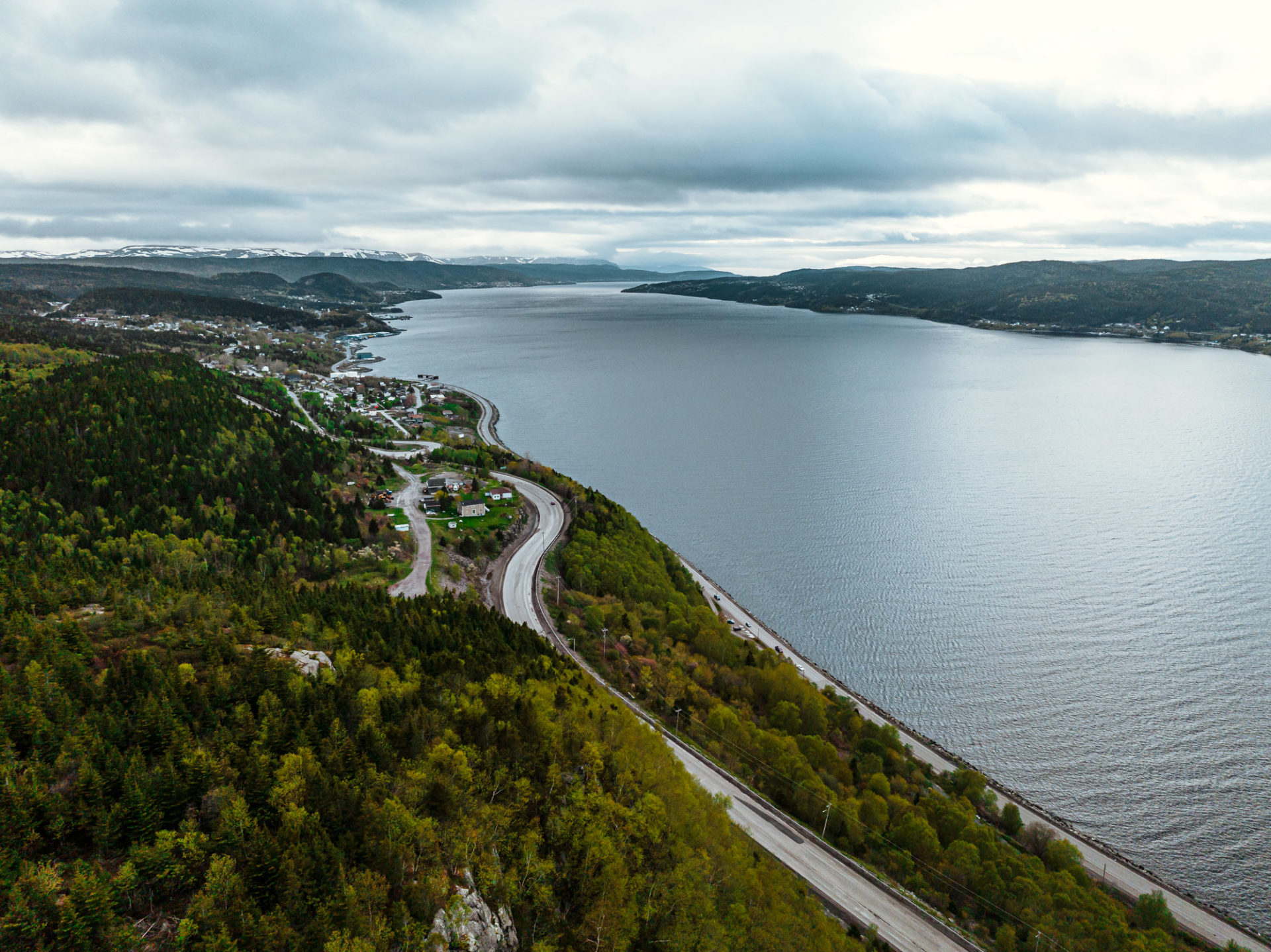
Traveling Soon? Here is a list of our favourite travel providers and accessories to help get you ready for your upcoming trip! Book Your Accommodation HERE Search for Great Tours HERE Get a Car Rental HERE Buy Travel Insurance HERE See our Favourite Camera Bag HERE Grab a Reusable Water Bottle HERE or a Filtration Straw HERE Order an eSim HERE
Where is Newfoundland?
Newfoundland is a large island off the east coast of Canada and the most popular part of the province of Newfoundland and Labrador.
Newfoundland occupies an area of 108,860 square kilometres (42,031 sq mi) and is the world’s 16th-largest island and Canada’s fourth-largest island.
Best Time to Visit Newfoundland
There is no denying that summer is the best time to visit Newfoundland . The months of July and August are known as high season in Newfoundland and for good reason. It’s the only time of the year when the weather is warm and relatively dry when facilities and attractions across the country are fully opened and the region comes alive with activities.
But don’t be alarmed, even in the high season, it is unlikely that you will EVER find Newfoundland crowded or too touristy. Expect average summer temperatures of 16°C (61°F) during the day and around 10-15°C at night. On the warmest days of the year, the temperature may reach 25-28°C (79-82 °F) in the far north, 30°C (86 °F) in inland areas, and only 24-25 °C (75-77 °F) in the southern coasts. Summers are also often affected by fogs and mists.

Shoulder season – June and September is a good alternative to visiting Newfoundland in the summer. The weather is relatively warm with temperatures ranging from 10-15°C during the day and 5-10°C at night. June is a particularly popular time of the year to visit if you are interested in seeing icebergs, as this is when icebergs are most frequently seen along the coast of Newfoundland.

It is precisely for this reason that we decided to visit Newfoundland in June. We were lucky enough to catch a couple of icebergs and enjoy mostly dry weather ranging from 10-20°C.
One thing we quickly learned through our 3 weeks in Newfoundland is that the weather in this region is constantly changing. Strong winds and dense fog are common occurrences in Newfoundland, even in the summer months. So no matter what time of the year you decide to visit, be sure to pack lots of layers, jackets and even hats and mittens. Trust us, you’ll need them, even in the summer months!
How to Get to Newfoundland and Labrador
Newfoundland is an island and is not connected by road to the rest of Canada. Labrador can be reached by road from Québec but for the purpose of this article, we’ll just be focusing on Newfoundland since we didn’t get a chance to visit Labrador during our trip.
Flying is the quickest and easiest way to reach Newfoundland from the rest of Canada or internationally.
St John’s International Airport ( YYT) serves as the main hub of Newfoundland. Flying time to St. John’s is 1.5 hrs from Halifax, 3.5 hrs from Toronto, 6 hrs from Edmonton/Calgary, and about 5 hrs from London, UK.
Other airports in Newfoundland are Gander International Airport (YQX), Deer Lake Airport (YDF), and St. Anthony Airport (YAY) . These smaller regional airports offer good domestic flight options connecting Newfoundland with Ontario (Toronto, Kitchener, Hamilton), Quebec (Montreal) as well as Nova Scotia (Halifax) and Newbrunswick (Moncton). Air Canada, WestJet, Sunwing, Swoop, and Flair Airlines service these airports with daily flights in the summer months.
Another popular way to get to Newfoundland is via ferry. Marine Atlantic ferry offers two routes to Newfoundland, arriving in ports on either side of the island. Both routes depart from North Sydney, Nova Scotia and are fairly long sailings.
- North Sydney to Port aux Basques: The main route sails into Port aux Basques on the southwest coast and operates year-round. The Port aux Basques crossing takes about 7 hours (in good weather) and costs just over CAD $200 for a vehicle and two passengers. This is a great route to take if you want to start your trip in Western Newfoundland.
- North Sydney to Argentia: The other route sails into Argentia, which is on the Avalon Peninsula, about 1.5 hours south of St. John’s. This crossing only runs from June to September and is a much longer journey, clocking in 16 hours on a good day. It costs about double—around CAD $470 for a vehicle and two passengers—but spares the long drive across the island.
Both ferries offer cabin accommodation which we highly recommend, especially for the longer, Argentia crossing. The cabins are similar to what you would expect to see on a small cruise ship. They are equipped with twin beds (2 or 4 depending on the cabin), a small desk, a bedside table and a private bathroom with a sink, toilet and even a shower with hot water. Having a cabin for the crossing makes the experience a LOT more enjoyable, as it allows you to arrive at your destination refreshed. Book ahead! Cabin spots are limited and sell out fast!
During our visit, we traveled around Newfoundland in our campervan, arriving on the island via Port Aux Basque ferry from Nova Scotia and departing on the Argentia ferry a few weeks later. We booked too late to get a cabin for our 7-hour sailing to Port Aux Basque, which made the crossing quite uncomfortable. The reclining seats on board were very comfortable and while the experience was much better than traveling on an overnight flight, we didn’t get much sleep and were exhausted upon arrival.
On the way back, we booked a private cabin on the Argentia – North Sydney ferry and loved the experience. We had a 4 berth cabin with a private bathroom, plugs, and a small desk. 16 hours flew by and we got a great night’s sleep and arrived in Nova Scotia fully rested and ready to take on the day!
How to Get Around Newfoundland
Most people don’t realize how big Newfoundland actually is. It takes nearly 10 hours to travel across the island so we highly recommend having your own vehicle.
By Car: Renting a car is a great way to explore the island on your own schedule. Remember, many of the best places to visit in Newfoundland are off the beaten path, so having access to your own vehicle allows you to explore beyond the key transportation hubs.
With an RV/Campervan: RVing in Newfoundland is a popular way to explore the region. With many campgrounds and RV parks and plenty of wild camping spots, there is no shortage of RV/Camping accommodation options in every corner of the region. You can bring your own RV/Campervan to Newfoundland like we did, or rent one upon arrival into Newfoundland.

Top Things to do in Newfoundland, Canada
Now that we’ve gotten the planning portion of the trip out of the way, lets focus on all the amazing things you’ll be able to see and do in Newfoundland. If you’re wondering what to do in Newfoundland, these popular and one-of-a-kind Newfoundland attractions can’t be missed.
Gros Morne National Park
Western Newfoundland
Gros Morne National Park is a UNESCO World Heritage Site and is an absolute must place to visit in Newfoundland and Labrador. It’s a favourite for outdoors lovers and adventure seekers. The vast landscape of Gros Morne National Park formed over hundreds of millions of years, shaping a terrain that today looks otherworldly.
The park spans 1,805 square kilometres and boasts a variety of landscapes including barren Tablelands, moody fjords and Newfoundland’s second highest peak – Gros Morne Mountain.

Things to Do in Gros Morne National Park
Hike the Tableland Trail (4 km / 2.5 mi) – The Tablelands can’t be missed! This easy loop travels along the famous red rocky Gros Morne Tablelands landscape and is a must hike for anyone visiting the National Park.
Hike to Gros Morne Mountain (17km/10.5 miles return) – the trail to Gros Morne Mountain follows the path to the peak of Gros Morne, sitting at 806m above sea lever. You can hike this trail just to the base of the mountain (first 4.5km) or all the way to the top with 500m in elevation gain. This difficult hike through the beautiful Arctic-alpine terrain rewards you with views of the Long Range Mountains and the Ten Mile Pond gorge. Note: To protect wildlife during critical weeks of growth and reproduction, the mountain portion, from the base platform, is closed to hikers from May 1 until the June 23rd.
Enjoy other trails: There are a number of other popular hiking trails in the park including the Lookout Trail (5 km / 3.1 mi), which offers panoramic views, and the Eastern Point Trail (2.4 km / 1.5 mi) which follows the cliffside relief.
Explore Backcountry Trails: For those with more time in the park, there are some amazing backcountry hiking trails to tackle. The most famous of them is the Westernbrook Pond Fjord Trail (7-8kms) and the Long Range Traverse (3-4 nights, 35 km) multi-day trek that requires thorough preparation and previous backcountry hiking experience.
Go kayaking at Norris Point – We went on an amazing paddle through the Bonne Bay fjord with Gros Morne Adventures . The double-armed fjord has so many beautiful nooks and crannies to explore from the water. We loved getting an alternative view of the National Park and the Tablelands from the water and were lucky enough to even spot a whale while on the water! If you make your way to Bonne Bay, be sure to also stop in at the Bonne Bay Marine Station to learn more about whales and other marine life in this region.

Boat through ancient fjords at Western Brook Pond – After a 3 km (1.8 mi) stroll through the marshlands, hop aboard a boat and sail through a glacier-carved fjord. Reserve a spot ahead of time via Parks Canada or drop by the ticket office on Pond Road in Rocky Harbour. The boat tour offers spectacular views of the fjords in the Westernbrook Pond and a peak at some of the tallest waterfalls in eastern Canada.
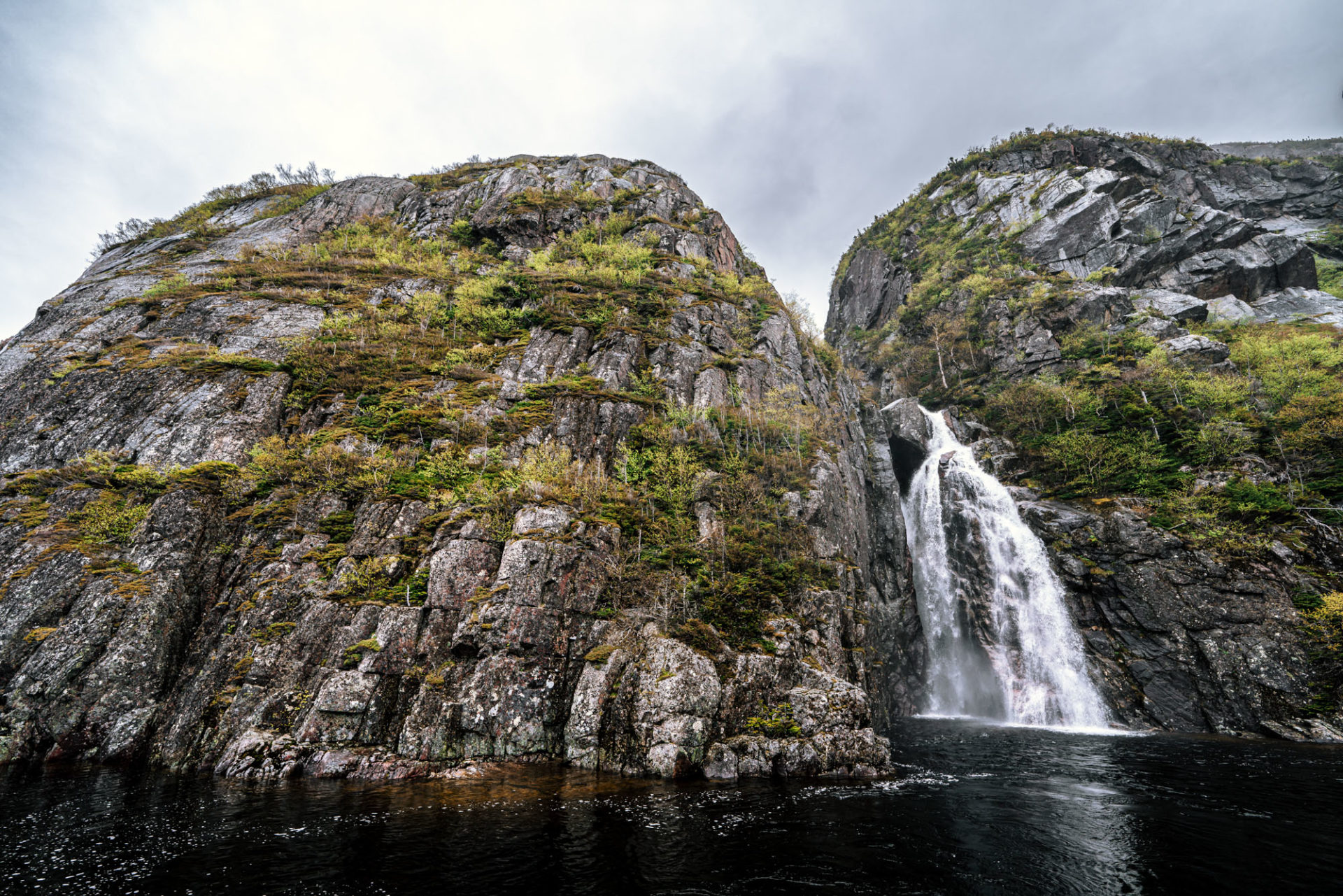
Where to Stay in Gros Morne
The Hew and Draw Hotel – This family-owned hotel is in Corner Brook and features unique suites that pay homage to the region. Our room had beautiful finishes and featured custom-printed wallpaper of the Newfoundland marten. The hotel has a restaurant, brewery, and rooftop patio with hot tubs available to guests on a first-come-first-serve basis!
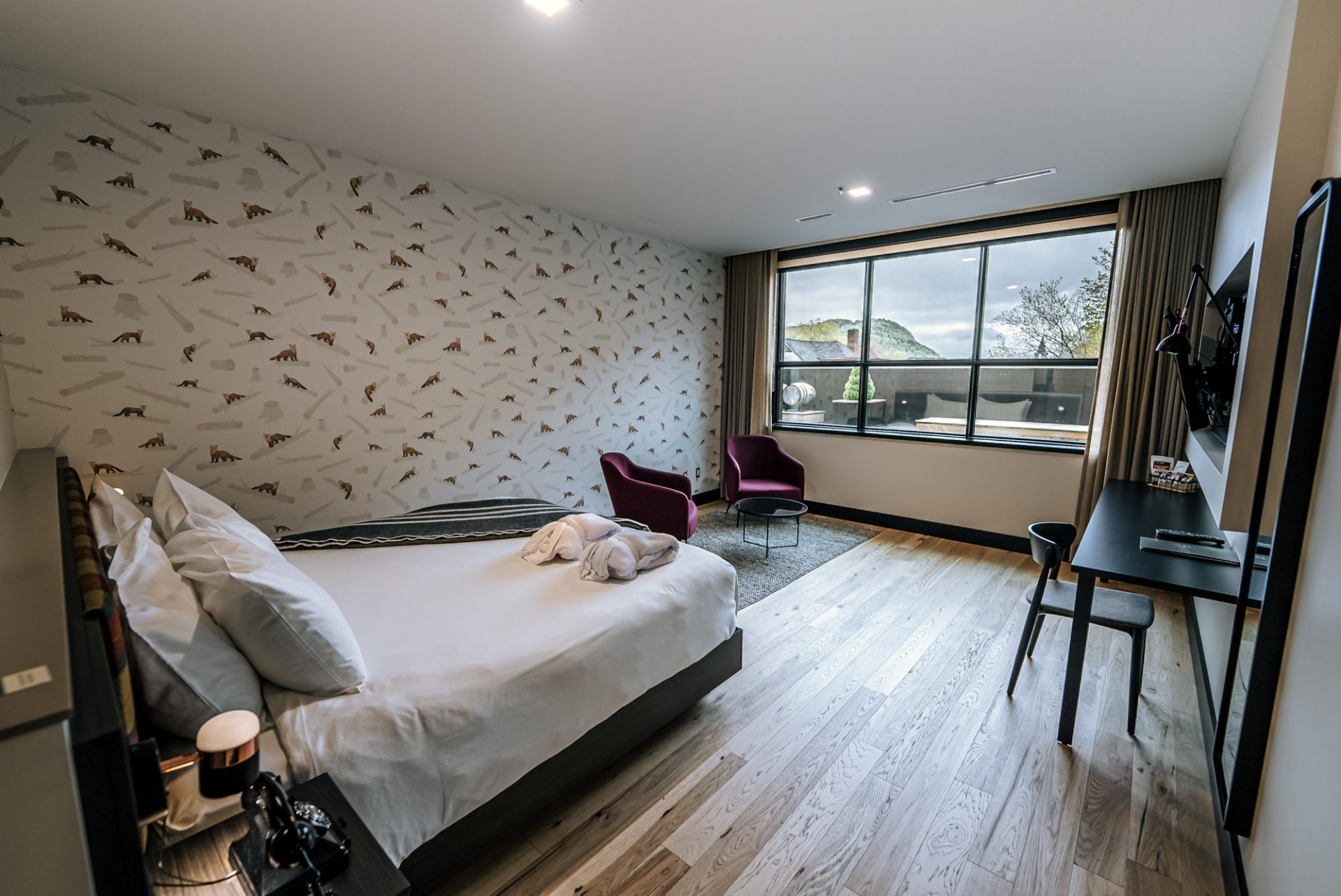
Water’s Edge RV Park – Located on the shores of the Bonne Bay fjord, this Gros Morne RV Park is an ideal place to stay if you are traveling in an RV/Campervan. It has several tent and RV sites right at the base of the Tablelands. The sites overlook the water and offer an opportunity to spot whales and other marine life from your RV.

Inside Gros Morne National Park – There are 5 campgrounds within the park, most opening from May/June – September/October. Berry Hill and Shallow Bay are the largest with over 60 campsites each and oTENTik options. There’s also Trout River, Lomond, and Green Point. We stayed at Green Point Campsite and found it to be conveniently located close to hiking trails and the Western Brook Pond. Amenities were great and our campsite was lush and private.
Viking Trail & St Anthony
Icebergs, whales, and Viking history—the northern tip of Newfoundland is a special place offering all of that and more to the adventurous travelers that make their way to the tip of Newfoundland. Drive the Viking Trail north from Gros Morne to St. Anthony to reach the top end of Iceberg Alley. Keep your eyes peeled for whales as you soak in the sights of quaint fishing villages and classic coastal lighthouses.
Things to Do in St. Anthony
Visit L’Anse aux Meadows National Historic Site – L’Anse aux Meadows is a Viking settlement and one of two UNESCO World Heritage sites in Newfoundland. It’s the site of the first known evidence of Europeans in North America. Now, it’s a cool place to explore and try your hand at blacksmithing or basketweaving.
Go iceberg chasing – Whether from land or sea, watch for icebergs as they break off of Greenland and follow the Labrador current down the coast. You can track icebergs via Iceberg Finder and see what icebergs can be found along the Newfoundland coastline using the Iceberg Finder map .
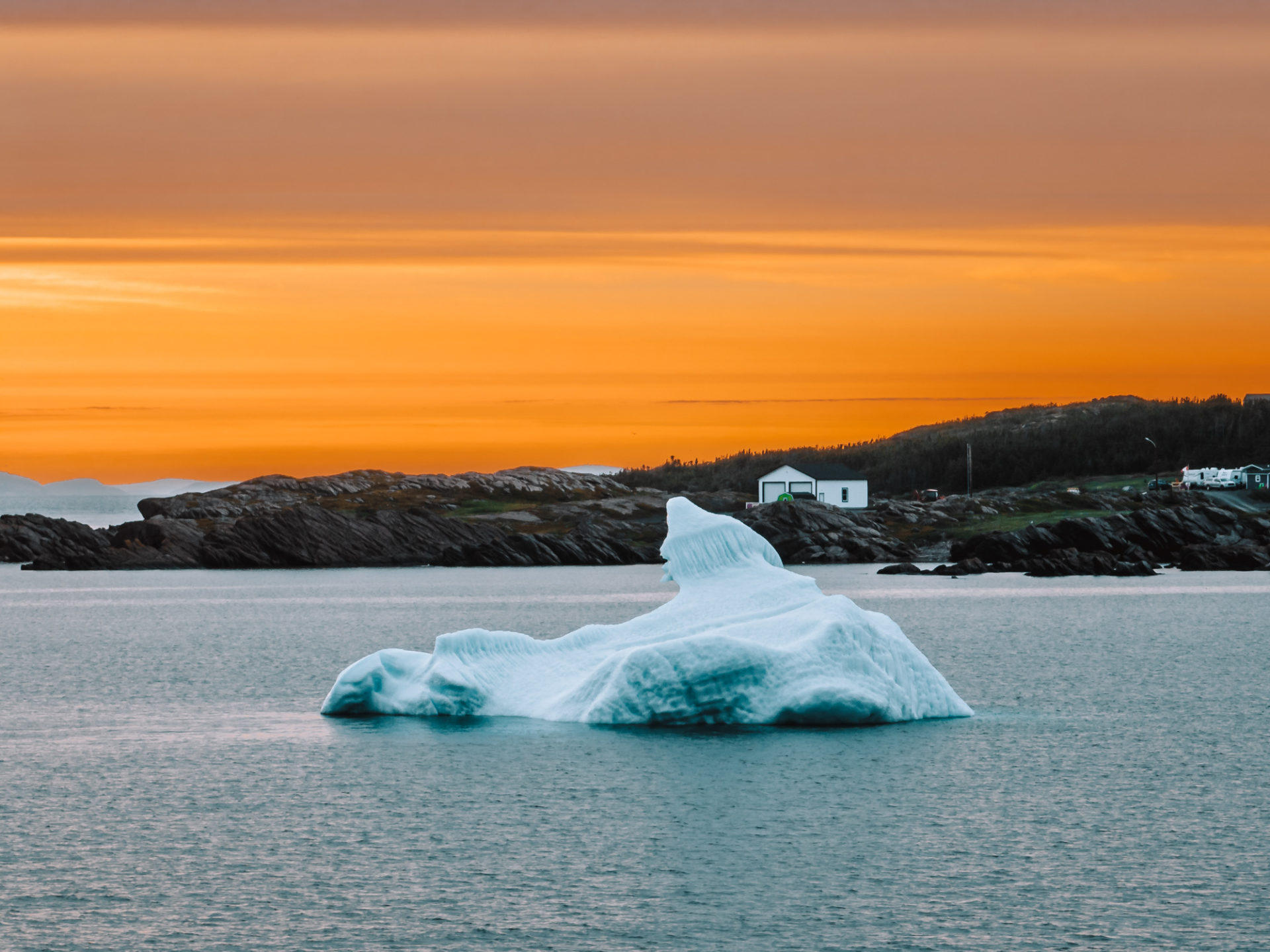
Look north to see Labrador’s lengthy coast – We didn’t get a chance to touch ground in Labrador but Newfoundland’s Northern Peninsula gets pretty close. You may be lucky enough to catch views of Red Bay, Belle Isle, and Battle Harbour, which is the salt fish capital of Labrador.
Where to Stay in St. Anthony
- Quirpon Lighthouse Inn – Stay in a historic lighthouse from the 1920s complete with a whale and iceberg viewing station.
- Grenfell Heritage Hotel and Suites – Conveniently located right in town, this year-round hotel offers ocean views and great local tours.
Alexander Murray Hiking Trail
Central Newfoundland
This 8.5 km (5.3 mi) loop is considered one of the best hikes in Central Newfoundland. The hike takes about 3 hours to complete and offers spectacular views of the lakes and forests in the Green Bay area. There is a beautiful waterfall you can check out along the way and picnic tables at the top – an ideal spot for a picnic lunch with a view! The trail is generally flat aside from the 2,200 stairs to get to the top!
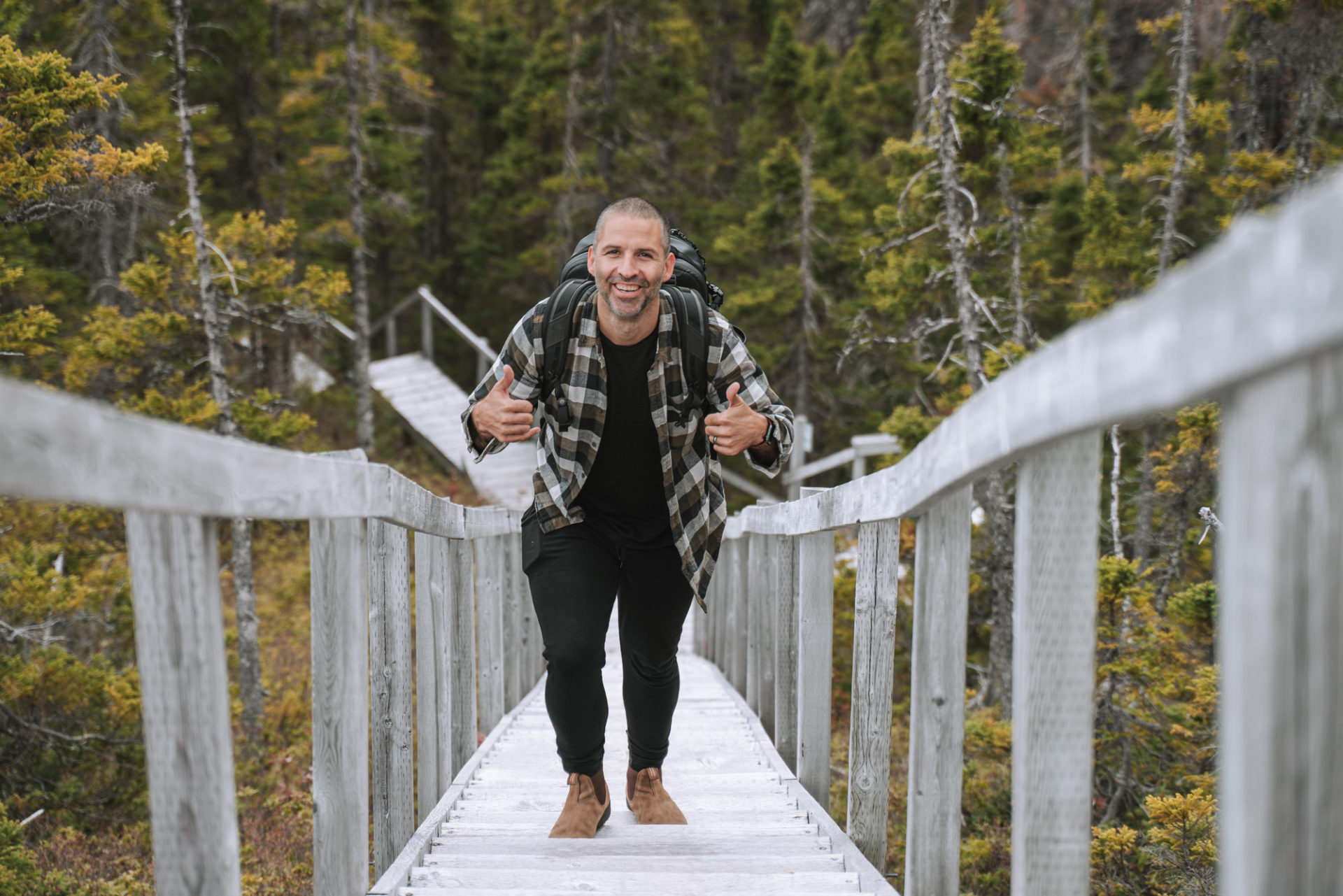
Other Things to Do in Kings Point/Springdale
Go fly fishing – If you want to try your hand at fishing while in Newfoundland, the Indian River is an excellent spot. Starting from about mid-June, Atlantic salmon and trout come into these waters for their annual spawning season, so it’s the perfect time to head out and do some fishing. Keep in mind as a visitor out of province, you’ll need to buy a salmon license and go out with a certified local guide. We recommend Shawn from the Indian Falls Chalets in Springdale who was amazing at not only sharing his knowledge of the best spots to fish in the area but also teaching us some fly fishing techniques.
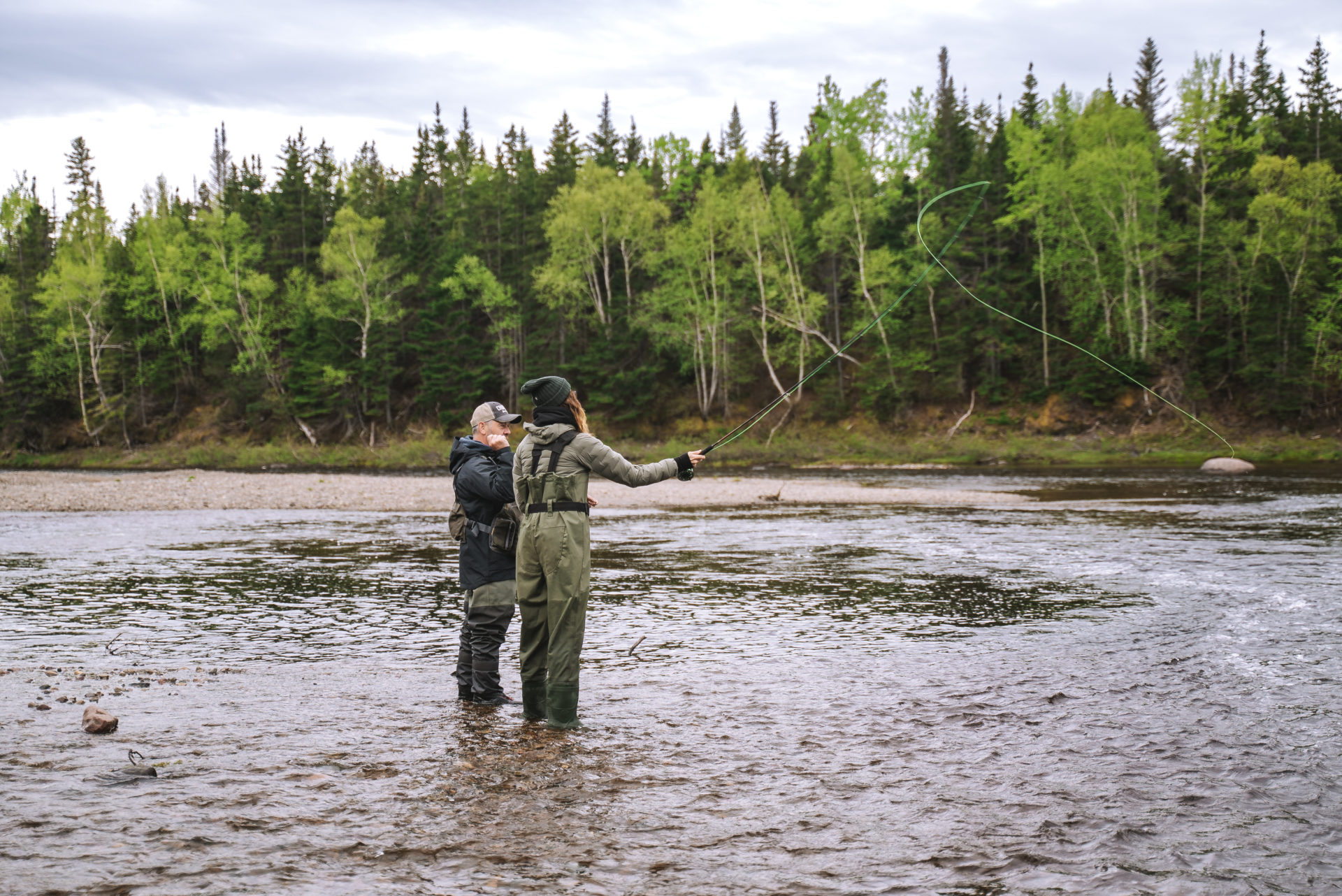
Learn how to smoke salmon – We didn’t have any luck catching our own salmon, but we learned the ins and outs of the smoking process during the Smoked Salmon Workshop with Shawn. His smoked salmon was delicious and paired well with a glass of wine overlooking the rapids
Explore the Indian River Walking Trail – This easy 5.6 km walking trail winds along the river where you can catch some birds and ducks and other wildlife. We didn’t see any moose but we’ve heard they are often seen on the trail.
Where to Stay in Springdale
Indian Falls Chalet – These beautiful self-catering chalets offer the perfect place to hang out and recharge after a day of fishing adventures. The modern chalets have everything you need for a comfortable stay, including comfortable beds, a fully stocked kitchen and even a washer and dryer. The chalets serve as a great launch point to explore the area.

Grand Falls-Windsor
Grand Falls-Windsor, located on the edge of the Exploits River, is a great place to go whitewater rafting in Newfoundland. We joined Rafting Newfoundland for a fun morning of rafting on their Badger Chute rafting adventure. This is their most popular trip! It’s medium intensity but has low chances of falling out (perfect for when the river is still very cold) but offers plenty of fun and some exciting rapids. They also offer an Adventure Trip and an Extreme Trip perfect for those looking for some extra adrenaline or an excuse to jump into the river along the way!
Other Things to Do in Grand Falls-Windsor
Learn about salmon at the Salmonid Interpretation Centre – Watch wild Atlantic salmon travel through the Exploits River with conservation in mind. Here, you can enjoy an underground observation area and learn all about salmon conservation. A fascinating visit!
Dine at Third Place Cafe next to the Salmonid Interpretation Centre – the cafe overlooks the dam and offers a brunch/lunch menu featuring burgers, salads, and breakfast specialities. Try their breakfast poutine!
Where to Stay in Grand Falls-Windsor
Brookdale Inn & RV Park – A lovely family-owned and run Inn with an onsite RV park, suitable for those traveling with an RV/campervan or those looking for a hotel room in the area. The Inn is a labour of love built by the family and a stay with them has that family feel that you won’t find at cookie-cutter hotels in town. There is a pool on-site and fire pits, but the most unique feature of the property is their Percherons – a magnificent breed of draft horses.
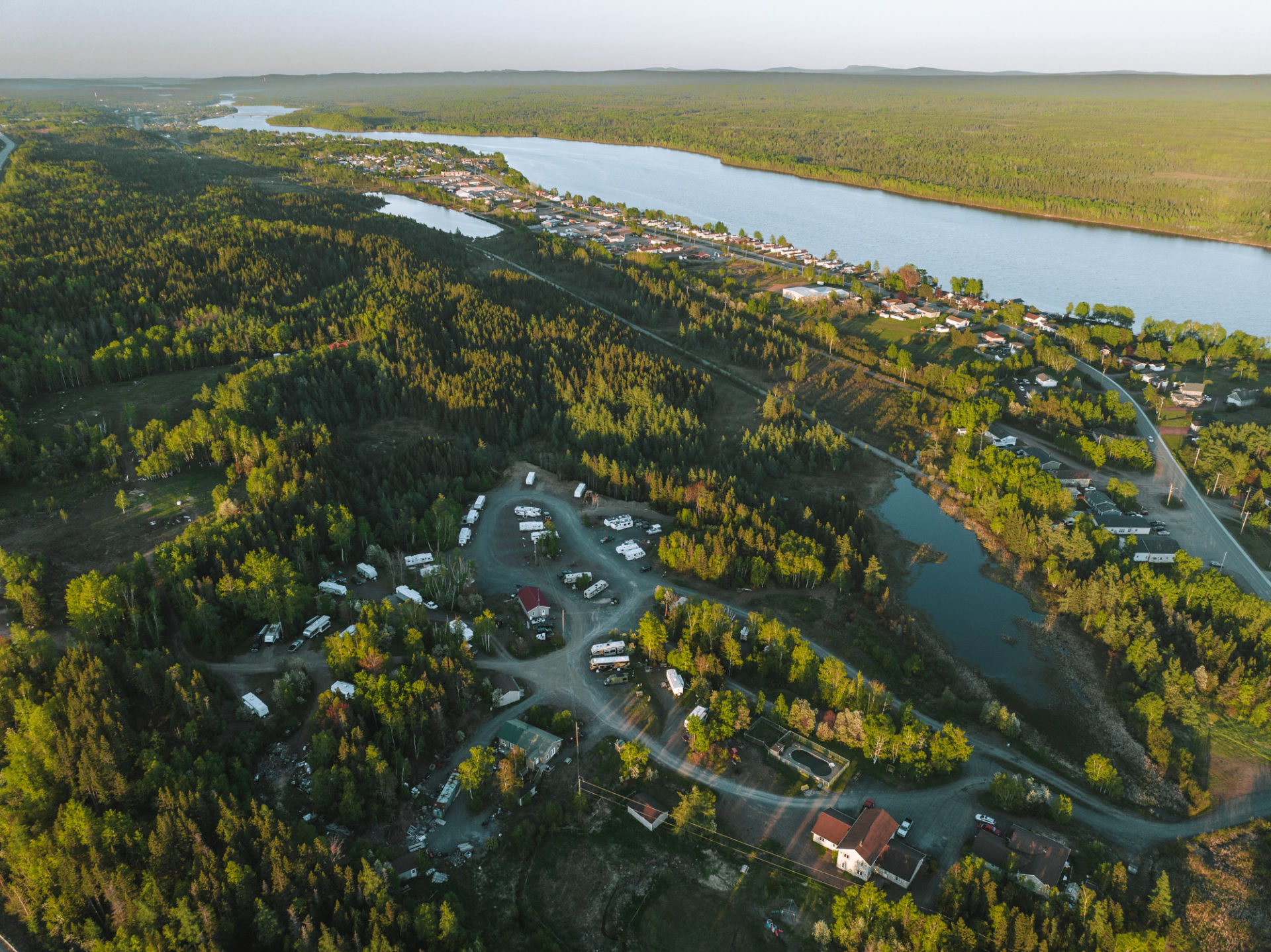
Twillingate
The Iceberg Alley in the Atlantic Ocean is a true icon of tourism Newfoundland. It’s on every list of the 10 best things to do in Newfoundland. But if you can’t make your way up to Iceberg Alley in Western Newfoundland, you can still experience the magic of icebergs in Twillingate, the iceberg capital of Newfoundland. The colourful fishing town is one of the quintessential Newfoundland points of interest, with rocky shores and country roads.
Things to Do in Twillingate
Go on an iceberg boat tour – Seeing icebergs from the water is even cooler than seeing them from land. Get up close and personal with these magical bergs on a boat tour through the Alley.
Visit Long Point Lighthouse – The lighthouse looks over Notre Dame Bay and is an amazing lookout point for icebergs and whales.
Where to Stay in Twillingate
Whitsha Inn B&B – Stay at an oceanfront inn close to the coast and local attractions. They don’t use single-use plastics and run off of fully renewable energy.

Fogo Island
Fogo Island is definitely one of the most special places to see in Newfoundland. A small community rejuvenated by Fogo Island Inn, this island is as rich in culture and stories as it is in the beautiful scenery. Many wrongly assume that the only reason to visit Fogo Island is to stay at the famous Fogo Island Inn, but after spending 3 beautiful days exploring Fogo Island and not staying at the Inn, we can confirm that this stop is well worth it.
To get to Fogo You’ll have to take a ferry from Farewell. It’s a quick 75 min sailing to arrive at this rocky barren island with the most inspiring landscapes.
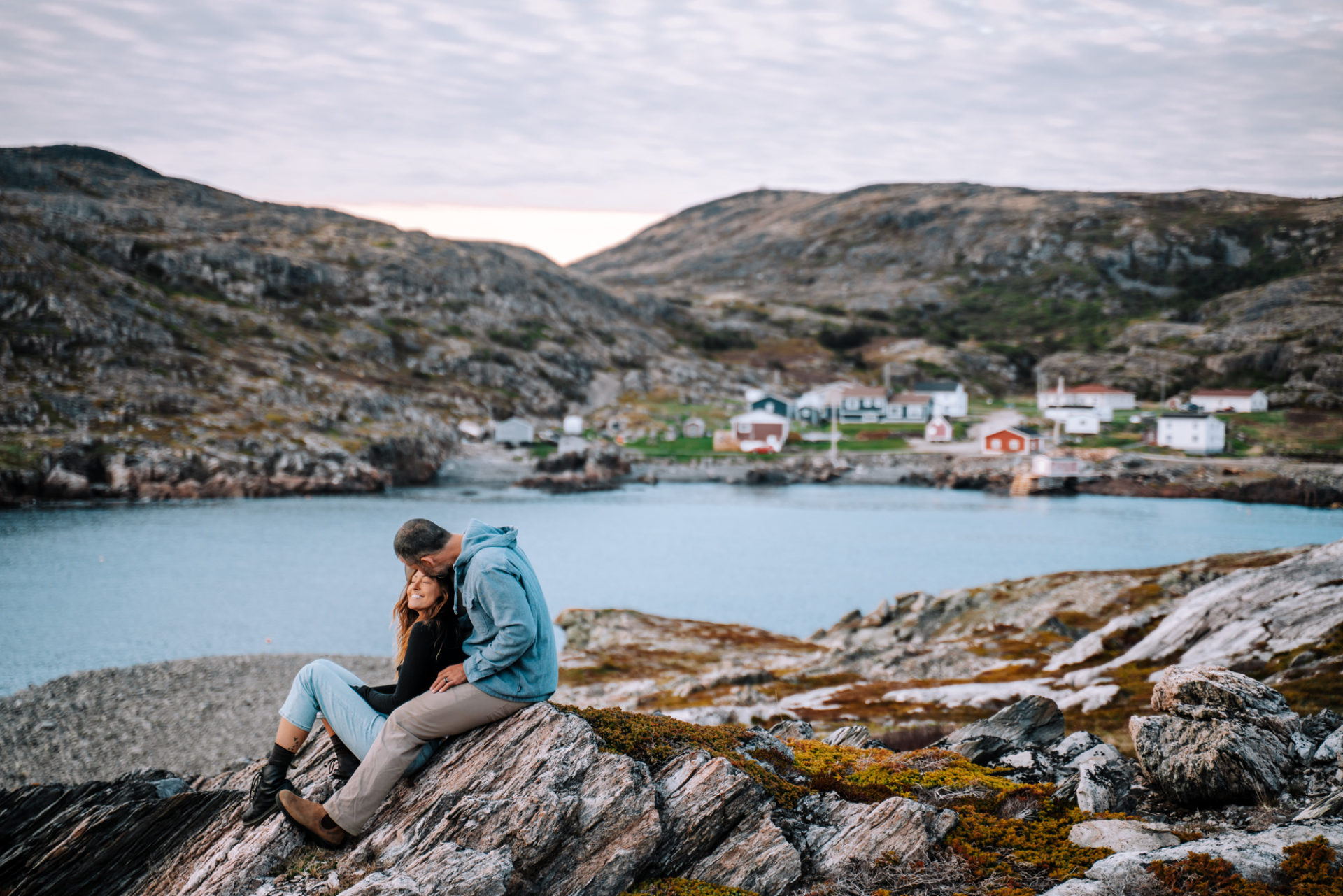
Things to do in Fogo Island
Visit Living Water Farms – Since Fogo isn’t exactly a hotspot for agriculture, the folks at Living Water Farms have shifted to vertical farming. They now produce lettuce, kale, arugula, and other greens for the community of Fogo Island and beyond. Stop by their shop for a tour of the hydroponic farm or to pick up a pack of greens for your next meal.
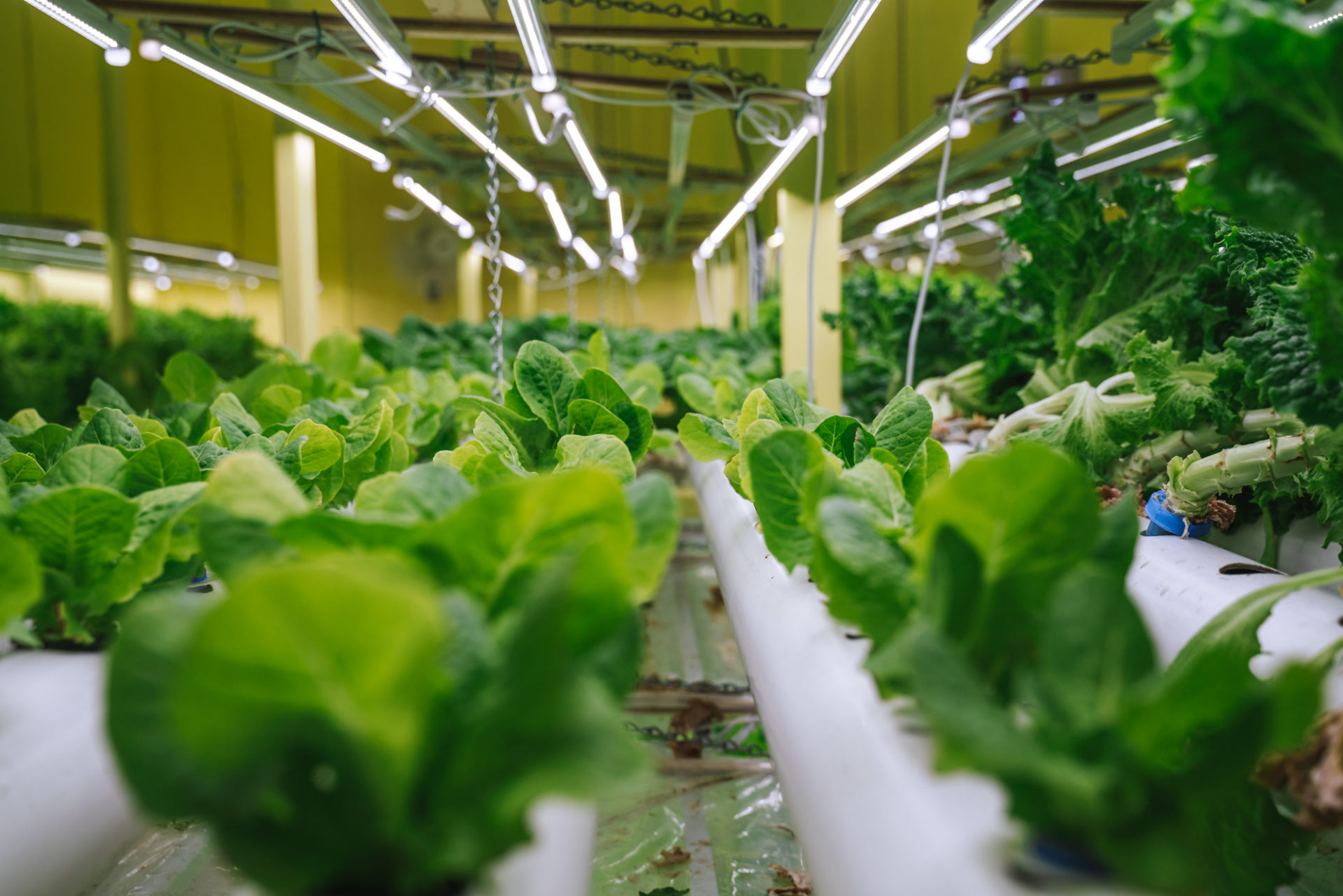
Hike Brimstone Head at sunset – Brimstone Head is an incredible place to catch a sunset on Fogo Island. Take the 2 km (1.2 mi) trail up the stairs to a gorgeous lookout point that is known as one of the four corners of the earth.
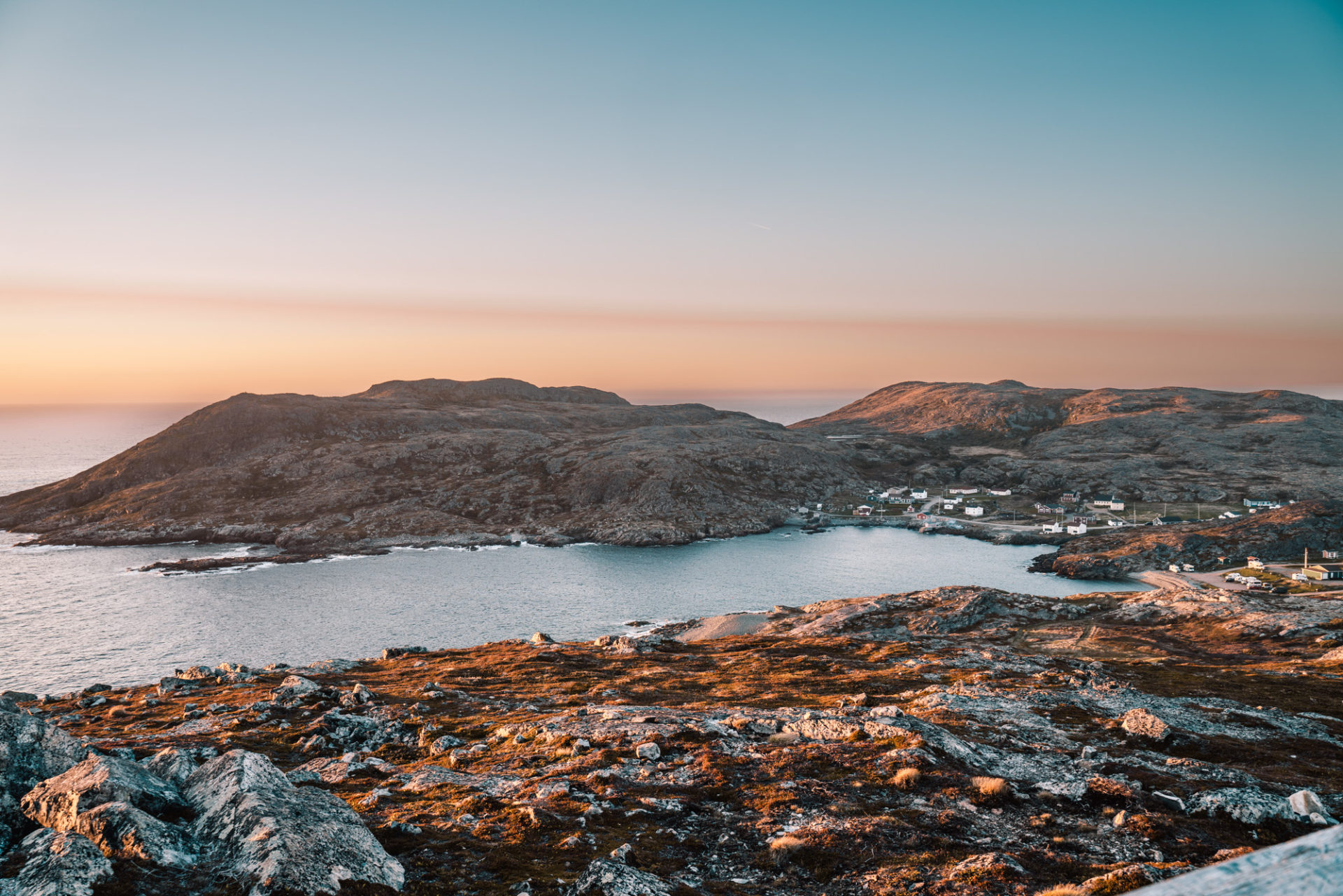
Have cod at the Cod Jigger Diner – It’s no surprise that Newfoundlanders and particularly residents of Fogo Island have survived for generations on cod and potatoes. There is no better place in town to sample some freshly caught local cod than at the Cod Jigger Diner.
Check out Arts & Crafts shops – Mona’s Quilt & Jam Shop and Herring Cove Art Gallery and Studio were our favourites. They sell Fogo Islands’ famous quilts along with other arts and crafts hand-made in Fogo.
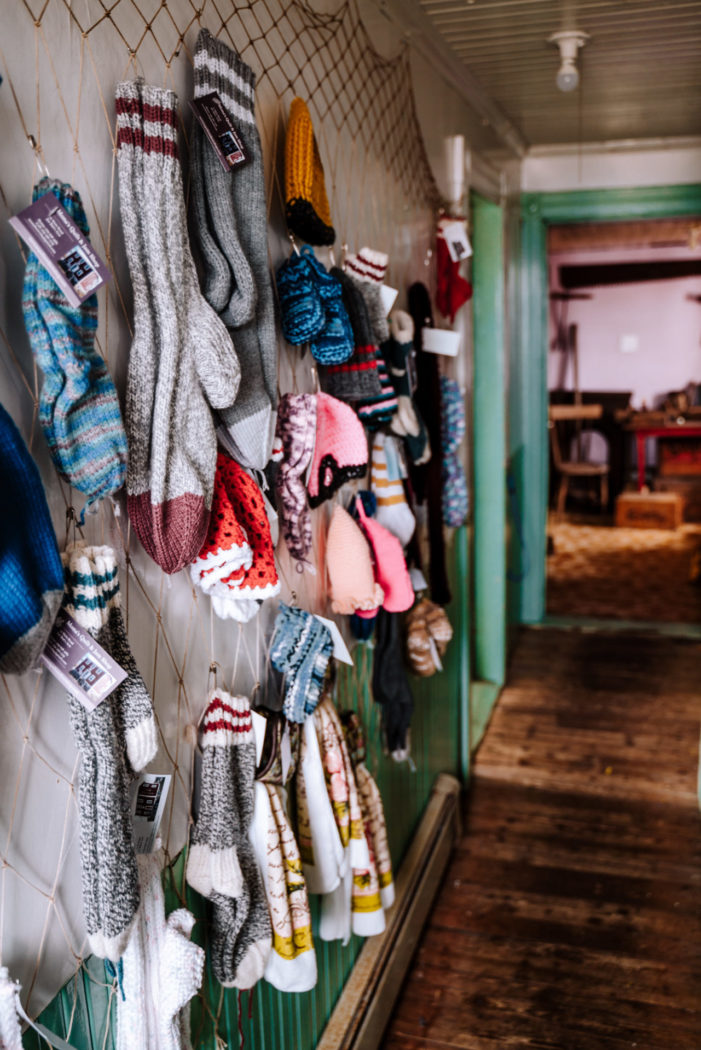
Go on a walking tour of Tilting – A visit to Tilting is a must for anyone coming to Fogo Island and there is no better way to experience this small community than on Al’s Walking Tour . As someone who was born and bred in Tilting, Al is full of fascinating stories and tales about life in Tilting and gives you an opportunity to see the island from a local’s perspective. Hands down our favourite Fogo Island experience!
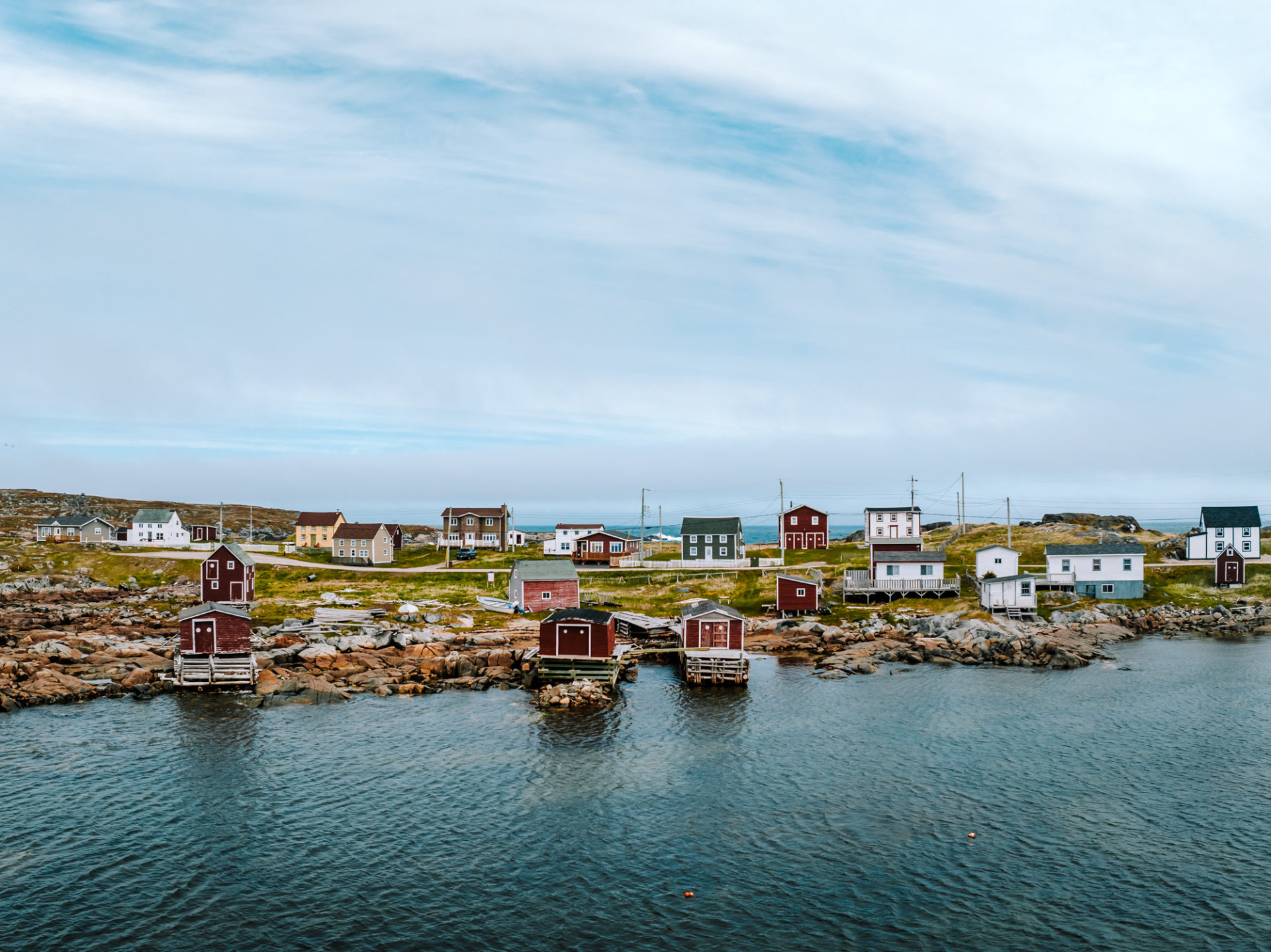
Where to Stay on Fogo Island
Fogo Island Inn – A truly beautiful luxury hotel that operates as a social enterprise plays a huge role in the overall economic development of this small community. The Fogo Island Inn has graced the covers of many architecture magazines and offers an all-inclusive package with dining, tours and accommodation.

Brimstone Head RV Park – A great campground for tents and RVs located at the base of Brimstone Head. One of the most picturesque campgrounds we stayed at in Newfoundland. Perfect spot to catch a sunset!

Change Islands
We found the small islands and outport communities to be some of the most beautiful places in Newfoundland. The Change Islands are another set of islands located right next to Fogo, known and loved for their slow pace of living, beautiful scenery and for the Newfoundland Ponies. To get to Change Islands, take the Fogo Island ferry departing from the same port in Farewell. The ferry stops at Change Islands en route to Fogo and on the way back.
Things to Do in the Change Islands
Visit the Newfoundland Pony Sanctuary – The Newfoundland Ponies are a unique breed of horses you can visit in the Change Islands. The sanctuary is run by Netta, who works day in and out to look after the 11 ponies on site. Her work is unfunded by the government and is supported solely by visitor contributions. So stop in, meet the ponies, tour the barn, and learn all about this rare breed.
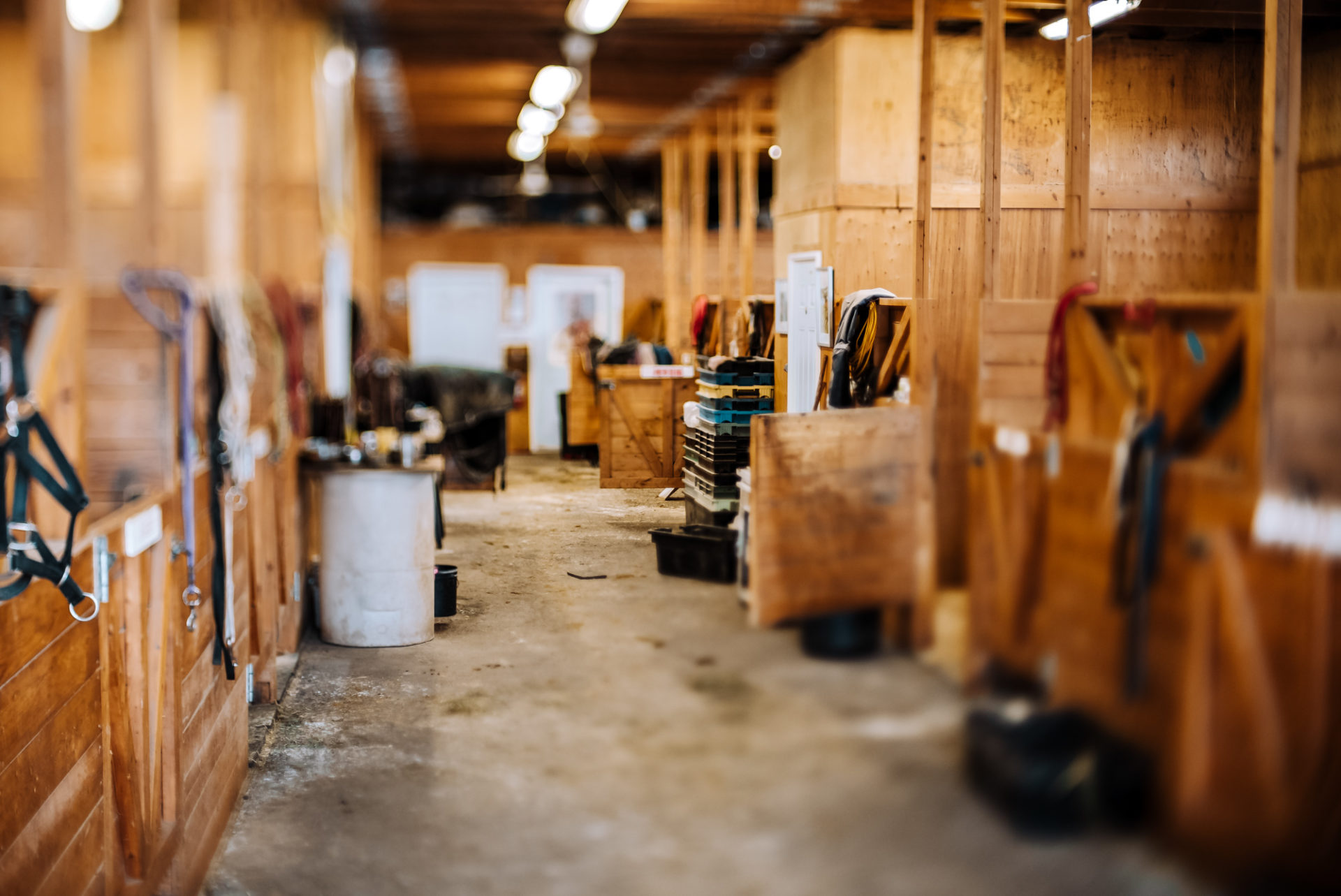
See the quirky oddities at the Olde Shoppe Museum – Explore the endless collection of oddities owned by Pete Porter. Play the accordion, listen to a jukebox, or just sit back and hear some of Pete’s unique stories. Pete is an incredible character so a visit here is worth it just to hear his stories!

Walk the Squid Jigger’s Trail – Walk the scenic yet rugged 3.5 km (2.2 mi) trail along rocky volcanic outcrops. There are several lookout points and coves to explore and the views of the coastline beneath you is truly breathtaking.

Where to Stay in the Change Islands
Seven Oakes Island Inn – Step back in time and stay at this restored 1800s fish merchant’s home. The lovely owner, Beulah , has been running the Inn for over 30 years but offers the same friendly and loving experience today as she did back in the day. Staying at the Inn is like visiting your favourite grandmother in the country. Expect a homey, welcoming stay with a home-cooked meal and lots of chats over a cup of tea.
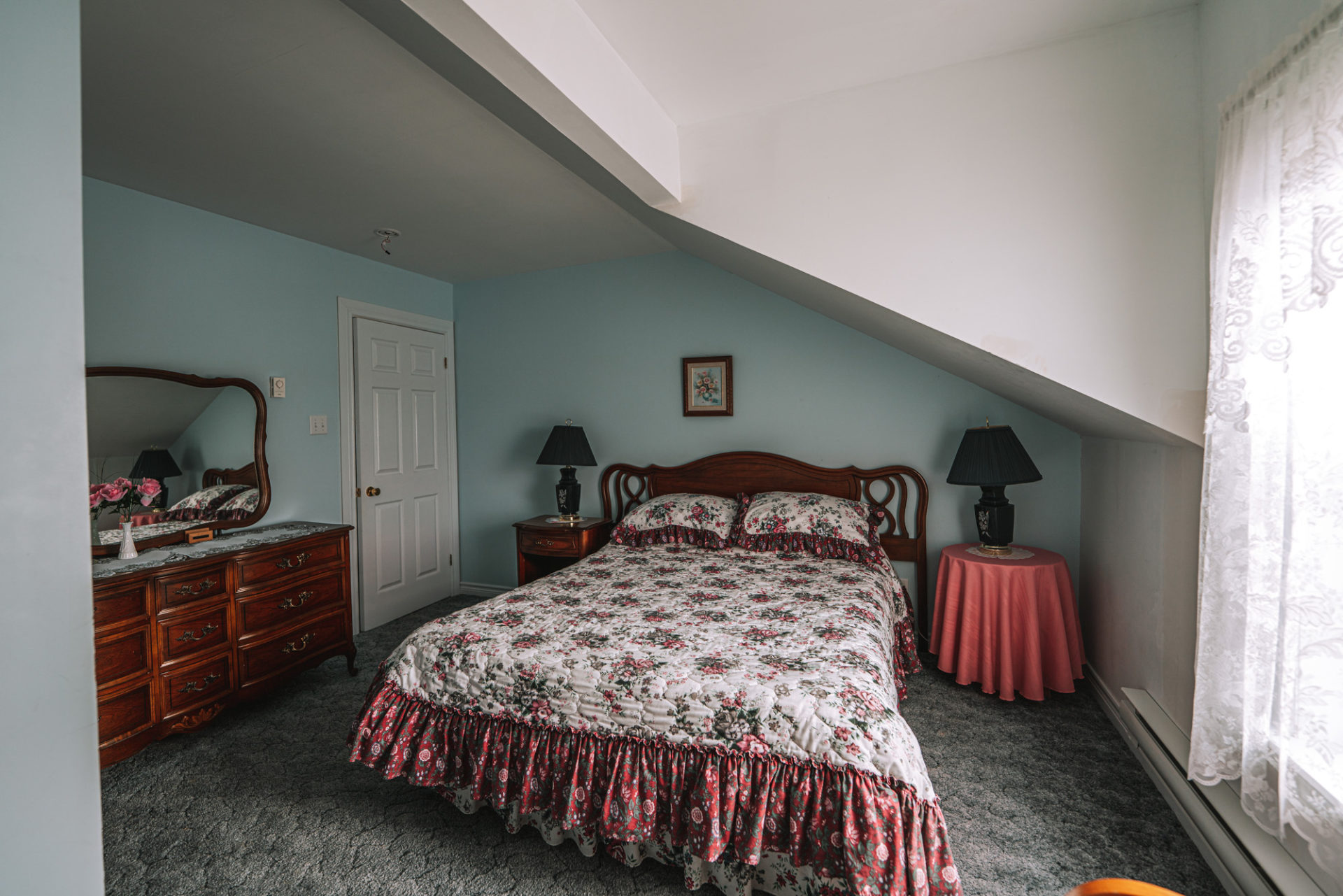
Gander & Around
Once known as the “Crossroads of the World,” due to its perfectly positioned airport, Gander is a small town and friendly community that continues to be an important transportation hub for all of Newfoundland. Aside from learning about its deep aviation history and an incredible story of the town’s hospitality on 9/11, there isn’t much to do in Gander. But the Kittiwake Coast, which spans from Terra Nova National Park in the south to the town of Lewisporte in the north is worth exploring.
Hop aboard with Hare Bay Adventures for an incredible adventure along the Kittiwake Coast. They offer a variety of customized tours including Whale and Bird Watching Tour, Resettlement Islands Tour, Fishing and much more! We were super lucky to jump on an afternoon boat adventure with them and a chance to see whales, and icebergs and have an amazing lobster cook-up served to us on a beautiful private beach in the bay. A true Newfoundland experience that became one of the most memorable experiences of our trip.
Stay in the wild in their incredible wilderness domes coming to market this summer. Positioned in remote but beautiful locations just a boat ride away, these domes offer the ultimate glamping experience and a chance to experience the beauty of this region at its finest.
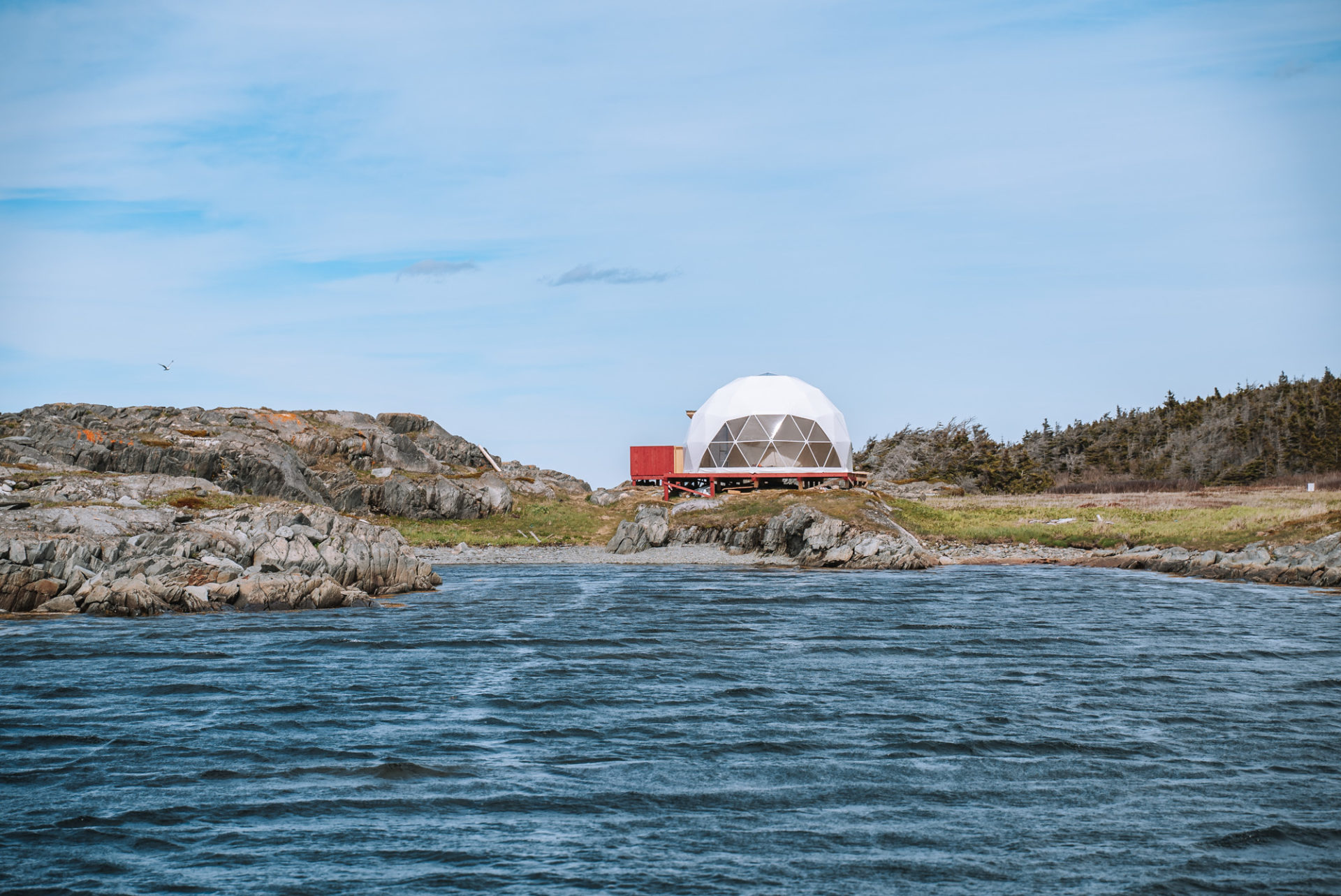
Things to do in Eastport
- Explore the new Damnable Trail Hiking System – This newly developed network of trails takes you along the paths of historic settlers around the Eastport Peninsula.
- Enjoy the sand at Eastport Beach and Sandy Cove – Soft sand is a rarity in Newfoundland but Eastport has two white-sand beaches. Walk the boardwalk, lay in the sand, or go for a dip in the ice-cold Atlantic.
- Take a drive to Salvage , a quintessential Newfoundland town on the edge of Eastport Peninsula home to beautiful trails and stunning views of the bay.
Terra Nova National Park
Eastern Newfoundland
When it comes to Newfoundland tourist attractions, Terra Nova is often overshadowed by its west coast cousin, Gros Morne. But, the forested park is well worth a visit, especially if you plan on visiting the eastern part of the province.
What to Do in Terra Nova National Park
Hike the trails – Terra Nova has 80 km of marked and unmarked trails amongst 12 different routes. We really liked the Coastal Trail and Ochre Hill Lookout for sweeping views over the ocean.
See the park by kayak – Seeing the park from a different perspective is always neat after a day on the trails. Kayaking around Terra Nova is beautiful and has good odds of seeing whales and other marine life.
Where to Stay Near Terra Nova National Park
Happy Adventure Inn – The perfect place to stay, tour, and feast on delicious local seafood. The inn has 5 rooms, an on-site restaurant, and offers a number of tours including kayaking in Terra Nova National Park.
Camp in the park – Terra Nova has 2 frontcountry campgrounds, 29 backcountry sites, and over 30 oTENTiks. Newman Sound and Malady Head are the most popular, which you can reserve here .
Bonavista Peninsula
According to the local tale, the Italian explorer Giovanni Caboto (aka John Cabot), exclaimed “O buono vista!” giving the name to the small town of Bonavista, the site of the historic landing in 1497. Over the years, Bonavista maintained a lot of its small-town charm, drawing visitors from all over Newfoundland and beyond to its humble shores.
There are lots to do on Bonavista Peninsula, so be sure to give yourself a few days to explore the region or to spend days soaking in its colourful towns and charms.
Things to do in Bonavista Peninsula
Discover the natural beauty and history of Trinity – Visit the visitor centre to get acquainted with the area and discover its popular Newfoundland sightseeing spots. The historic town is one of the most picturesque in Newfoundland and the kind of place you just want to enjoy for a while. We loved exploring the town of Trinity and wished we spent more time here! It’s a visitor’s favourite!
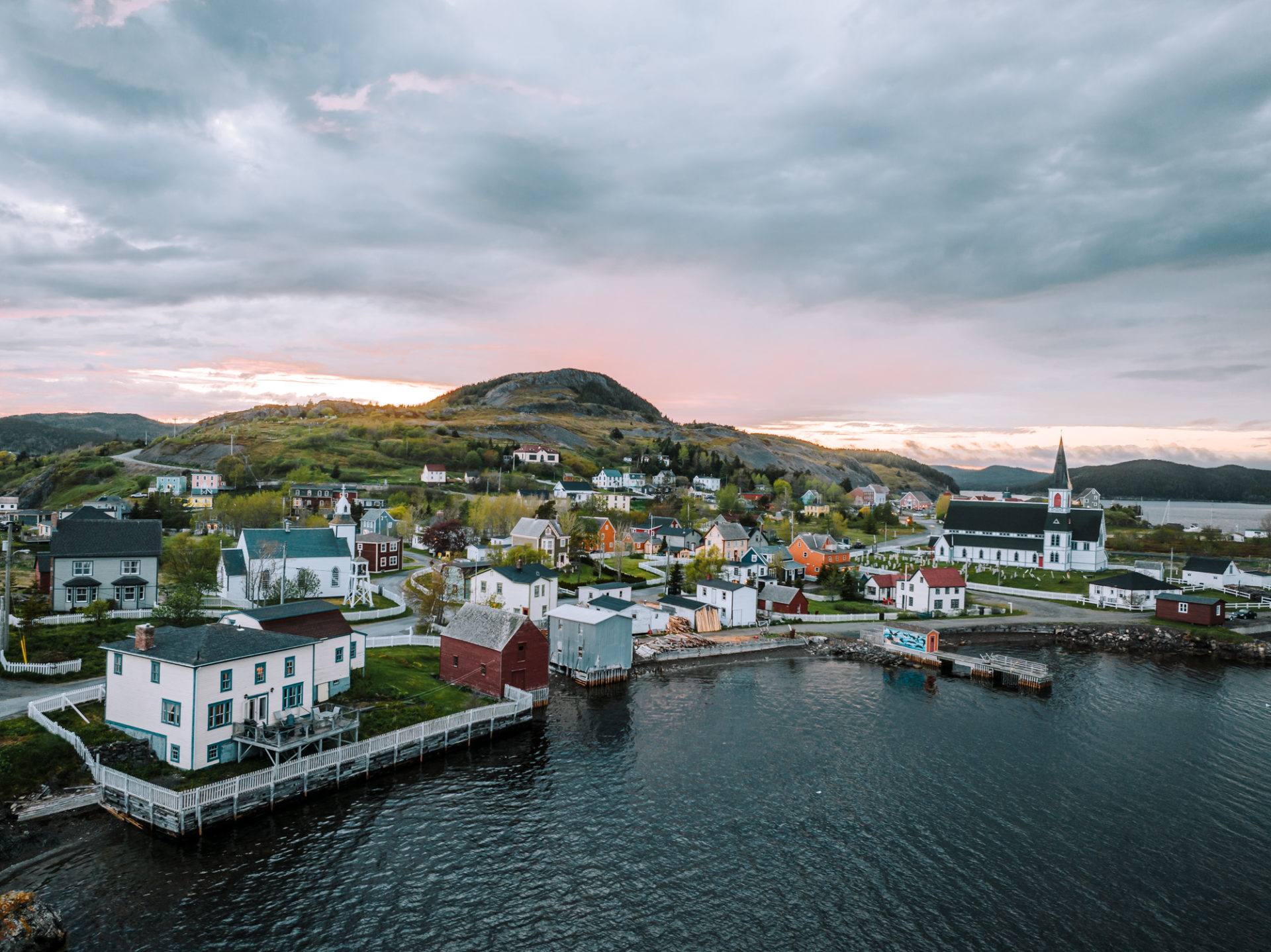
Visit the town of Bonavista – Walk along Church Street, visit Cape Bonavista Lighthouse, and explore Dungeon Provincial Park.
Go on a whale watching tour – Depending on the season, several species of whales can be found in this part of the North Atlantic. The Sea of Whales Adventures is a great operator on Bonavista offering whale-watching tours, iceberg tours, and more! We had a blast hitting the water with them during our visit and got lucky s we spotted whales and icebergs on our tour.
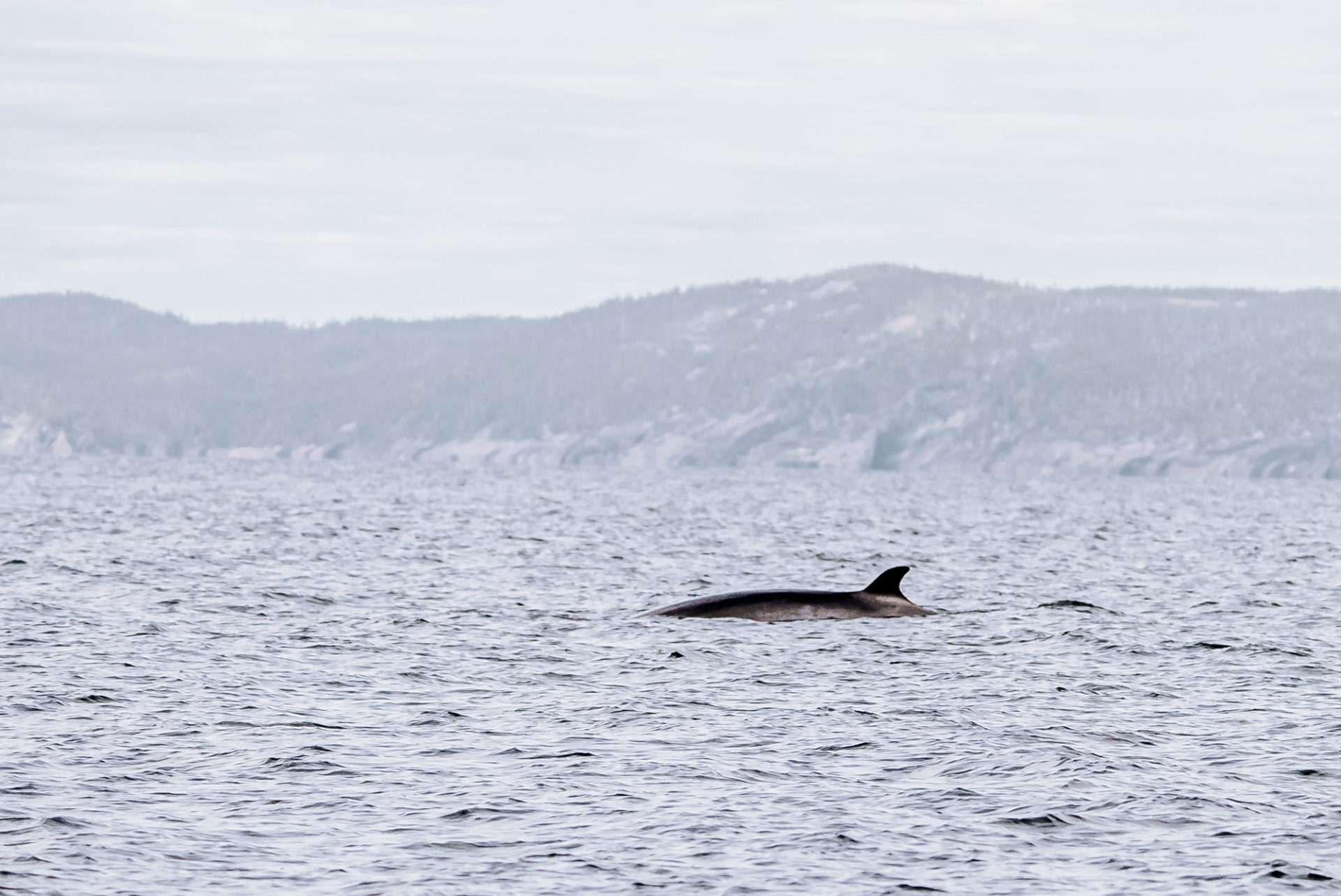
See puffins in Elliston – The Elliston Puffin Viewing Site can’t be missed! If you hadn’t had a chance to see puffins in Newfoundland yet, this is your chance. The puffins here nest on a rock very close to shore, making this one of the best places to see puffins from land. Be warned though, puffins are very small birds and are difficult to see with a naked eye. For the best experience, bring binoculars and a zoom lens for your camera.

Catch the sunrise from Gun Hill Lookout – This trail is part of the Hike Discovery Network and offers a panoramic view of the cliffs of Skerwink, Fort Point Lighthouse, Town of Trinity and Trinity Harbour. It’s a great spot to catch a sunrise or visit on a clear day.
Hike the Skerwink Trail in Port Rexton – this incredible trail is another feature of the Hike Discovery Network. The Skerwink Trail is a moderate 5.3-km coastal loop offering incredible views of the rugged coastline. We didn’t expect much from this trail but it surpassed all of our expectations. It’s no wonder it was selected by Travel and Leisure Magazine as one of the top 35 walks in North America and Europe .

Have a beer at Port Rexton Brewing – you can’t come to Bonavista without visiting Port Rexton Brewery. This local gem offers a large variety of craft beer that you can enjoy at their taproom, outdoor patio, and beer garden. Oh My Cheeses food truck is onsite serving gourmet grilled cheese sandwiches and street fries, making this a great stop for a drink and a bite to eat after a morning out of the trail!
Have dinner at Fisher’s Loft – this amazing restaurant overlooking Trinity Bay is located in Port Rexton and offers beautiful views and an incredible dining experience. Their set menu is inspired by the availability of fresh produce from the kitchen garden and greenhouse, local fish and seafood in season, and berries and mushrooms from surrounding hillside meadows and forests. Our meal at Fisher’s Loft was one of the best on our entire trip!

Where to Stay in Bonavista
Artisan Inn & Vacation Homes
If you want to stay in Trinity during your time in Bonavista, the Artisan Inn and Vacation Homes is the place to find the cutest houses in town. The Inn offers rooms starting at $125/night and the agency also manages the rentals of a number of holiday homes in town. These range from small homes suitable for a couple to large 3-4 bedroom houses perfect for a large family.
We stayed in the Admiral’s Lookout home, a lovingly restored, registered heritage building and loved its homey vibe and incredible location right on the water. The home is decorated with the award-winning furniture of local woodworkers and had 4 bedrooms and a spacious living/dining area as well as an entertainment room. It was a perfect spot to base ourselves while exploring the peninsula.

Lockston Path Provincial Park
Those traveling with an RV or campervan can enjoy camping near Port Rexton at Lockston Path Provincial Park. The campground is nicely shaded and offers lots of privacy and opportunities for kayaking, fishing, cycling, and bird watching
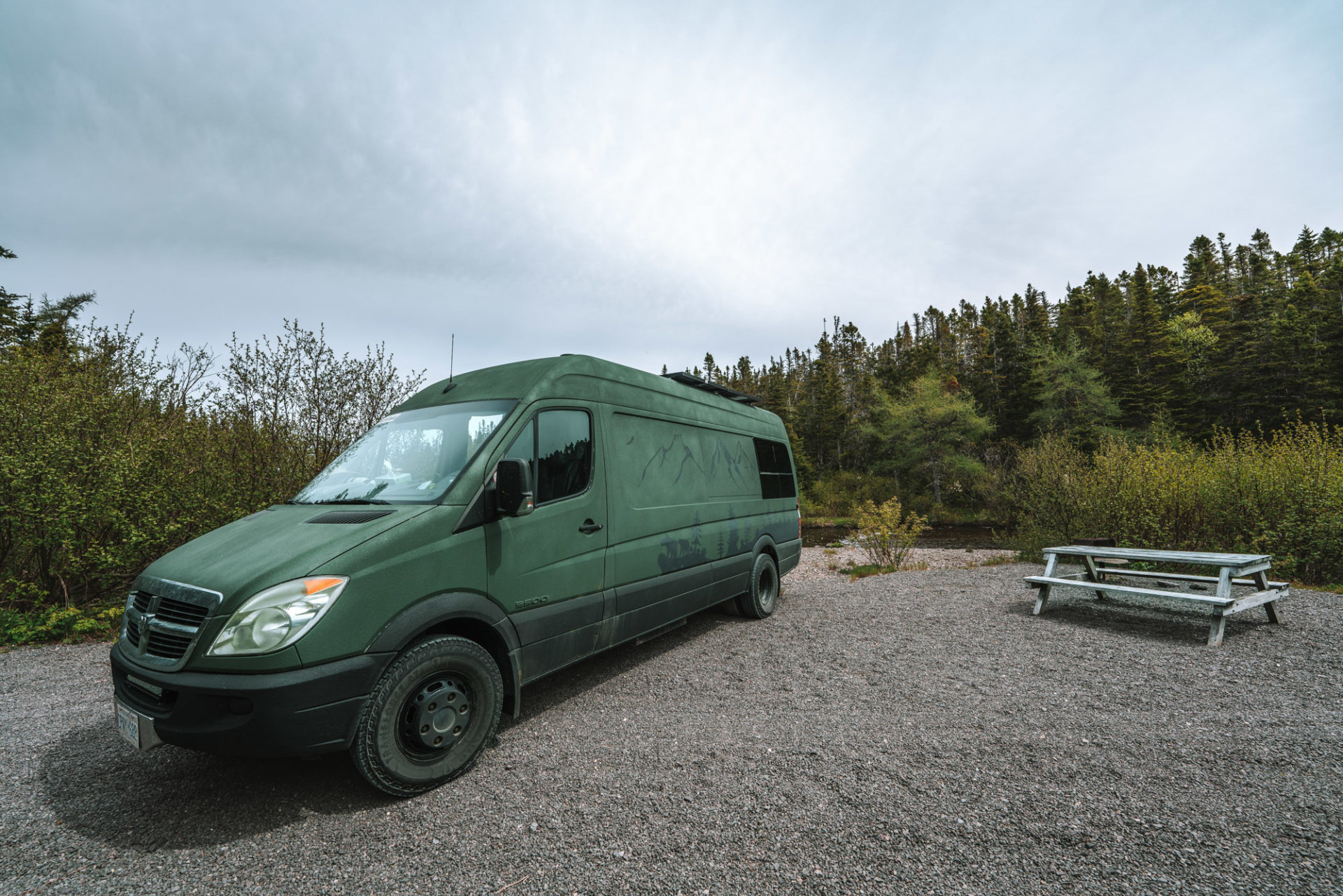
DETOUR: Take a Trip to St Pierre & Miquelon
Catch the ferry from the southern coast in Fortune in Newfoundland and venture 25 km by ferry to end up in France! Yes, you read that right – FRANCE! The small islands of St Pierre and Miquelon (SPM) are no less French than Paris itself. Be prepared to eat escargot and drink great French wine, stay in tiny rooms with European plugs! For a taste of France, SPM is the best it gets and luckily this French territory is located a stone’s throw from Newfoundland.
Of course, it’s not technically in Newfoundland, but a trip to SPM is one of the coolest places to go in Newfoundland. We just couldn’t leave it off the list!
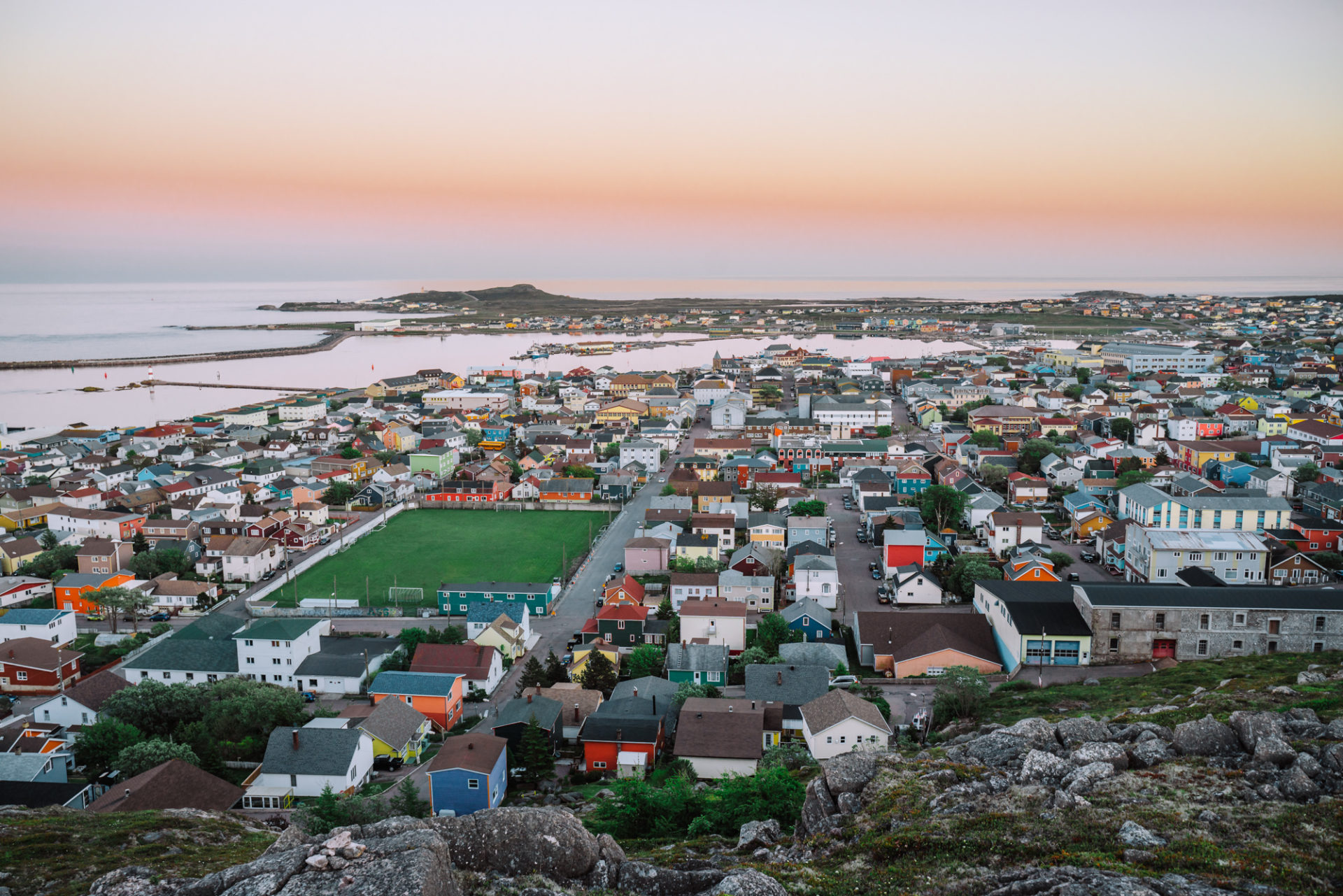
Things to Do in St Pierre & Miquelon
Take a walking tour of the city – If there was one thing we learned from our short visit to Saint Pierre and Miquelon is that a local guide is a must to help you understand the unique history and culture of this French Archipelago. We highly recommend starting your visit with a walking tour of the city’s colourful old district. A local guide can be organized through Musee de L’Arche .
Hike the rocky coastline trails – We joined Escapade Insulaire to explore the wilderness of St Pierre. The rocky hills and coastal cliffs were very different from the vibrant streets of Saint Pierre, but are well worth the visit. The views from the top are particularly impressive, especially if you visit at sunset!
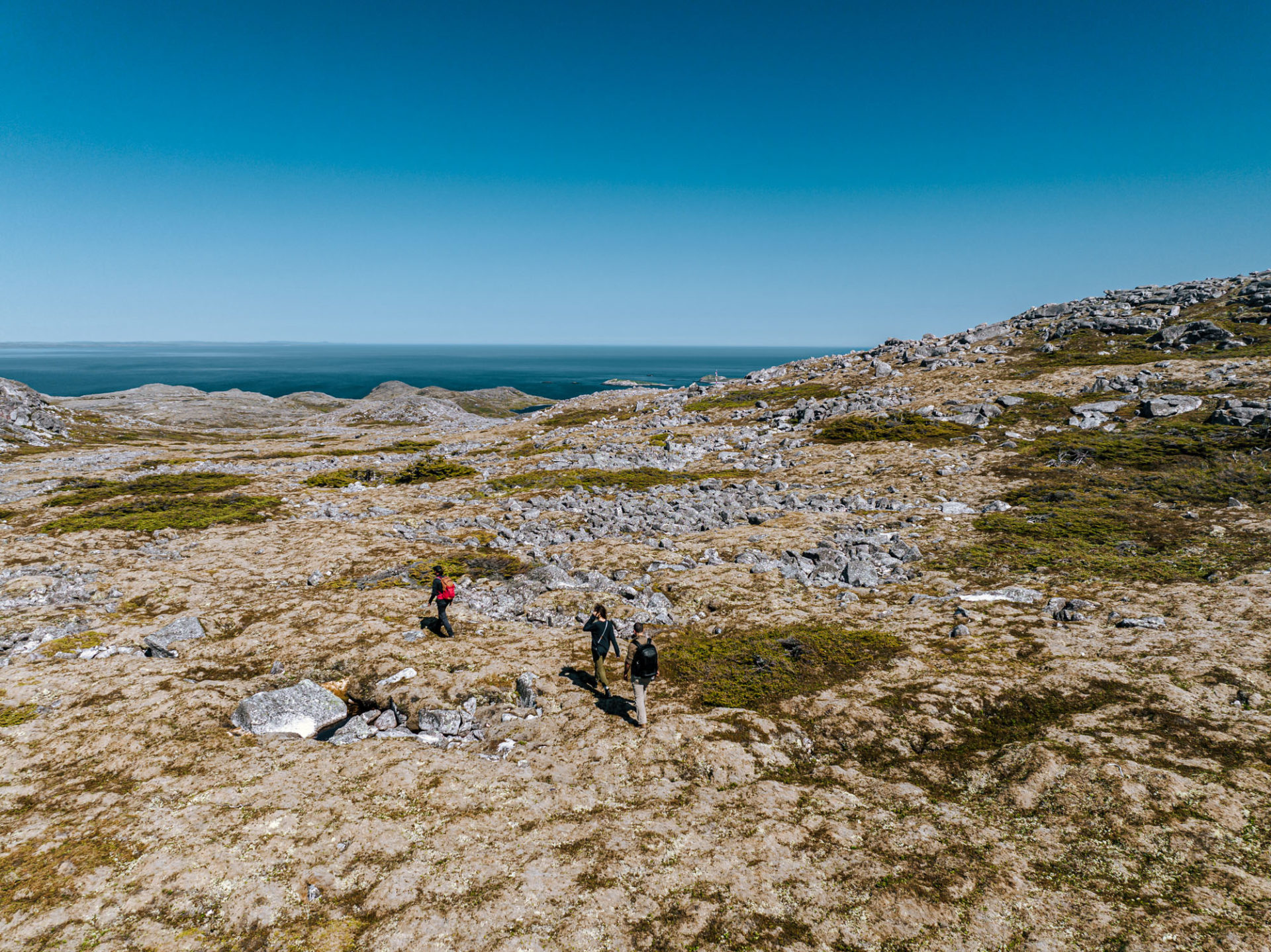
Join Les Zigotos for a scenic traditional boat ride. The fishermen share interesting history of St Pierre and the dory boats and take you to admire wildlife (hello, puffins!) and enjoy the scenic harbour of St Pierre.
Dine at Les P’tits Graviers – French cuisine off the shores of Canada? Yes, please! Les P’tits Graviers serves delicious meat and fish dishes in true French style.
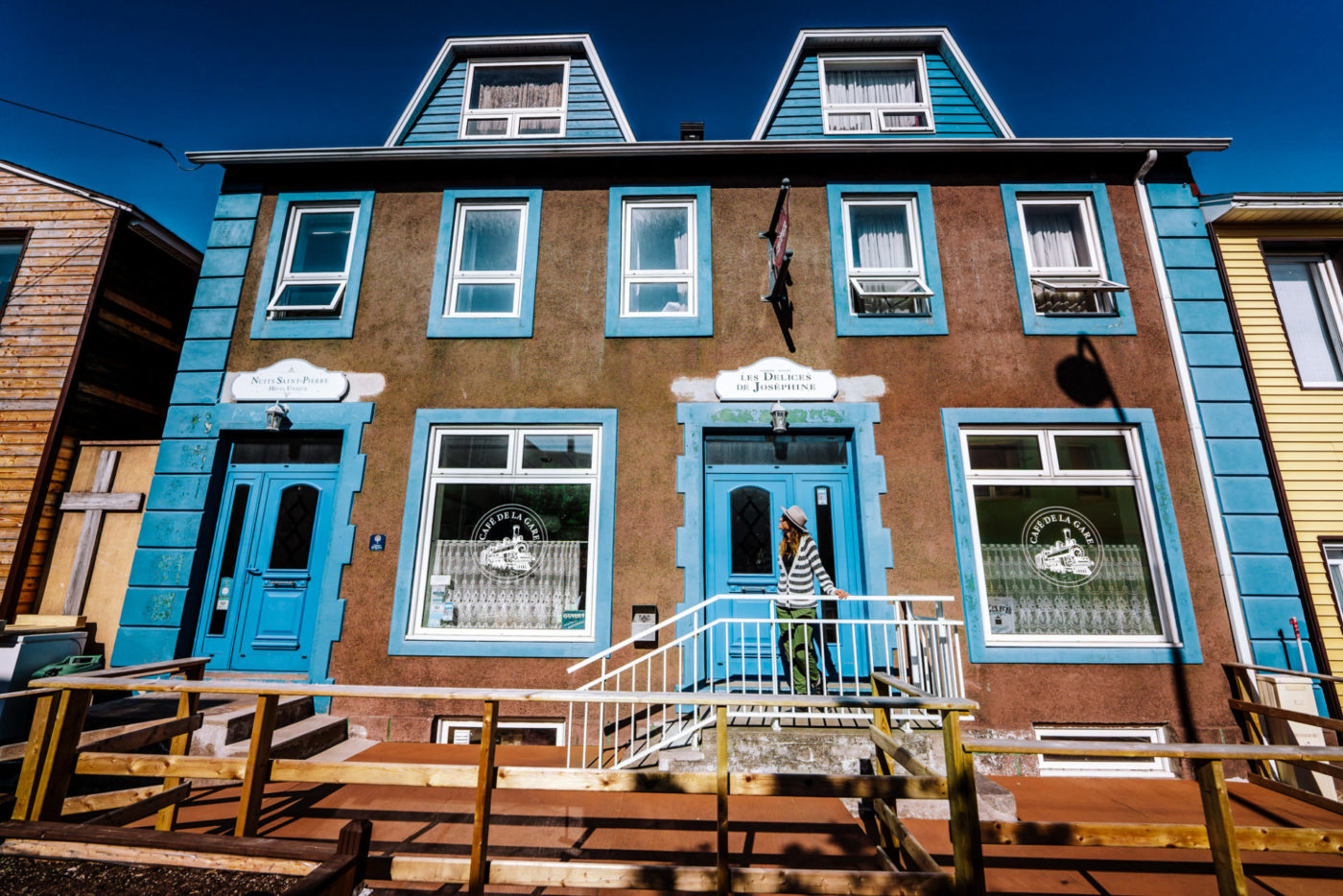
Where to Stay in St Pierre & Miquelon
Auberge Quatre Temps – This lovely B&B is conveniently located within walking distance from the city centre and offers an immersive stay while in Saint Pierre. Pascal and his wife Marie-Andrée offer not only a comfortable stay but also delicious meals. Chef Pascal, who is from the archipelago, is certified in French gastronomy and has won several prizes and awards for his cooking. Our meal at Auberge was worth a trip to SPM in and of itself!
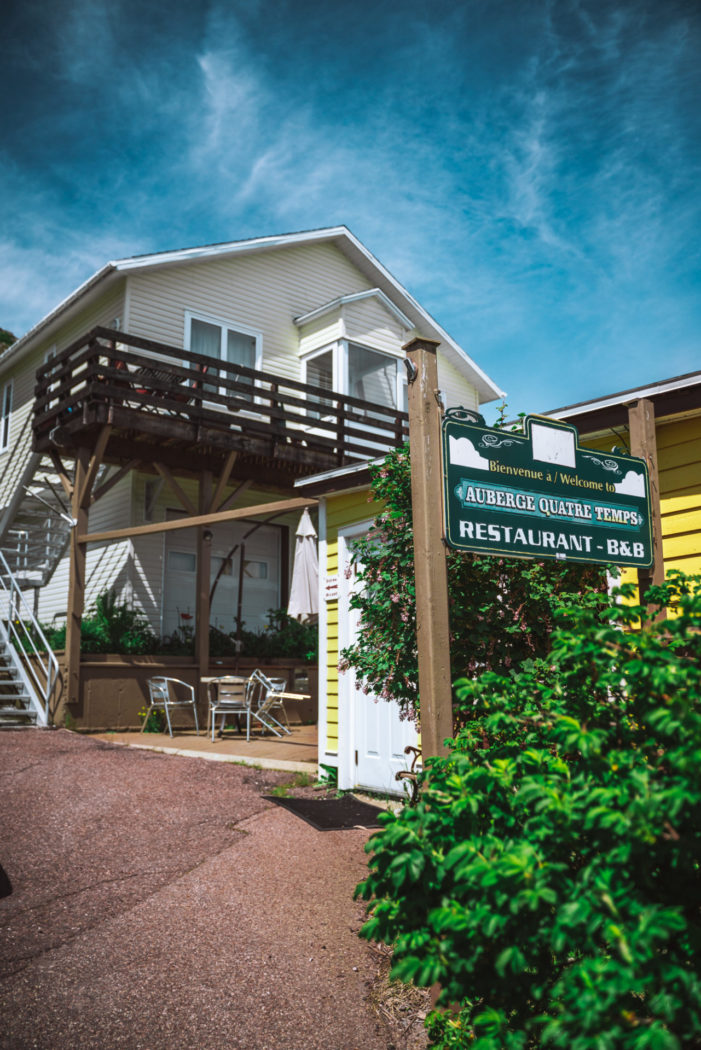
Explore the City of St John’s
Eastern Newfoundland – Avalon Peninsula
St John’s is undeniably Newfoundland and Labrador’s top travel destination and one that’s not to be missed by anyone visiting the region. The city’s colourful jelly bean houses, winding streets, and historic harbour create a destination that’s modern yet historical with plenty of attractions in and out of the city. The city boasts a history and culture that’s older than any other city in Canada.
Things to Do in St John’s, Newfoundland
See panoramic views of the city at Signal Hill National Historic Site – Once home to military battles, today, Signal Hill celebrates the rich communication and military history and offers a gorgeous vantage point over the city. Plan your visit to catch re-enactments of canon firings put on by the Royal Newfoundland Regiment. On the way back to the city, stop in at the Johnson GEO Centre to learn about the unique geology of the province.
Walk the jellybean house-lined streets of downtown St. John’s – Walk the streets and peruse the shops before stopping into The Rooms for a dose of history and culture.
Visit Quidi Vidi Village – Enjoy a craft beer from Quidi Vidi Brewery with a side of quintessential Newfoundland scenery. Or a locally sourced meal seasonal meal at the Mallard Cottage , that’s if you can snag a reservation, of course!
Visit Cape Spear Lighthouse – Cape Spear is a National Historic Site and Newfoundland’s oldest surviving lighthouse. It’s an iconic symbol of Newfoundland and Labrador’s marine history and a must-see site in Newfoundland. Located at North America’s most easterly point, Cape Spear is particularly magical at sunrise. Those that make it out here at the crack of dawn, will be rewarded with incredible views of crashing waves, whales, and in-season, majestic icebergs at the most beautiful time of the day. Plan to stay a while, as Cape Spear also provides an entry point to the breathtaking East Coast Trail .
Travel the Irish Loop – If you’re not feeling up to hiking the East Coast Trail, the Irish Loop offers a great alternative! Stop in the tow n of Bay Bulls and take a boat tour with Gatherall’s Puffin & Whale Tour through the Witless Bay Ecological Reserve . Check out Berry Head Arch , have a picnic at Ferryland Lighthouse and don’t miss a stop at Mistaken Point, a barren cliff with a rare collection of fossils millions of years old.
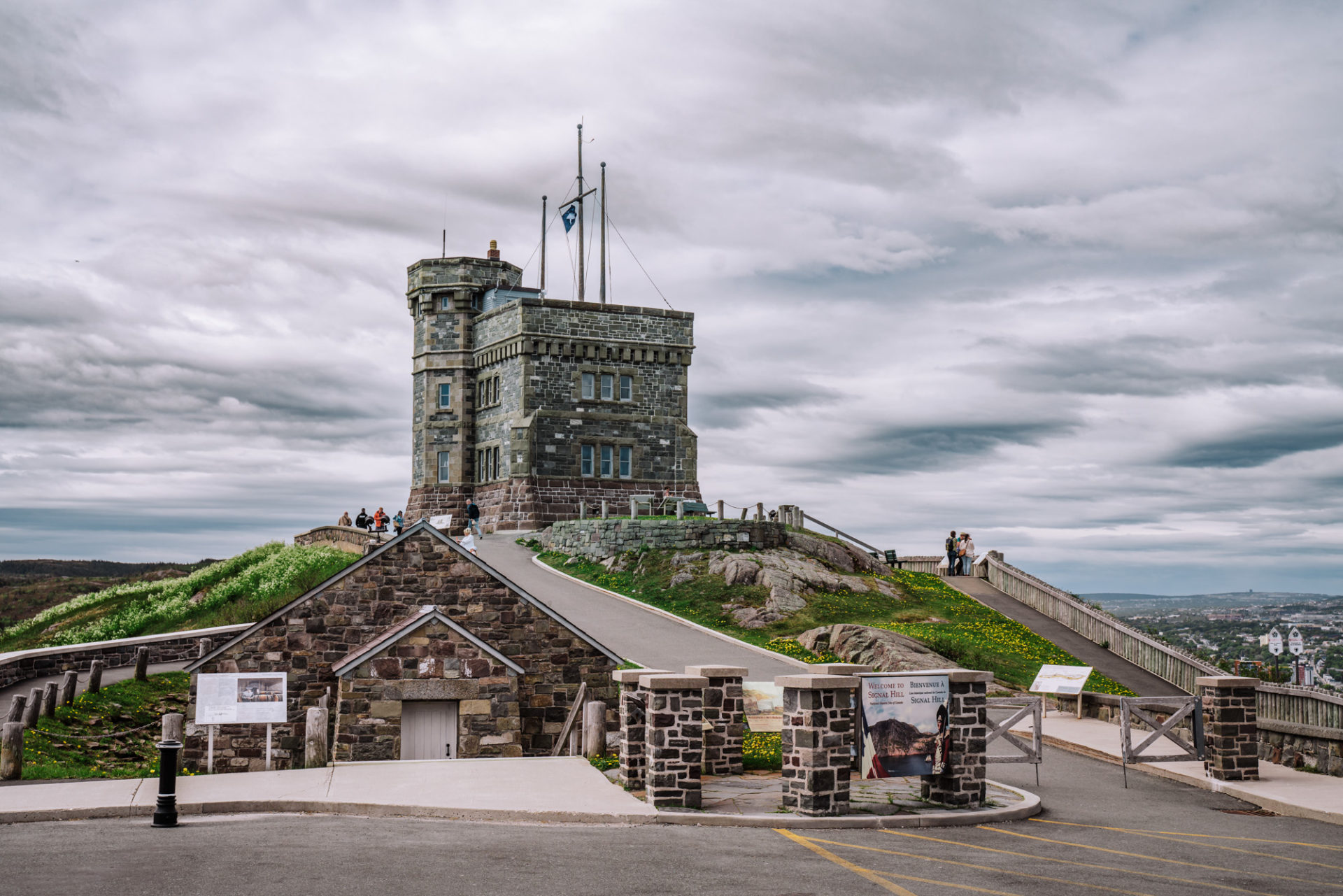
Where to Stay in St John’s
- Pippy Park Campground – Open May to October, Pippy Park is a convenient campground that’s less than 10 minutes from downtown St. John’s.
- Sheraton Hotel Newfoundland – The Sheraton is located right downtown St. John’s and features an indoor pool and on-site restaurant as part of its amenities. The rooms offer beautiful harbour views.
Is Newfoundland worth visiting?
If you’ve made it this far in the article, it’s likely that this is no longer a question at all! But in case you are still wondering, our answer is a resounding YES! Newfoundland is an incredibly beautiful and unique destination full of natural wonders, rich history and culture and a fair dose of WOW! Its rugged landscapes and a plethora of outdoor activities, make it an ideal destination for outdoor lovers, those seeking wildlife encounters, as well as history buffs!
We absolutely loved our time in Newfoundland and hope for a chance to return to Newfoundland and Labrador again in the near future! Because this is a destination you can return to again and again!
Have you ever been to Newfoundland and Labrador, Canada? What destinations and activities would you add to this list of best things to do in Newfoundland?
Disclaimer: We traveled to Newfoundland in collaboration with Tourism Newfoundland and Labrador , but as always, all thoughts and opinions expressed in this article are our own.
READ NEXT: 16 Things to do in St Johns, Newfoundland
About The Author
Oksana & Max St John
Leave a comment cancel reply.
Your email address will not be published. Required fields are marked *
This site uses Akismet to reduce spam. Learn how your comment data is processed .
Download Japan Trip Itinerary
Enter your name and email to get our Japan Trip brochure with more details about this trip in your inbox.
Join our 2025 Group Trips Pre-sale List
Be the first to know about NEW Trips and SPECIAL Offers!
Have 5 minutes to share more info? Fill out the Pre-Sale trip survey HERE
Interested in joining us in Japan?
Love the sound of this trip? Ready to book? Have some questions?
Send an inquiry and let's chat!
Leave your details below and be the first to get updates, special deals, and connect with us directly about this trip!
Reignite the Feminine Retreat
Love the idea of a women-only retreat in September 2024?
Help me decide where we should go!
Our women-only gatherings will be limited to 8-10 people, so leave your details below to add yourself to the waitlist.
We'll email you first to share all the details of the trip.
The 1939 Royal Tour

Donate to Canadian History Ehx at https://www.buymeacoffee.com/craigU
By the time 1939 rolled around, 72 years had gone by since Canada had become a country. Amazingly, despite seven decades passing, it was not until 1939 that a reigning Canadian monarch set foot in the country. When King George VI and Queen Elizabeth arrived at the shores of Canada, it would be an event unlike any other in Canadian history to that point.
While there have been many Royal Tours since then, it could be argued this was the most successful Royal Tour in Canadian history.
Canada had a strong history with King George VI, going back to when he was the Duke of York. In 1930, he was offered the role of Governor General of Canada, but the British government decided against this as Canada was becoming more autonomous from the United Kingdom, especially as the Statute of Westminster was about to be enacted that would greatly reduce the power of the Governor General in the country.
On Jan. 20, 1936, King George V died and was succeeded by King Edward VIII but just under a year later, Edward abdicated to marry Wallis Simpson, this then made the Duke of York the new King.
There was talk of the couple coming in the fall of 1938 but that would fall through as the Royal Couple needed a holiday following the death of the Queen’s mother. Prime Minister William Lyon Mackenzie King would write in his diary on May 29, 1938, quote:
“Personally, I should like to be the one to receive the King and Queen while in officer as Prime Minister.”
It then came down to Lord Tweedsmuir, the Governor General of Canada at the time, to extend an invitation to the Royal Couple to tour Canada after their planned tour of India in 1938 was cancelled.
On Sept. 24, 1938, after meeting with King George VI, Lord Tweedsmuir was able to get a confirmation that the King and Queen would indeed be touring Canada. At first, the plan was for the King to come to Ottawa and then return home, but the King then said he wanted to visit the provincial capitals. From there, the itinerary just grew.
The Calgary Herald would report quote:
“The high and unprecedented event of the coming visit to Canada of the King and Queen will give the government a great deal to think about and arrange for the coming months. Among the public at large, it will create the thrill of an expectant emotion. Such a thing has never happened before.”
War was on the horizon, but that was not going to stop the journey, the itinerary of which was published in newspapers across Canada on Jan. 4, 1939. Originally, the Royal Couple were going to come to Canada in a battleship, but the Second World War looming would change that. Queen Elizabeth would say later quote:
“We were going in a battleship and had to change to a liner in case the warship was wanted. It was as close as that.”
Not everyone was happy about the royal visit though, especially with Canada in the throes of the Great Depression. One man was quoted as saying quote:
“I am not disloyal, but I don’t think the city should pay when our people haven’t bread.”
In Vancouver, city councilor Helena Guteridge would state that the city of Vancouver should not be called upon to bear costs from celebrations of the planned visit. She would say quote:
“I am not retracing anything. I feel those who will reap a profit from the celebrations should bear the cost, not the city.”
On May 1, 1939, the Canadian Royal Train would do a round trip test with six of the Royal Train Cars, pulled by Locomotive 6028, from Montreal to Brockville, Ontario. On May 9, another test run was conducted with 12 cars and Locomotive CP 2850 taking over. The 12 cars would include room for 20 domestic servants for the Royal Couple, Prime Minister King, Lady Katherine Seymour, the Earl of Eldon, the Earl of Airlie, as well as several journalists.

The couple would arrive in Canada on May 17, 1939, and they would spend the next month touring the country by train. The couple would travel in a blue and silver royal train, which made it instantly recognizable to the many Canadians who waited along the tracks to see the train go by.
In order to cover the historic tour, CBC radio had a staff of 100 people covering the events on the tour. On the train with the Royal Couple were 80 international journalists as well.
The tour officially began in Quebec City when the Royal Couple arrived on the Empress of Australia, escorted by two destroyers and two cruisers.
Prime Minister King would go aboard the Empress of Australia to meet with the King and Queen before the disembarked onto Canadian soil for the first visit by a reigning monarch. He would write in his diary, quote:
“The King was standing at the open door of one of the saloons. The Queen was beside him. His Majesty came forward and put out his hand to shake hands and expressed a word of greeting to the effect that he was glad to see me again. I said Welcome Sire to Your Majesty’s Realm of Canada. The Queen came forward and shook hands and spoke of being pleased to be here. I said to her Welcome ma’am to Canada.”

Prime Minister King would say in a speech, quote:
“Today as never before the throne has become the centre of our national life.”
The Royal Couple, the prime minister and others then drove to the Legislative buildings. King would write quote:
“The streets were lined with people who were quite enthusiastic. Great crowds.”
The Ottawa Journal reported quote:
“Roar like mighty thunder greets their majesties as they set foot ashore.”
A total of 35,000 schoolchildren would cheer for the King and Queen during their visit.
In his speech to the crowd, King would say quote:
“May it please Your Majesty. On behalf of the Canadian people, I respectfully extend to Your Majesty and to Her Majesty the Queen, a Royal welcome to your Dominion of Canada.”
A large luncheon was then held for the Royal Couple, which was enjoyed by everyone according to King, who wrote quote:
“The King was in very good form. Laughed a good deal. He had a wholesome, almost boyish way, seeing humour in things. I spoke to him of the main incidents in the history of Quebec. Spoke of the Privy Council being assembled at the gathering. He noticed Howard Ferguson in the audience and spoke of him and of the time he was in London.”
After more receptions, with roads lined with cheering people, a long day came to an end for the Royal Couple and King. Prime Minister King would write at the end of his diary entry for that day, one of the longest of all his entries, quote:
“Needless to say, all day I have had thoughts of my father and mother and grandparents, and Sir Wilfrid and Lady Laurier, in my mind, but have been so tired that there were moments when I seemed to almost be forgetful of their existence. Have thought too of King George V a good deal but can say that I am very tired. However, Providence had been kind in giving me strength through the day and I have reason to rejoice that all has gone so well.”
The couple would make two trips across Canada, visiting nearly every major city along the way. At every stop of the tour, Prime Minister King was there to welcome them.
The next day, it was on to Montreal where the couple was greeted enthusiastically. King would write at the end of the day quote:
“I shall never forget today, however scenes of rejoicing, etc.”
While in Montreal, two Boer War veterans of Scottish heritage would ask the Queen, hoping to settle an argument, quote:
“Are you Scots, or are you English”
The Queen responded quote:
“Since I have landed in Quebec, I think we can say that I am Canadian.”
Queen Elizabeth would write to her daughter, the future Queen Elizabeth II, quote:
“The French people in Quebec and Ottawa are wonderfully loyal and in Montreal there must have been two million people, all very enthusiastic and glad to have an excuse to show their feelings.”
A 21-gun salute greeted the couple when they arrived in Montreal and the Ottawa Journal reported quote:
“A colorful array greeted their Majesties as they stepped from the train to a carpeted pathway leading from their private train. The King and Queen were greeted by spontaneous cheering and shouting, flag waving and singing.”
During their stops in Quebec, the King and Queen gave their speeches in both French and English.
The next big stop on the tour was Ottawa, where 200,000 people lined a 10-kilometre route to see the Royal Couple. The Couple would stay in the capital for three days.
“They cheered loud and lustily for the three minutes the train took to do the remaining 500 yards and when Their Majesties alighted, they started cheering all over again.”
One woman, upon seeing the Queen, screamed, “she looks like a little girl”
There were several important milestones during the visit of the Royal Couple as well. King George VI gave royal assent directly to nine bills. A total of 800 people crammed into the Senate Chambers to witness the historic event. No royal assent had been granted by the sovereign in person since 1854, so this was a major event. King George VI became the first Canadian monarch to directly meet with Parliament. He and Queen Elizabeth also dedicated the National War Memorial in Ottawa, and they put down the cornerstone for the new Supreme Court of Canada building that was under construction.

The Ottawa Journal wrote quote:
“Joined by hundreds of visitors who were coming in a steady stream by railways and highways from near and far, citizens of the Capital today waited with restive eagerness for the arrival of Their Majesties the King and Queen.”
There were some complaints from civil servants in Ottawa that the vantage points in government buildings to see the Royal Couple were occupied by high officials, their families and friends, while the civil servants who typically occupied those areas through long years of service in the buildings were forced to go elsewhere. Finance Minister Dunning would say that the government knew nothing of this, and that each department had authority over its own offices.
Today, what is called the Royal Walkabout is customary in Canada. It involves a member of the Royal Family visiting with crowds of citizens on tours. That tradition got its start in 1939 when on May 21, when the Royal Couple dedicated the National War Memorial, they chose not to immediately go back to their motorcade and instead spent the next half hour mingling with 25,000 First World War veterans. Those veterans were part of the crowd of 100,000 people who had come out to see the couple.
The CBC would report quote:
“One of these old veterans is patting the King most affectionately on the shoulder. Her Majesty is chattering with one of the veterans of the amputations association. The Queen is speaking to a blind veteran now. The King is shaking hands.”
King would write in his diary quote:
“The crowd began to narrow in. The King gave instructions to move the mounted escort along, down the street, so he could meet a larger number, and caused the crowds to begin to narrow in. There was a moment when I was afraid some of the party might be crushed.”
The Royal Tour then moved on to Toronto on May 22, where they attended the King’s Plate horse race and dedicated Coronation Park. The Rainbow Bridge at Niagara Falls, which was not quite completed, was also dedicated.
It was estimated one million people saw the couple in Toronto, as they lined the streets waiting for a glimpse of the King and Queen. King George VI would say in a speech quote:
“The people of Ontario, the central province of the Dominion, have by their great qualities made a very significant contribution to the material progress of Canada and an equally important one to the formation of its national character.”
“As we approached the City Hall, the crowds became all that they could possibly be in those areas. It was a joy as I stood there with the King and Queen to recall that my grandfather had been the first Mayor of Toronto and had designed its coat of arms.”
The couple then began the long journey out to Western Canada, to a region of the country that had dealt with the worst of The Great Depression.
On May 23, as the Royal Tour reached White River, Ontario, George Freethy was made mayor of the community only 40 minutes previously. He was chosen by other members of the committee in charge of the visit to White River to greet the King and Queen, before he went back to his normal job as a superintendent. He would say after meeting the King and Queen, quote:
“Her smile was so dazzling I forgot everything after that.”
At Fort William, the couple would meet with Indigenous leaders and were shown a traditional Indigenous dance. The Ottawa Journal reported quote:
“The Royal Couple seemed to enjoy the experience thoroughly.”
The couple would visit Winnipeg on May 24, arriving on the King’s official birthday. A crowd of 100,000 people greeted the Royal Couple and the King requested that the convertible roof on the limousine be opened, despite record rainfall, so as many people as possible could see the couple.
Macleans would write quote:
“Those who heard the spontaneous gasps of amazement and delight when Winnipegers saw this young couple driving along in an open car in the rain, will never forget it, neither will Winnipegers.”
While staying at Government House in Winnipeg, King George VI made his longest-ever radio broadcast to the British Empire. The table that he sat at to read the address remains in the hotel. Originally, the King had wanted to do the address outdoors, before the people of Winnipeg as he did not like speaking in a room by himself.
The King would say in his speech quote:
“Winnipeg, the city from which I am speaking, was no more than a fort and hamlet upon the open prairie when Queen Victoria began to rule. Today, it is a monument to the faith and energy which have created and upheld the worldwide Empire of our time.”
King would say of the speech, quote:
“I thought the broadcast was too long and not as felicitously worded as it might have been.”
The train then moved on to Brandon, where Prime Minister King would describe the arrival as quote:
“Wonderful cheering. A long bridge overhead crowded with people. The hour, 11 at night, the finest scene on the entire trip.”
Even Queen Elizabeth would state the reception was the biggest thrill of the tour to that point.
In Brandon, Manitoba, the population of the city, normally 17,000, swelled to 50,000 as people from around the area came out to see the Royal Couple. The Regina Leader-Post stated quote:
“School children, farmers, babies in arms and grandmothers from near and far swelled the city’s population, massed along the station platform and crowding along the railway tracks for half a mile.”
Some journeyed from as far away as 300 kilometres to glimpse the Royal Couple.
On May 25, the Royal Couple travelled into Saskatchewan. The first stop was Broadview, where an immense crowd greeted the Royal Couple. After Broadview, the train stopped so the Royal Couple could exercise. King would write quote:
“They walked down the track, coming back, were met by their suite. The Queen set up a foot race and brought them all in puffing pretty hard. She is full of life and charm.”
The train then reached Regina where it was unfortunately raining. Once again, King George VI asked that the top of the car be taken down.
In Regina, two Inuit men had been flown in from the Arctic after travelling 300 kilometres on foot to meet a pontooned plane. The plane would land on Wascana Lake directly in front of the Legislative Building, and the Royal Couple would speak to the two men for a few moments.

The Regina Leader-Post would state of the city’s efforts to welcome the couple quote:
“Regina’s street decorations were unsurpassed by any previous event celebrated in the city’s history. Miles of bunting in red, white and blue and in the royal colours of purple and gold, together with thousands of flags and colored lights provided a colorful setting for the celebration of Their Majesties.”
Saskatchewan was the hardest hit by the Depression in Canada, but it didn’t stop many from still celebrating. The Leader-Post would go on to state quote:
“A poor transient, his clothes ragged and his face dirty, walked proudly on South Railway Street with a large flag in his crumpled hat. A large shiny car moved slowly along Albert Street, its driver obviously in difficulty with the vast array of flags carried on the car front. Information bureaus at the city’s outskirts reported one car had passed into the city bearing Hawaii license plates. Another car intended to take in the royal visit in Regina came 600 miles from north of Prince Albert.”
After visiting the Legislative Building, and visiting with dignitaries, the couple moved on to Moose Jaw. At the station, they found a young boy who was laying on a cot. He had accidently ingested poison and was not expected to live beyond a few days. He had hoped to see the King and Queen before he died.
King wrote quote:
“We all went to the cot together. The little lad first smiled very pleasantly at me and then later at the King and Queen. Waved his little flag. It was quite a touching affair.”
The day after the stop in Regina and Moose Jaw, the tour was on its way to Calgary. King George VI would ask Prime Minister King what should be expected for crowds or ceremonial military welcome in Calgary. King stated that Calgary was only a small place of little consequence. Upon arrival, the King saw there was a guard of honour waiting on the platform and he realized he should be in uniform. It was too late to change, and according to those around the King, he was angry with Prime Minister King for the rest of the day.
It was also the first time that King was disappointed with the reception. He wrote quote:
“I was disappointed in the numbers of people on the streets. There were not the crowds I had expected. Many of the seats that had been constructed were empty.”
Despite his disappointment, a crowd of 135,000 did come to see the King and Queen. The Edmonton Journal reported quote:
“From towns, villages and lonely farmsteads, all over southern Alberta, from many parts of Saskatchewan and British Columbia, came farmers, ranchers, miners and townsfolk with their wives and children, to mingle on the streets with beribboned city veterans, cowboys, shop assistants, office workers, air force men, people of every description.”
In Calgary, the King and Queen would meet with local Indigenous leaders, who wore traditional clothing to meet the Royal Couple.
On May 27, the Royal Couple were in Banff where a famous photo of them with Prime Minister King at the Banff Springs Hotel was taken. This would provide the Royal Couple with some time for rest after the long trip across the country. The Regina Leader-Post’s Francis Stevens would report quote:
“Right now, in this mountain retreat surrounded by whispering fir trees, looking out on one of the most publicized views on Earth, I still hear the cheers of thousands ringing in my ears.”
One man would tell Stevens upon seeing the King and Queen quote:
“They were walking arm-in-arm. The Queen looked happy and carefree, and you could almost say she was skipping along like a girl. When I saw them coming, I stood at attention to let them pass and both of them said good evening to me.”
The King and Queen had actually left for their walk in the mountains without notifying any of their staff of their intention. They would return half an hour later to dine alone together in their suite.
The press that was along on the tour also stated they would not follow the Royal Couple on their walks in the mountains, to give them a break from the constant glare of the cameras and people.
At one point, one of the Mounties assigned to guard at the hotel began to follow the King and Queen on their walk and the King politely told him that they wished to be alone.

On May 29, the couple reached Vancouver. They would drive over the newly completed Lions Gate Bridge, and the King and Queen would be the first registered guests at the new and luxurious Vancouver Hotel, owned jointly by Canadian National Railways and Canadian Pacific.
The following day, the couple toured smaller communities as well as Victoria. Prime Minister King would write in his diary quote:
“The day in Vancouver was one of the finest on the entire tour. Without question, Victoria has left the most pleasing of all impressions. It was a crowning gem.”
While in Victoria, the King would make a speech that was broadcast across Canada. He would state, with war looming on the horizon, quote:
“Someday, the people of the world will come to realize that prosperity lies in co-operation and not in conflict.”
He would then add, quote:
“To travel through so grand a country is a privilege to any man but to travel through it to the accompaniment of such an overwhelming testimony of good will, from young and old alike, is an experience that has, I believe, been granted to too few people. We are deeply grateful for it; we shall never forget it.”
At this point, the Royal Couple began the trip back to eastern Canada. The couple would have another rest at Jasper, before once again moving on east.
Upon reaching Edmonton on June 2, the population of the city went from 90,000 to 200,000 as people from the outlying areas came to the capital to see the couple. Along Kingsway Avenue in Edmonton, specially constructed grandstands were made so 70,000 people could see the couple pass by.

“Tremendous crowds at and around the station. Mounted escort part of the way. We turned to the left along one of the large avenues, and there saw I think the finest sight in the whole trip thus far. Tiers of seats had been erected on either side, very wide avenue for a distance of two miles.”
With the King and Queen staying at the Hotel Macdonald, police had to keep crowds away from the entrance but that didn’t stop one 17-year-old boy from climbing up the building and looking in the window where he saw the King and Queen in the Lt. Governor’s suite, where they were having tea.
King would add later in his recollection quote:
“Edmonton better than Calgary. I think one of the great surprises of the trip.”
The next day, the couple then made their way to Wainwright, at the border of Alberta and Saskatchewan where there was another huge reception.
The King and Queen would also take a walk around Unity, and then visited Saskatoon where 150,000 came out to see the couple and hundreds of teenage girls dressed in red, white and blue and assembled in the image of the Royal Union Flag as they sang God Save the King.
The Saskatoon Star-Phoenix would write quote:
“Royal weather and a royal crowd greeted Canada’s King and Queen in Saskatoon. One hundred and fifty thousand persons lost their hearts to the tall, square-shouldered Monarch and his unbelievably gracious consort.”
For two days before the arrival of the King and Queen, crowds were coming into the city for the big event. There were an estimated 30,000 school children who had also come to the city for the arrival.
The Star-Phoenix reported quote:
“It was a colorful scene which greeted Their Majesties as they stepped from the train. To the left of the Royal Couple was the military guard of honour furnished by the Saskatoon Light Infantry. Behind them were stands holding more than 800 high school girls wearing red, white or blue berets and carrying red, white or blue kerchiefs. To their right was a troop of Girl Guides and more stands with nearly 1,500 pioneers, visiting officials, committee chairman and honored guests.”
The Royal Couple later arrived in Melville at 10 p.m. and 60,000 people were waiting for them. The community typically had a population of only 3,000. With such a huge influx of people into the community, the Royal Couple decided to spend several hours in Melville, rather than the originally planned 10 minutes. In the crowd were 600 First World War veterans, 10,000 school children and a 200-piece orchestra.
R.J. Carnegie would say of the stop in Melville, quote:
“Never throughout the tour did I see such unbridled enthusiasm as then.”
The community is in the Central Time Zone but for the Royal Visit and to keep everything on the same day, the community temporarily switched to the Mountain Time Zone.
King would write quote:
“We got the surprise of our lives when we reached Melville. There was the largest outdoor massing of children and others that I have seen at any of the stations. I think the King and Queen were almost taken off their feet by surprise as they went to the platform.”
With its population swelling to 60,000 people, Melville became the largest city in Saskatchewan for a few hours.

From June 7 to 12, the Royal Couple visited the United States with Prime Minister King, who was the sole minister in attendance with the King to reinforce that King George VI’s visit to the United States was a state visit from Canada.
“I told the Queen that I felt somewhat embarrassed about taking in the entire trip with Their Majesties, that it looked like pushing myself into the fore, yet I felt that unless some evidence of Dominion precedence existed, one of the main purposes of the trip would be gone.”
The Queen would respond quote:
“The King and I felt right along that you should come with us.”
The Royal Couple returned to Canada on June 12, visiting the Maritimes. During a visit to Doaktown, New Brunswick, they had tea at a local teahouse and upon finishing their tea, went to the kitchen and surprised the owners.
The couple then went to Newfoundland, then not a part of Canada, visiting St. John’s where the population grew from 50,000 to 100,000 for the visit. When the couple left the city, residents built a huge bonfire on Signal Hill to say goodbye.
The Royal Couple then visited Prince Edward Island, followed by the last stop on their tour, Halifax, on June 15.
After a luncheon, the Royal Couple boarded the RMS Empress of Britain to return to the United Kingdom. Thus ended their 13,481-kilometre journey around Canada. During the tour, it was estimated eight million Canadians saw the King and Queen. At the time, Canada had a population of 11 million.
Maclean’s Magazine would write quote:
“There were tens and hundreds of thousands of people, young and old, who lined streets and waved flags and cheered as the Royal Procession went by. There were other tens of thousands, running into millions, who gained almost a vivid picture of the moving events without stirring from before their own radio loud-speakers. People on lonely farms and in lonelier lighthouses, in little red schoolhouses, that are almost forgotten, on trap lines and in mines, listened to the broadcasts. In solitary police posts fringing the Arctic Sea, in Eskimo igloo and Indian encampment, in hospital beds and houses of detention, people paused in whatever they were doing while a king went by.”
Prior to leaving, a Royal Prerogative was given in which any prisoner in Canada serving a sentence of three months or more for an offense against the criminal code, would have their sentences reduced.
P. Duff, Chief Justice of Canada and acting Governor General would state quote:
“It has been the traditional practice of sovereigns to mark celebrations of this great importance by an act of grace or mercy.”
The proclamation would extend to at least 4,000 prisoners in federal penitentiaries who had sentences of two years or more. Provincial and county jails, reformatories and farms would not benefit from the proclamation.
The tour also seemed to reinvigorate King, with journalists stating that his health seemed to improve, and his spirits rose despite the schedule.
Prime Minister King would write after the King and Queen left, stating quote:
“The Empress of Britain ran past one end of the harbour where she was towed around, then came back the opposite way to pull out to sea. She was accompanied by British warships and our own destroyers. The Bluenose and other vessels also in the harbour as a sort of escort. The King and Queen were at the top of the ship and kept waving. No farewell could have been finer.”
Information from Canadian Encyclopedia, Library and Archives Canada, Wikipedia, ThemeTrains.com, Saskatoon Star Phoenix, Macleans, Vancouver Sun, Calgary Herald, Ottawa Journal, Regina Leader-Post, Winnipeg Tribune,

Share this:
Leave a reply cancel reply, more from this show.

Richard Pierpoint
For the last twenty years he had been someone else’s property. Ripped from his home as a teenager, he was taken and then enslaved in North...

Jackie Robinson and the Montreal Royals
Two teams, one from New Jersey, and one from Montreal met on a beautiful spring day in New Jersey in 1946 to open their baseball season...

The Cap Diamant Slide
The rain was heavy over Quebec City on Sept. 18, 1889. For hours, it fell and turned alleys into muddy bogs and caused more than a few...

Sir Sandford Fleming
In the movie Forrest Gump, the title character had a habit of appearing during pivotal moments in American history during the latter-half...

Lotta Hitschmanova
It is the early-1970s. You are sitting in front of the television watching MAS*H when the show goes to commercial.Video clips of people...

The SS Viking Disaster
Making films can be a dangerous business. Since the 1910s there’s been a death every decade on a Hollywood film set. The first occurred in...
Recent posts
- Richard Pierpoint 16 Apr 2024
- Jackie Robinson and the Montreal Royals 9 Apr 2024
- The Cap Diamant Slide 26 Mar 2024
- iHeartRadio
Discover more from Canadian History Ehx
Subscribe now to keep reading and get access to the full archive.
Type your email…
Continue reading
Language selection
- Français fr
Itinerary unveiled for the 2022 Royal Tour of Canada of The Prince of Wales and The Duchess of Cornwall
From: Canadian Heritage
News release
Their Royal Highnesses will visit St. John’s, Newfoundland and Labrador, Canada’s Capital Region and Yellowknife and Dettah, Northwest Territories from May 17 to 19.
OTTAWA, April 26, 2022
Today the Government of Canada unveiled the official itinerary for the upcoming Royal Tour this spring, part of the year-long celebrations marking the Platinum Jubilee of Her Majesty Queen Elizabeth II. From Canada’s easternmost point to rich northern landscapes, Their Royal Highnesses The Prince of Wales and The Duchess of Cornwall will visit St. John’s, Newfoundland and Labrador on May 17, Canada’s Capital Region on May 18 and Yellowknife and Dettah, Northwest Territories on May 19.
During their tour, Their Royal Highnesses will meet with diverse communities through engagements on topics such as innovation and entrepreneurship in the context of the pandemic, climate change and sustainability as well as diversity and inclusion, to name a few.
Itinerary Highlights
May 17: st. john’s, newfoundland and labrador.
The Royal Couple will begin their visit to Canada with an official welcoming ceremony in the presence of Indigenous leaders at the Confederation Building, overlooking the capital of St. John’s. The public ceremony will include military honours, a prayer in Inuktitut, Innu drumming, Mi’kmaq music, as will as lively artistic performances showcasing the province’s rich tradition of song and story. The event will also include official addresses by dignitaries and The Prince of Wales.
The Royal Couple will then visit Government House, the official residence of the Lieutenant Governor of Newfoundland and Labrador, to participate in events with members of the community, commencing with a solemn moment of reflection and prayer with Indigenous leaders at the Heart Garden to honour and remember the Indigenous children who attended Residential Schools in Labrador and Northern Newfoundland. A discussion on Canada’s wool industry will follow, showcased through Newfoundland and Labrador artistry. The stop will also include the inauguration of the new Commonwealth Walkway—a Platinum Jubilee commemorative project—on the grounds of Government House.
Their Royal Highnesses will wrap up their first day in Canada at picturesque Quidi Vidi Village, where they will meet local artists and participate in a collective work of rug-hooking at Quidi Vidi Village Artisan Studios. They will meet with local vendors and members of the community during a walkabout of the harbour. They will also visit Quidi Vidi Brewery to learn about its unique brewing process and meet with local food producers and representatives of Newfoundland and Labrador’s vibrant culinary scene.
May 18: Canada’s Capital Region
His Royal Highness The Prince of Wales will be invested into the Order of Military Merit during a ceremony at Rideau Hall before he and The Duchess of Cornwall lay a wreath in honour of Canadian veterans and active service members at the National War Memorial.
Their Royal Highnesses will then meet with members and organizations from the Canadian Ukrainian community and take part in a traditional prayer service at a cathedral in Ottawa to learn about their stories and Canada’s efforts to support the people of Ukraine.
Afternoon events will include a visit to an elementary school to engage with schoolchildren, parents and teachers on the importance of literacy. The Prince of Wales will also meet with Prince's Trust veterans and youth program participants and take part in a discussion on sustainable finance in combating climate change and building a net-zero economy. Their Royal Highnesses will then visit the home of the world-famous Royal Canadian Mounted Police Musical Ride to meet the riders, walk through the stables and attend a special performance of the Musical Ride.
Later at Rideau Hall, The Prince of Wales will hold bilateral meetings with the Governor General of Canada and with the Prime Minister of Canada. A special evening reception with Their Royal Highnesses will celebrate Her Majesty’s Platinum Jubilee and bring together Canadians from various backgrounds who have dedicated their lives to serving their communities, like Her Majesty.
May 19: Yellowknife and Dettah, Northwest Territories
On the final leg of their journey, Their Royal Highnesses will land in Yellowknife and visit Dettah, a thriving Dene First Nation community, to take part in various community events and experience local culture and traditions. Their visit will include a community welcome, an opening prayer, a traditional drumming circle, a feeding the fire ceremony, a discussion with local Chiefs and Elders, and a visit to Kaw Tay Whee School, a school offering high quality and culturally responsive programming.
At Fred Henne Territorial Park, The Prince of Wales will meet with members of the Canadian Rangers to mark the organization’s 75th anniversary and be appointed an Honorary Canadian Ranger. At the Dettah Ice Road, he will then meet with local experts to discuss the impact of climate change in the Northwest Territories and the importance of Indigenous-led initiatives to address these challenges. Meanwhile, The Duchess of Cornwall will visit a safe transitional housing centre and community organization that offers services to women and children fleeing violence.
Finally, at the Prince of Wales Northern Heritage Centre , Their Royal Highnesses will meet with local food producers. They will also take part in a discussion on Treaty 11, its history and its legacy in the Northwest Territories, as well as observe a demonstration of traditional Inuit sports and learn about traditional crafts. Treaty 11 is known as the last of Canada's numbered treaties, which was signed by the Crown and First Nations in the Northwest Territories in 1921.
Their Royal Highnesses will then proceed to the Ceremonial Circle for a Platinum Jubilee Celebration and the unveiling of a plaque at the Northwest Territories’ Platinum Jubilee Garden.
The full itinerary is available on the Royal Tour 2022 website .
“Recognizing service is at the heart of this Platinum Jubilee year. Whether it is by serving their community through volunteerism, welcoming refugees into their homes, or making the world greener, Canadians are leading efforts on multiple fronts to move us forward. The upcoming visit from Their Royal Highnesses The Prince of Wales and The Duchess of Cornwall is an opportunity to reflect and reinforce our friendship. It will offer a window to the world on Canada’s innovative spirit, rich traditions, local cultures and languages.” —Pablo Rodriguez, Minister of Canadian Heritage
Quick facts
Consult the official itinerary for event details.
For more information about the upcoming tour, follow the hashtag #RoyalVisitCanada on all platforms and The Crown in Canada on social media:
Facebook: @TheCrownCa | @LaCouronneCa Twitter: @TheCrownCa | @LaCouronneCa Instagram: @o_canadiana
Send your greetings to The Prince of Wales and The Duchess of Cornwall with the hashtag #RoyalGreetings and tag where you’re from. You can also share a picture or video of your part of Canada and say what is unique and beautiful about it.
Official photos of the Tour will be available on the Royal Tour 2022 website and on social media during and after the tour. If you happen to take part in the tour, share your own videos and photos using #RoyalVisitCanada and tag the Crown in Canada.
In 2022, Canada is celebrating the Platinum Jubilee of Her Majesty Queen Elizabeth II, the 70th anniversary of her accession to the Throne. She is Canada’s longest reigning Sovereign and the first to celebrate a platinum jubilee. To mark this historic milestone, a series of initiatives are taking place throughout the year and across the country.
Associated links
- Royal Tour 2022
- Official Itinerary
- Past Royal Tours
- The Platinum Jubilee of Her Majesty Queen Elizabeth II
For more information (media only), please contact:
Laura Scaffidi Press Secretary Office of the Minister of Canadian Heritage [email protected]
Media Relations Canadian Heritage 819-994-9101 1-866-569-6155 [email protected]
Page details
- Favorites & Watchlist Find a Cruise Cruise Deals Cruise Ships Destinations Manage My Cruise FAQ Perfect Day at CocoCay Weekend Cruises Crown & Anchor Society Cruising Guides Gift Cards Contact Us Royal Caribbean Group
- Back to Main Menu
- Search Cruises " id="rciHeaderSideNavSubmenu-2-1" class="headerSidenav__link" href="/cruises" target="_self"> Search Cruises
- Cruise Deals
- Weekend Cruises
- Last Minute Cruises
- Family Cruises
- 2024-2025 Cruises
- All Cruise Ships " id="rciHeaderSideNavSubmenu-4-1" class="headerSidenav__link" href="/cruise-ships" target="_self"> All Cruise Ships
- Cruise Dining
- Onboard Activities
- Cruise Rooms
- The Cruise Experience
- All Cruise Destinations " id="rciHeaderSideNavSubmenu-5-1" class="headerSidenav__link" href="/cruise-destinations" target="_self"> All Cruise Destinations
- Cruise Ports
- Shore Excursions
- Perfect Day at CocoCay
- Caribbean Cruises
- Bahamas Cruises
- Alaska Cruises
- European Cruises
- Mediterranean Cruises
- Cruise Planner
- Book a Flight
- Book a Hotel
- Check-In for My Cruise
- Required Travel Documents
- Make a Payment
- Redeem Cruise Credit
- Update Guest Information
- Beverage Packages
- Dining Packages
- Shore Excursions
- Transportation
- Royal Gifts
- All FAQs " id="rciHeaderSideNavSubmenu-7-1" class="headerSidenav__link" href="/faq" target="_self"> All FAQs
- Boarding Requirements
- Future Cruise Credit
- Travel Documents
- Check-in & Boarding Pass
- Transportation
- Perfect Day at CocoCay
- Post-Cruise Inquiries
- Royal Caribbean
- Celebrity Cruises

Cruise to St. John's, Newfoundland
St. john's shore excursions, amazing experiences coming soon., sorry, there are no excursions for this port at this moment., things to do in st. john's.
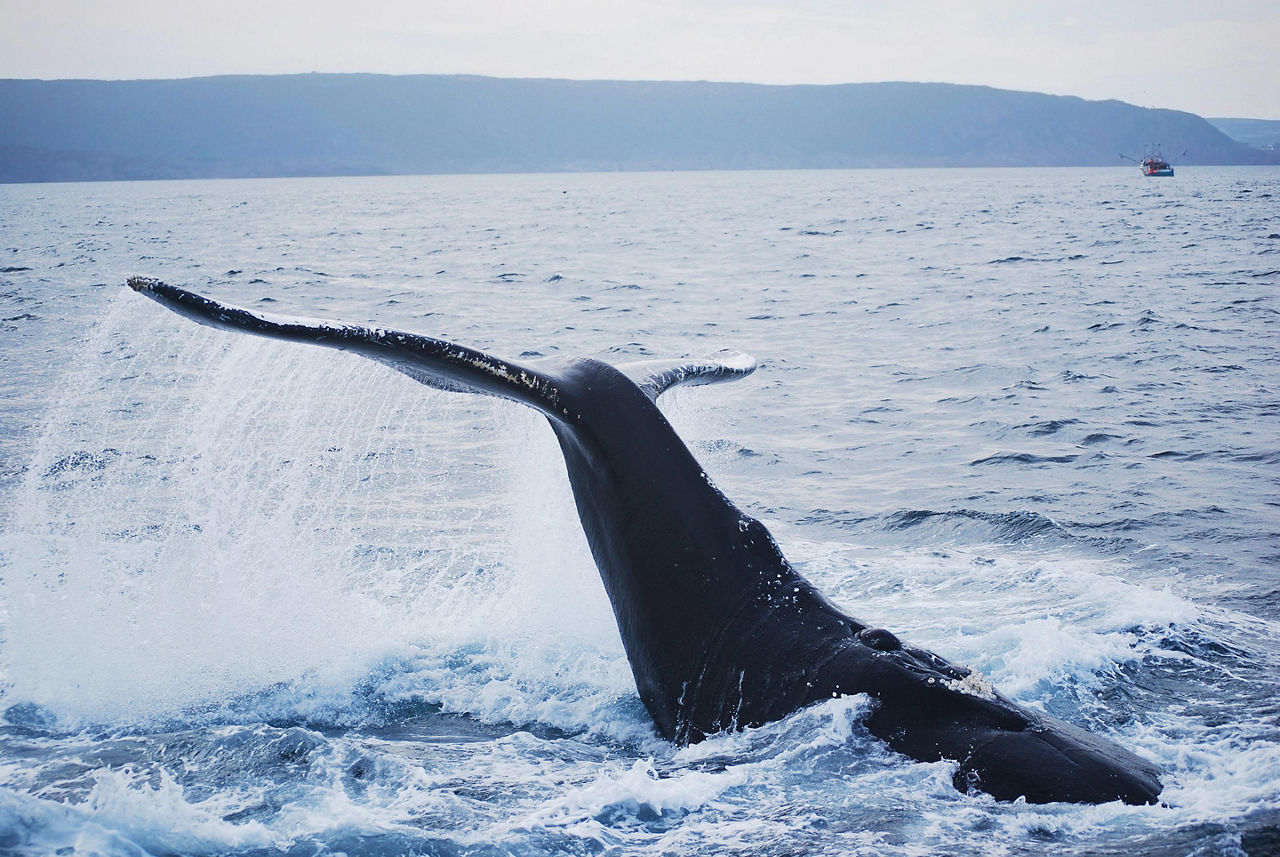
Hit the Bay
A humpback wale splashing its tail
Icebergs, humpback whales, puffins... Get out onto the Bay for an exhilarating tour of aquatic life. Or tour the islands that make up the Witless Bay Ecological Reserve, where you'll see birds galore, including black-legged kittiwakes, common murres and the largest puffin colony in North America.
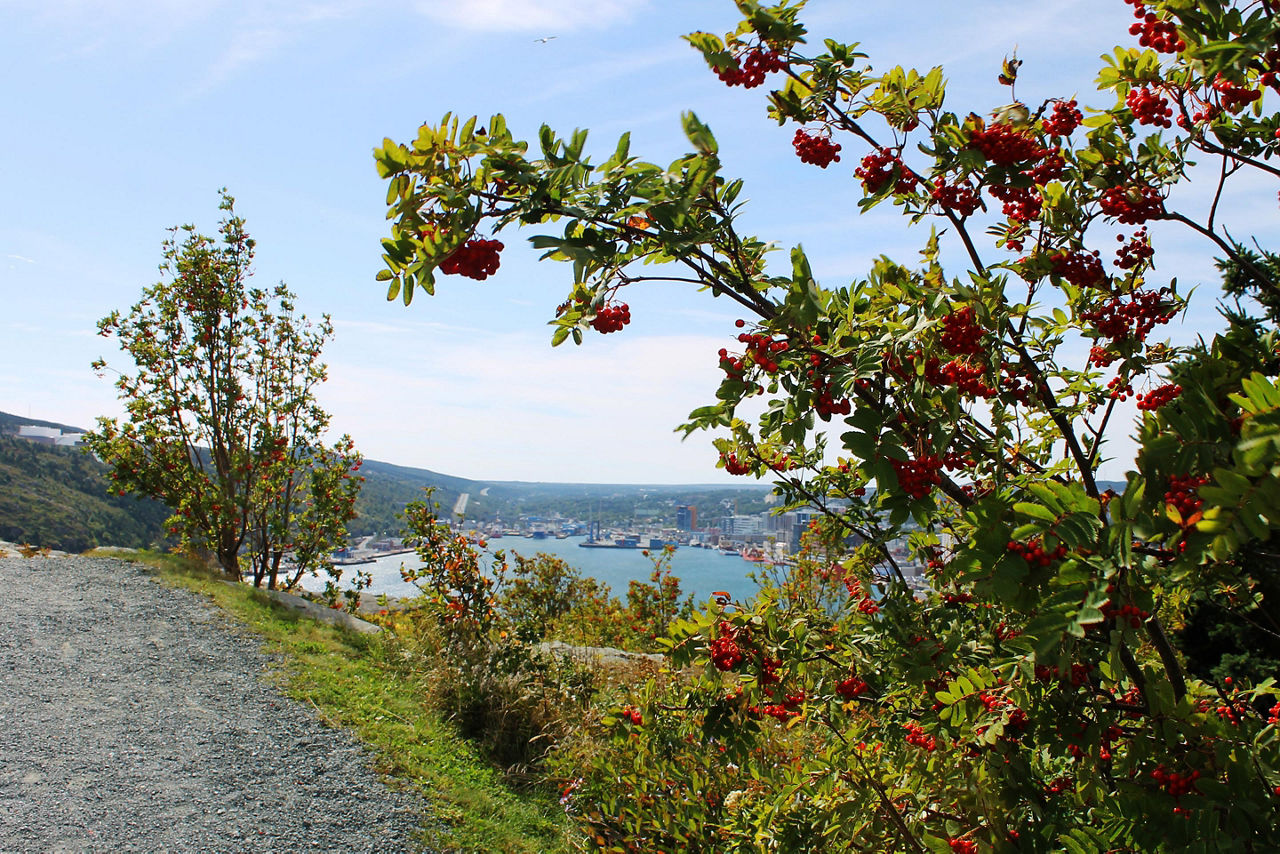
Put On Your Walking Shoes
View of St. John's harbor through some trees from Signal Hill
It's a hilly affair, whether you choose to hike the trails or the streets — St. John's boasts over 75 miles of walking trails within city limits. Marvel at the ancient rock cliffs that rise from the St. John's harbor, or amble along the North Head Trail and pick wild blueberries at Signal Hill.

Quench Your Thirst
You're in for a toe-tapping good time if you head to historic downtown St. John's. You'll find over two dozen pubs, clubs and bars on George Street. Locals keep the party alive while you get down to an Irish jig, the blues, dance music, country or good old rock n' roll.
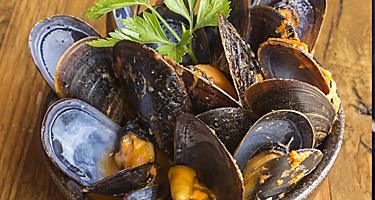
Local Cuisine
Newfoundland cuisine is in a category of its own, with unique items like scrunchions (crispy pork rinds) and toutons (fried dough served with mollasses). Try braised rabbit fritters or local blue mussels. Head to the Quidi Vidi district, where you'll find a local farm-to-table restaurant and a brewery featuring lager made from 25-thousand-year-old icebergs.
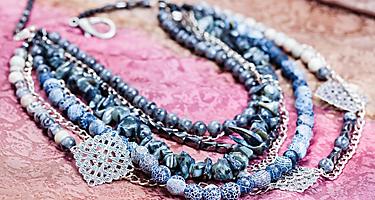
Head to Water Street and take a piece of St. John's with you. Heritage Shop goodies include labradorite jewelry, carvings, knitwear and preserves. Get onboard Canada cruises and make your way to Quidi Vidi and check out the Plantation, a destination shopping experience where you can visit artisans in their studios as they work and sell their wares.
Best Deals to St. John's, Newfoundland
These cruises are selling out fast, get them while you can.
Departs From {{card.portName}}
Onboard {{card.shipName}} of the Seas
{{ card.totalGroups }} Itineraries
We've circled the globe and couldn't find any sailings that match your search. View All Cruises
We're having trouble retrieving these cruises. View All Results
Similar to St. John's, Newfoundland
Previewing: Promo Dashboard Campaigns
My Personas
Code: ∅.
What's better than a boat full of Newfoundlanders? When it's a cruise in the Caribbean
Odd coincidence led to newfoundland takeover of tropical trip.

Social Sharing
A gaggle of Newfoundlanders found themselves at home — far, far away from home — after boarding a Caribbean cruise with hundreds of other passengers from the party-loving east coast province.
Pam Pardy noticed a smattering of local sayings upon entering the ship's deck earlier this month, hearing the distinct Newfoundland accent around her as soon as she boarded.
"First when you get on, you go and get your lounge chair. And the girl next to us … dropped her sunglasses, and she goes, 'Oh me glasses, I can't leave they,'" Pardy told CBC News on Tuesday.
"Everybody understood what everybody else was saying. 'Get in the elevator, my ducky!' Usually everybody's avoiding eye contact, waiting for you to get the next one."
About 500 Newfoundlanders ended up together on the Celebrity Apex, which left Fort Lauderdale, Fla., on April 6.
"From what I understand, it was just a total fluke," Pardy said.

Pardy booked the trip over a year ago with her family and friends, but noticed around Christmas that she knew an unusual number of people also, by chance, on the same boat.
Posts about the cruise circulated online, until finally Pardy got a call from her travel agent, who told her so many Newfoundlanders had ended up booking the cruise, the company was throwing them their very own party.
Pardy was confident the massive coincidence would lead to a "rollicking good time," she said, laughing.
Mark Hiscock's travel agent also told him they'd be shacking up for the week with a few hundred neighbours (and perhaps some distant relatives).
He didn't bring his accordion — "I was there to relax," he explained — but ended up singing during the onboard kitchen party, as others walked around the deck playing spoons.
"There was a lady down in the back, she was givin' 'er," Hiscock recalled.

Besides music and a wild gathering, what happens when you gather 500 Newfoundlanders on the deck of a tropical cruise ship?
"You get a lot of conversations, a lot of connections," said Darrin Feehan. "Running into old friends. It was almost like a high school reunion."
Pardy said meeting people from the rest of the world was also a blast — but she's already asking her travel agent if a Newfoundlander-packed cruise might be on the books next year.
"Let's see if we can spread the word and this can happen, because this was a lot of fun," she said.
"When you're on the islands and you're expecting island music, and you hear, 'Any Newfoundlanders here tonight?' That's incredible."
Download our free CBC News app to sign up for push alerts for CBC Newfoundland and Labrador. Click here to visit our landing page .

IMAGES
COMMENTS
Their Royal Highnesses will visit: St. John's, Newfoundland and Labrador on May 17. Canada's Capital Region on May 18. Yellowknife and Dettah, Northwest Territories on May 19. Program is subject to change. Date modified: 2022-05-19. A detailed itinerary of The Prince of Wales and The Duchess of Cornwall's 2022 Royal Tour in Canada.
Prince Charles and Camilla capped a whirlwind first stop on their three-day Canadian tour by pulling a couple of pints of beer in St. John's on Tuesday. The royal couple visited the provincial ...
Their Royal Highnesses The Prince of Wales and The Duchess of Cornwall will tour Canada May 17 to 19, 2022. The Royal Tour is one of many ways Canada is celebrating The Platinum Jubilee of Her Majesty Queen Elizabeth II in 2022. It will also be an opportunity to meet with inspiring Canadians who are making a difference in our communities. The ...
Today the Government of Canada unveiled the official itinerary for the upcoming Royal Tour this spring, part of the year-long celebrations marking the Platinum Jubilee of Her Majesty Queen Elizabeth II. From Canada's easternmost point to rich northern landscapes, Their Royal Highnesses The Prince of Wales and The Duchess of Cornwall will visit St. John's, Newfoundland and Labrador on May ...
Executive Council. April 11, 2022. Newfoundland and Labrador is to welcome Their Royal Highnesses, The Prince of Wales and the Duchess of Cornwall, to Newfoundland and Labrador in May as they begin their tour to Canada to celebrate the Platinum Jubilee of Her Majesty Queen Elizabeth II, marking her 70th anniversary on the throne. "As the ...
Sarah Brown, 33, a civil servant who lives in St. John's, Newfoundland, the first stop on the royal tour, said the monarchy was "at best irrelevant and at worst, it represents everything that ...
The Prince of Wales's first official tour to Canada was in 1970 and this visit will be the 19th time His Royal Highness has visited the country, having visited all ten provinces and three territories in the past. This will be The Duchess of Cornwall's fifth official visit; Her Royal Highness's first tour of Canada was more than a decade ...
During their stop in St. John's on Tuesday, Prince Charles and Camilla will visit Government House and walk in what officials say will be "solemn" reflection and prayer at the Heart Garden, a ...
Published 10:35 AM PDT, May 17, 2022. ST. JOHN'S, Newfoundland (AP) — Prince Charles and Camilla, the duchess of Cornwall, arrived in St. John's, Newfoundland on Friday, to begin a three-day Canadian tour to mark the 70th anniversary of his mother's ascent to the throne. The royal couple's itinerary includes stops in Ottawa and the ...
More than $17,000 in Royal Newfoundland Constabulary overtime for Prince Charles and Duchess Camilla visit to St. John's. Government staff 'volunteered' While some provincial government staff worked directly on the royal visit as part of their regular job duties, others whose day-to-day work does not involve ceremonial visits were asked if ...
Prince Charles and Camilla will be in St. John's on Tuesday, the first stop in a Canadian tour that marks Queen Elizabeth's Platinum Jubilee. Charles has been to St. John's twice before. He and ...
As an officer in the Royal Navy, Prince William Henry (later King William IV) was the first member of the royal family to visit the Newfoundland Colony, the colony of Nova Scotia, and the Province of Quebec (later Lower and Upper Canada), arriving halfway through 1786 and remaining until 1788, with a posting to the Caribbean and a return to the ...
The Princess Royal: Newfoundland: St. John's, St. Anthony, L'Anse aux Meadows, Red Bay, Corner Brook Nova Scotia: Halifax, Dartmouth, Pictou: To celebrate 75th anniversary of Beaumont-Hamel, visit Royal Newfoundland Regiment, attend the Gathering of the Clans, visit the Black Community Centre 9/13 - 9/16 The Duke of Kent: Ontario: Toronto ...
The tour of the royal couple ended with a visit to the Maritimes and then to Newfoundland (which was then still a separate Dominion of the British Empire), departing from Halifax. It was the first visit by a reigning monarch of Canada and also the first time a Canadian monarch had set foot south in the United States.
Flickr/Canadian HeritageQueen Elizabeth II was no stranger to travelling. She visited Canada 22 times in her life.The first visit was in 1951 when she was a princess and her most recent visit was in 2010.Several members of the Royal Family have visited the country over the years.From refuelling stops to official tours, the Queen has been in Newfoundland and Labrador a total of nine times.
The 1939 royal tour by King George VI and Queen Elizabeth was the first time a reigning Canadian monarch had set foot in this country. It was the most successful royal tour in Canadian history, with enormous crowds greeting the royal couple as they crossed the country by train. The tour, which included a four-day visit to the United States ...
Travelling here by plane is a popular option, and airlines fly into St. John's, Gander, Deer Lake, Happy Valley-Goose Bay, and Wabush. Flying times for direct flights to St. John's are about 3.5 hours from Toronto, 6 hours from Edmonton / Calgary, and 5 hours from London. Other international routes are available into the region via Halifax.
Where is Newfoundland? Newfoundland is a large island off the east coast of Canada and the most popular part of the province of Newfoundland and Labrador. Newfoundland occupies an area of 108,860 square kilometres (42,031 sq mi) and is the world's 16th-largest island and Canada's fourth-largest island. Best Time to Visit Newfoundland
Royal Visit . Instructions: Use your mouse to drag and double click to zoom in on an area. Single click an item to view its details. Submit your video. Send Us Your Photo * Name
As an officer in the Royal Navy, in command of HMS Pegasus, Prince William Henry (later King William IV) was the first member of the royal family to visit the Newfoundland Colony, arriving on 10 April 1786.
On May 1, 1939, the Canadian Royal Train would do a round trip test with six of the Royal Train Cars, pulled by Locomotive 6028, from Montreal to Brockville, Ontario. On May 9, another test run was conducted with 12 cars and Locomotive CP 2850 taking over. The 12 cars would include room for 20 domestic servants for the Royal Couple, Prime ...
Their Royal Highnesses will visit St. John's, Newfoundland and Labrador, Canada's Capital Region and Yellowknife and Dettah, Northwest Territories from May 17 to 19. OTTAWA, April 26, 2022 Today the Government of Canada unveiled the official itinerary for the upcoming Royal Tour this spring, part of the year-long celebrations marking the ...
Set against the backdrop of the wild Atlantic sea, St. John's is defined by animated locals, colorful houses and its own brand of folk music. In the capital of Newfoundland — the island of fishing villages, kitchen parties and bakeapple jam — you can marvel at historic landmarks dating back to John Cabot's voyage in 1497, before you hit the town to join in the lively pub scene.
About 500 Newfoundlanders ended up together on the Celebrity Apex, which left Fort Lauderdale, Fla., on April 6. "From what I understand, it was just a total fluke," Pardy said. Pam Pardy, in ...